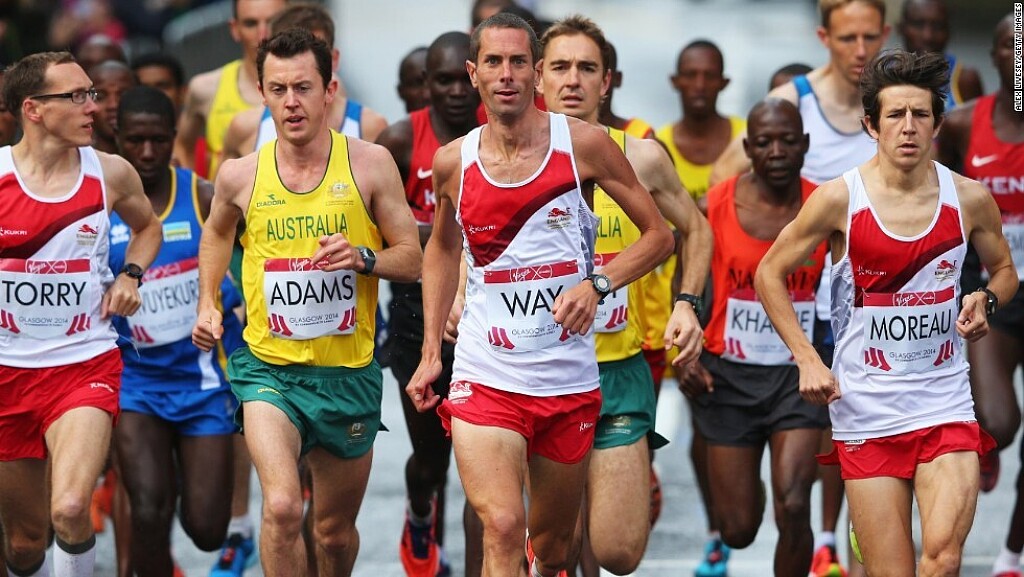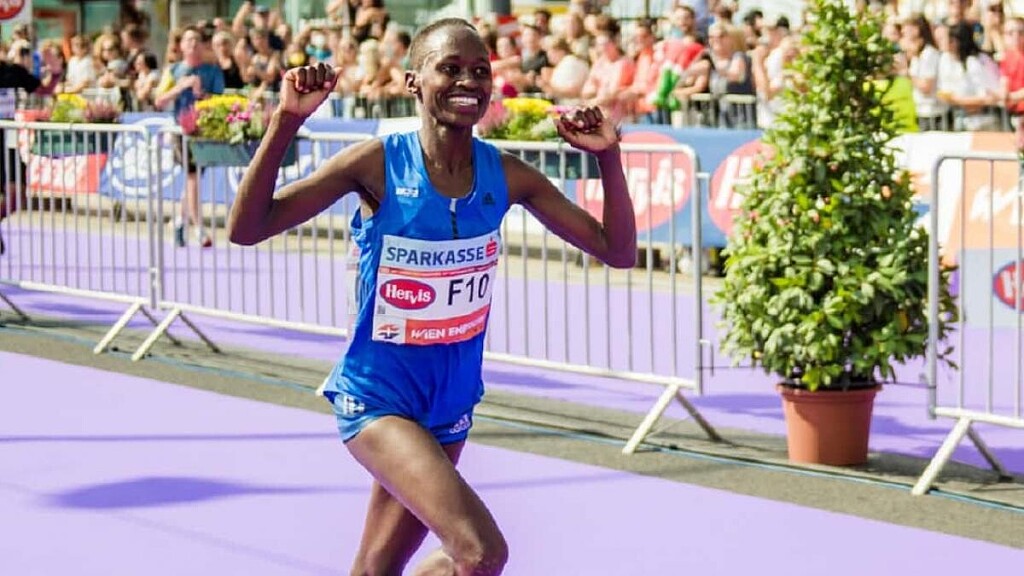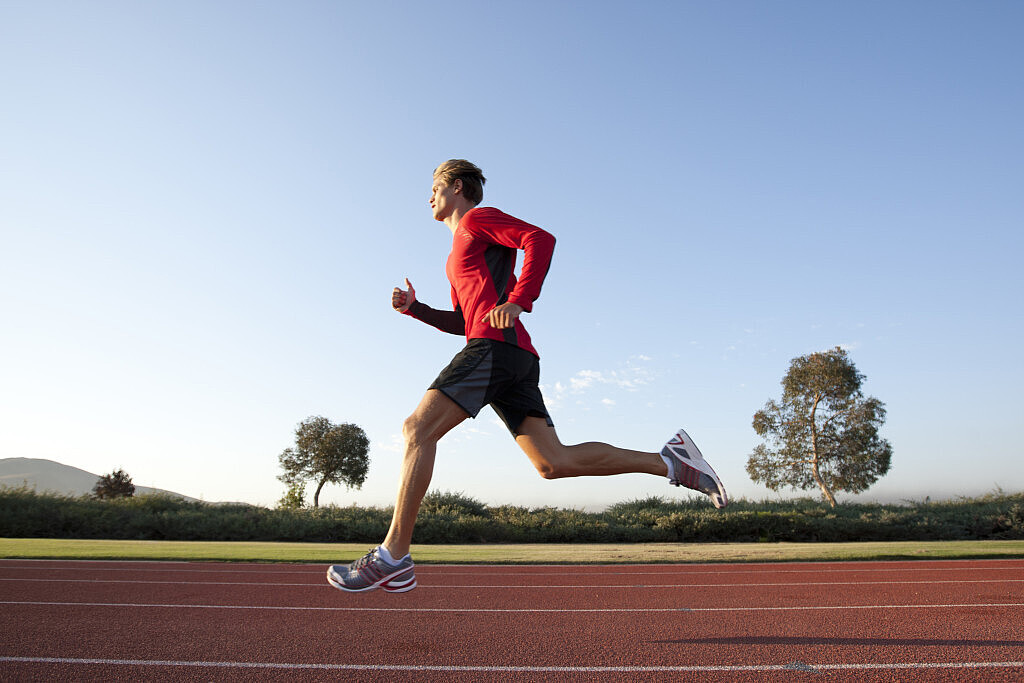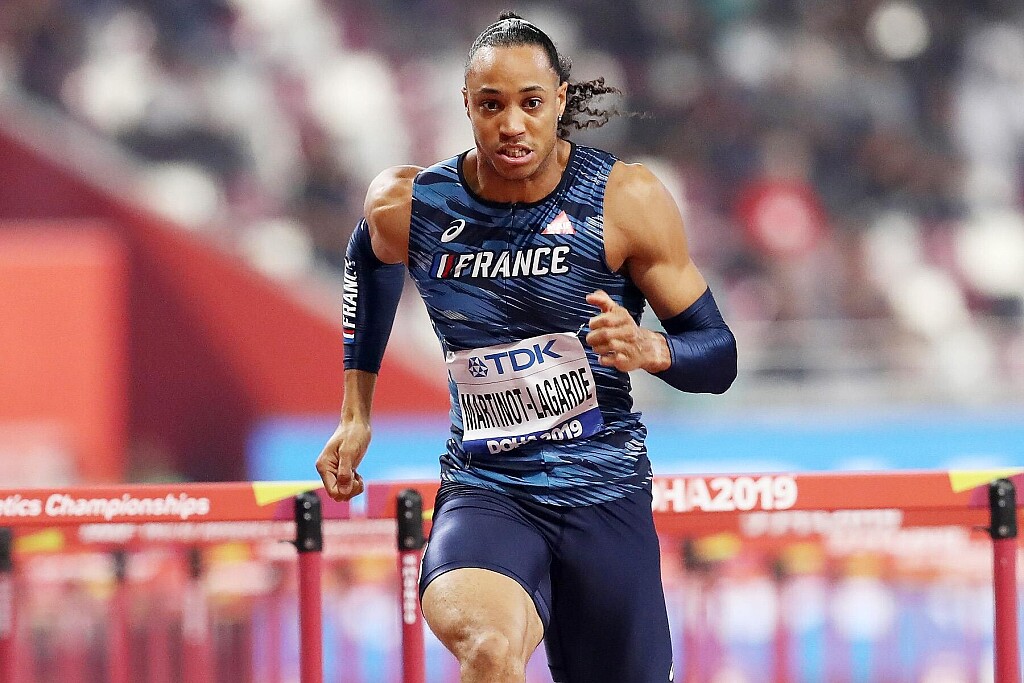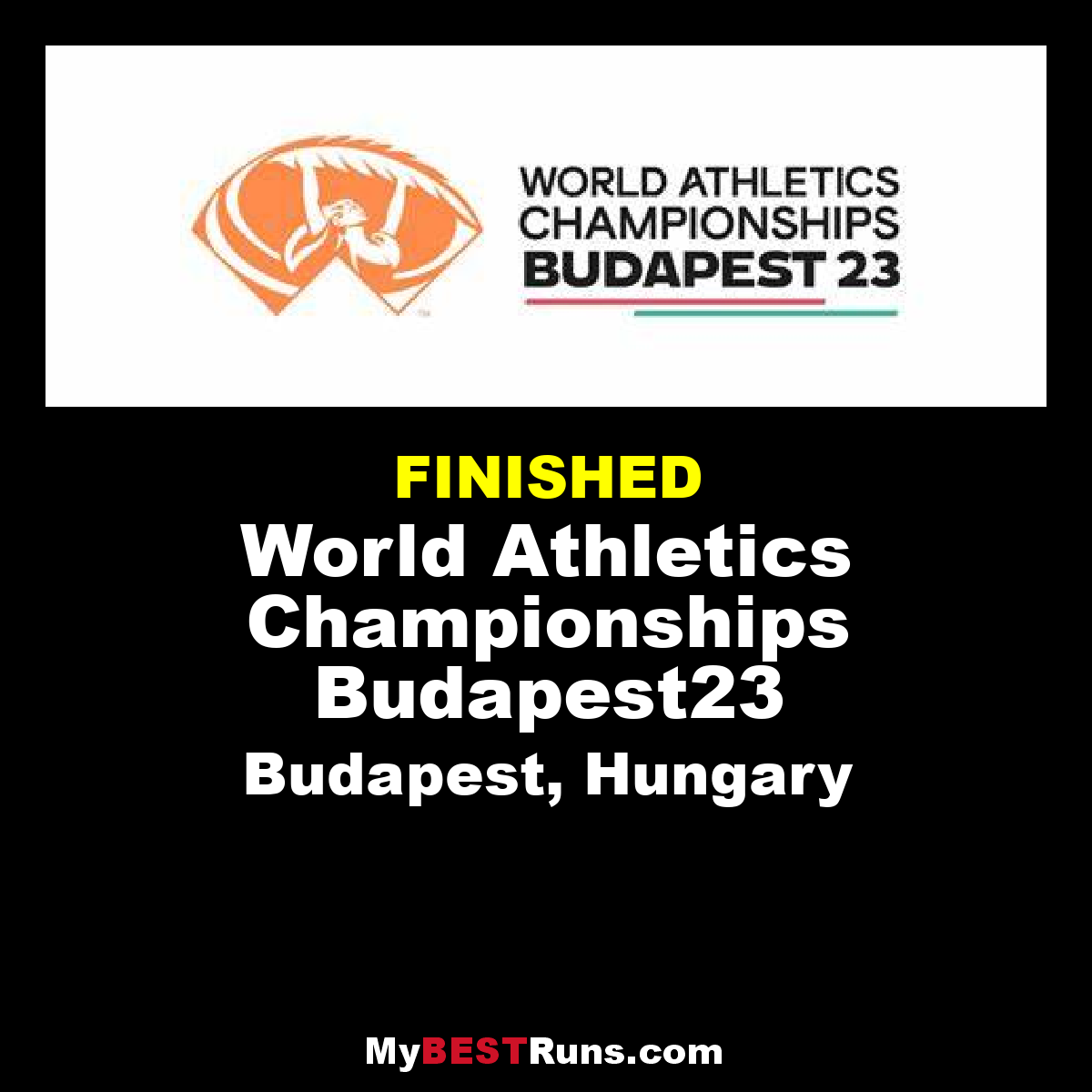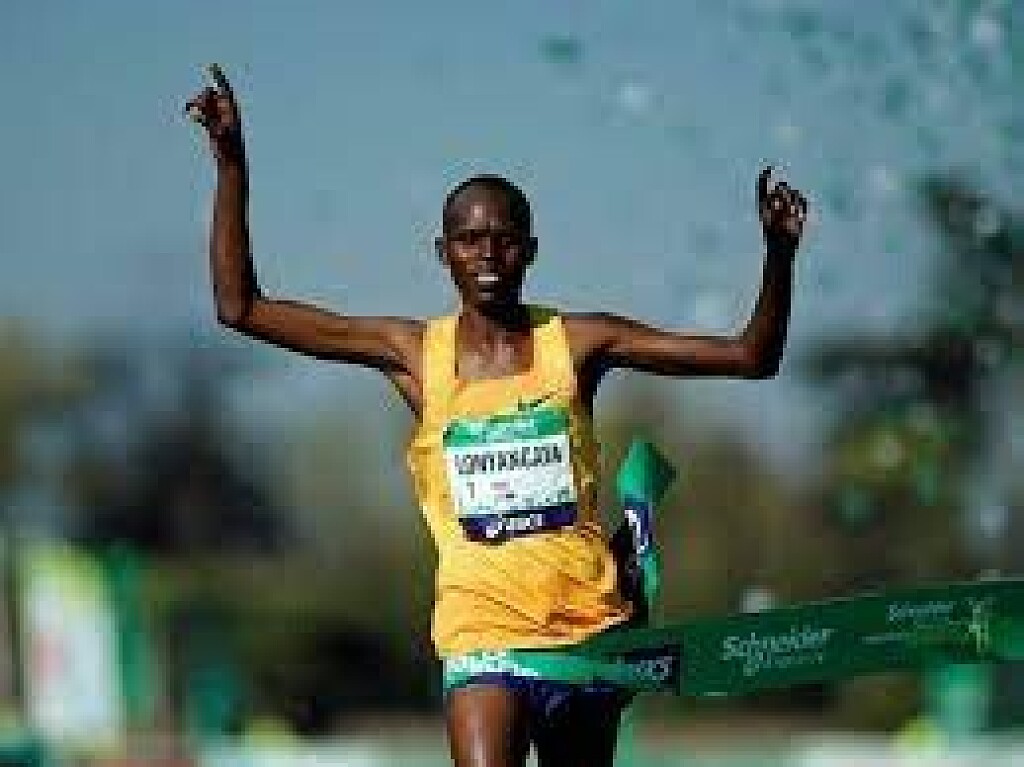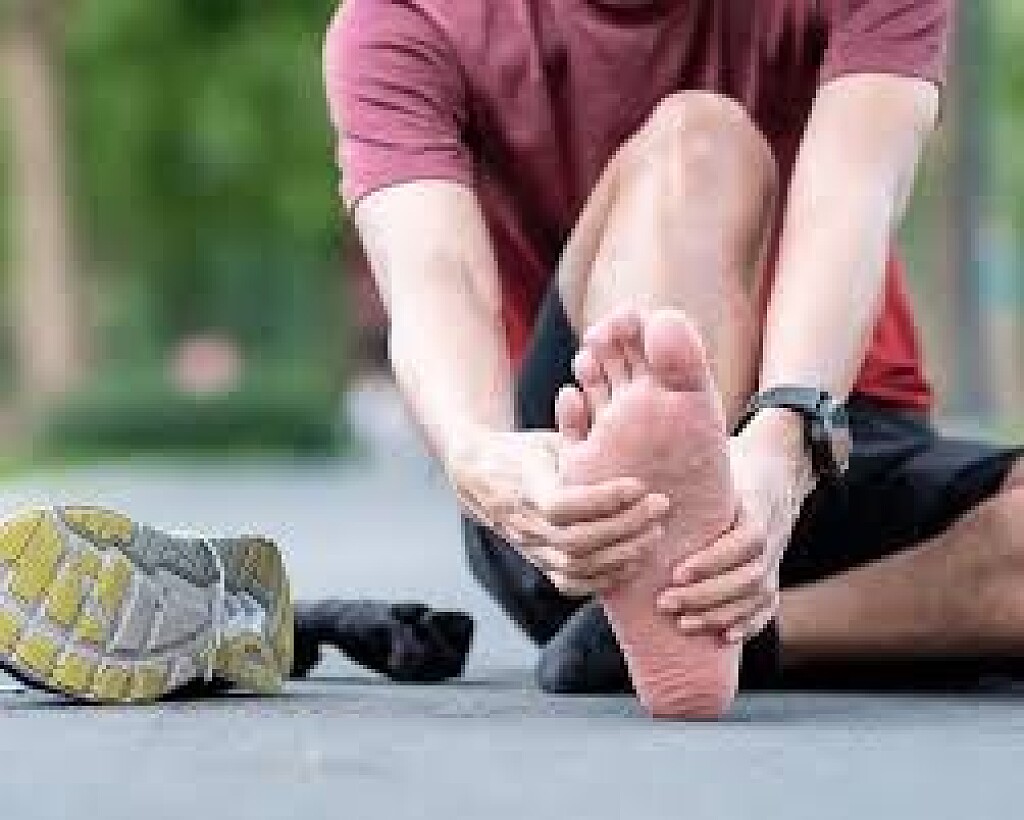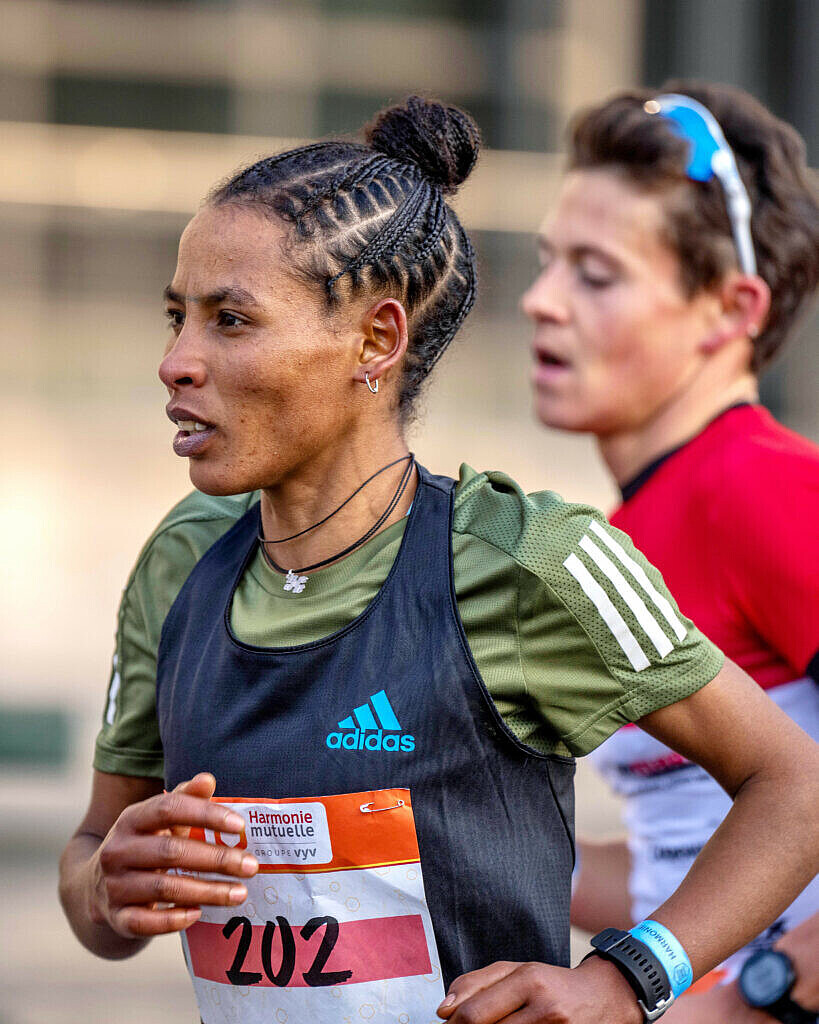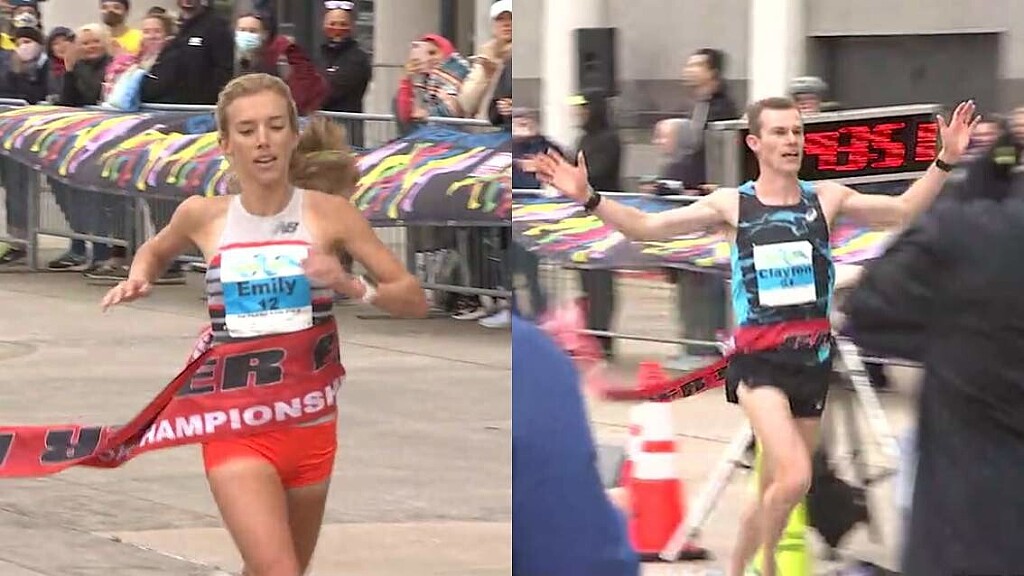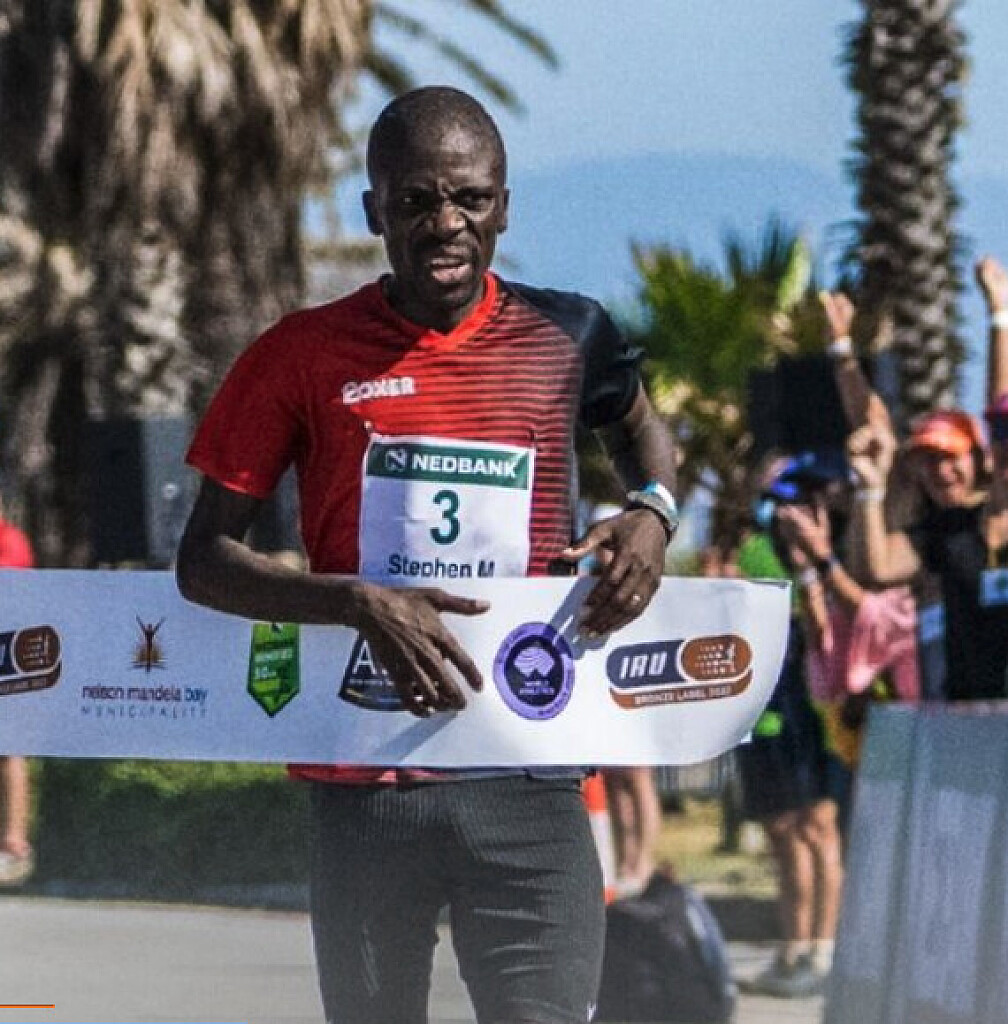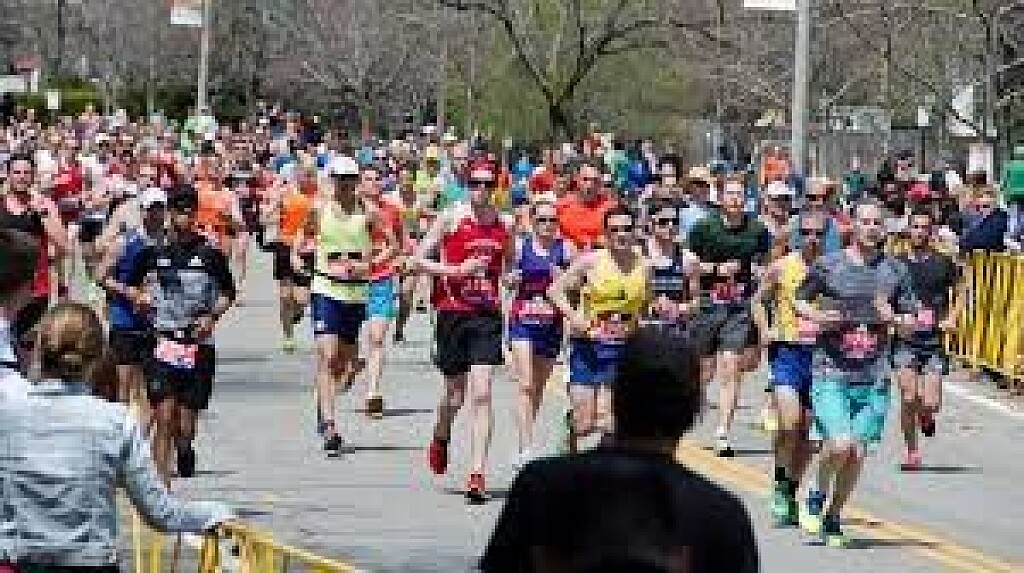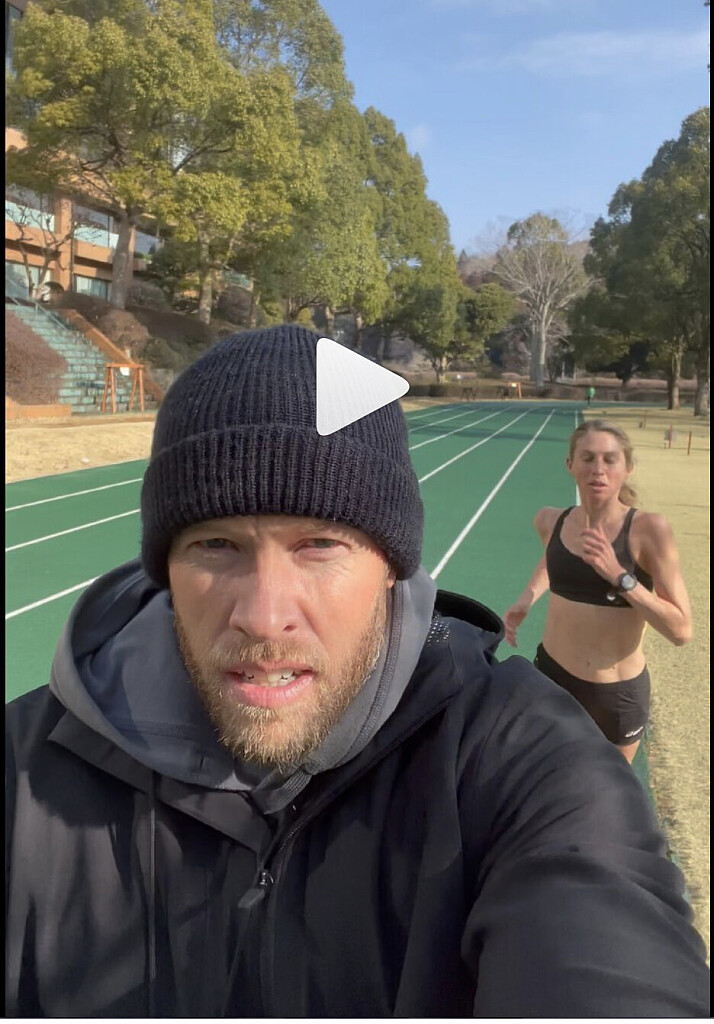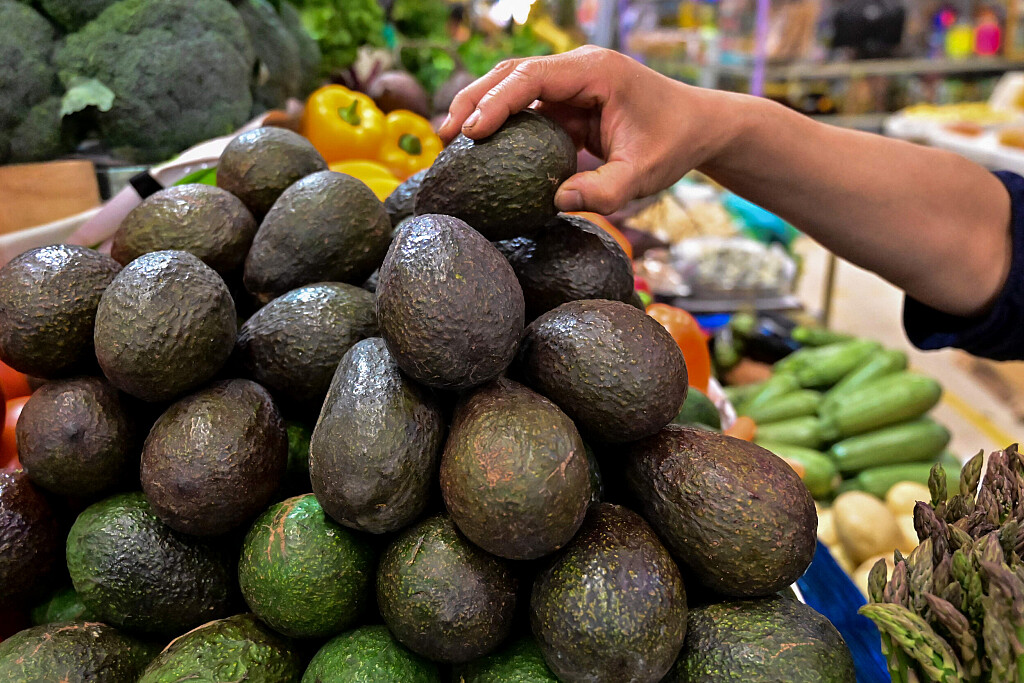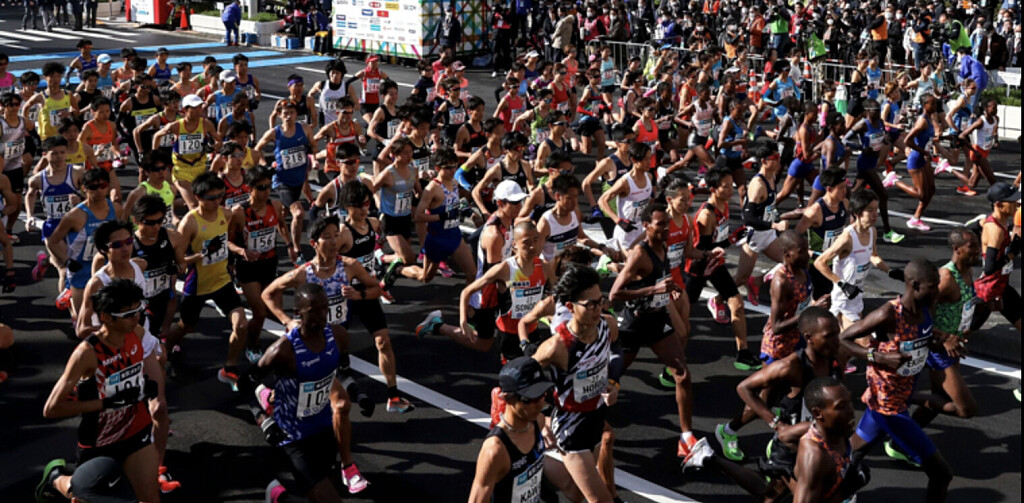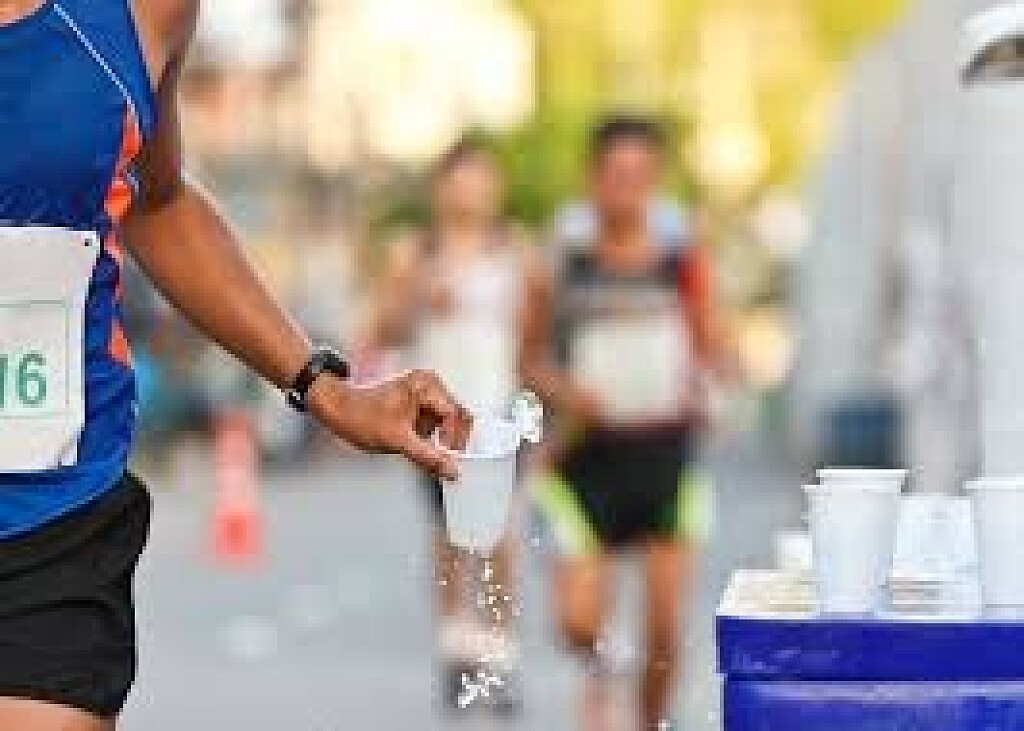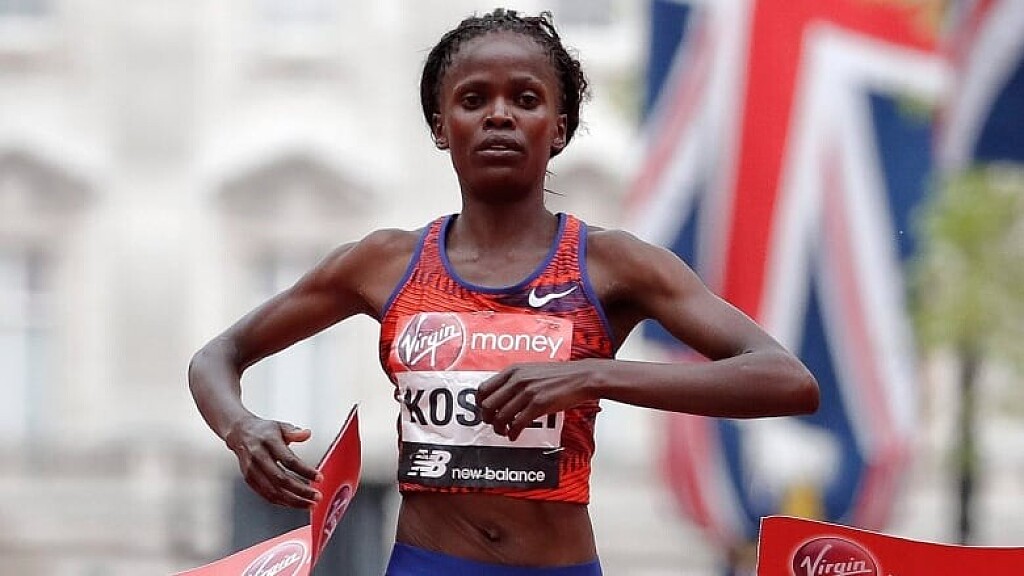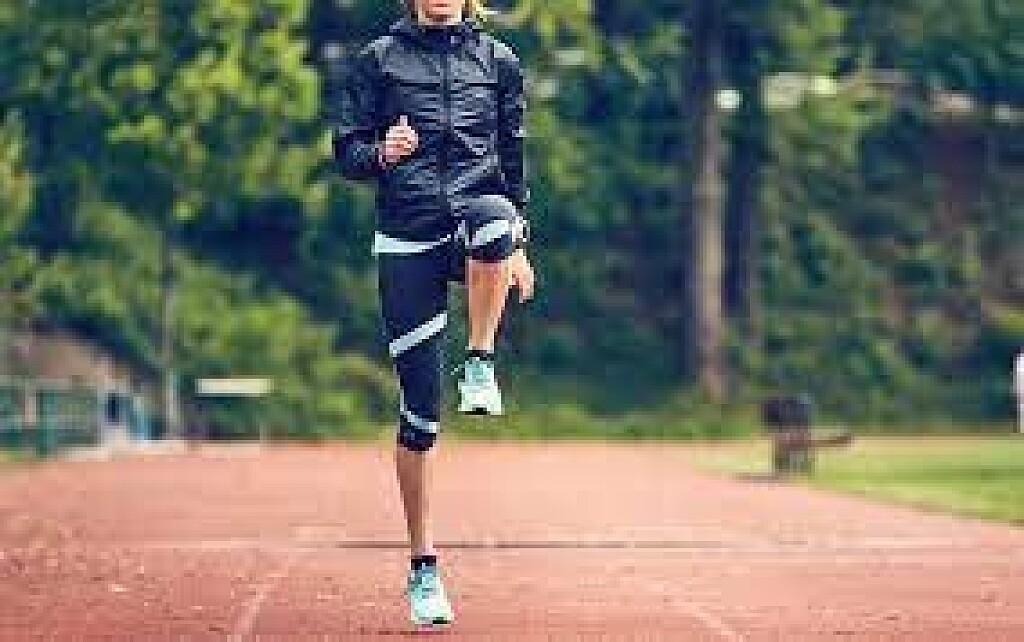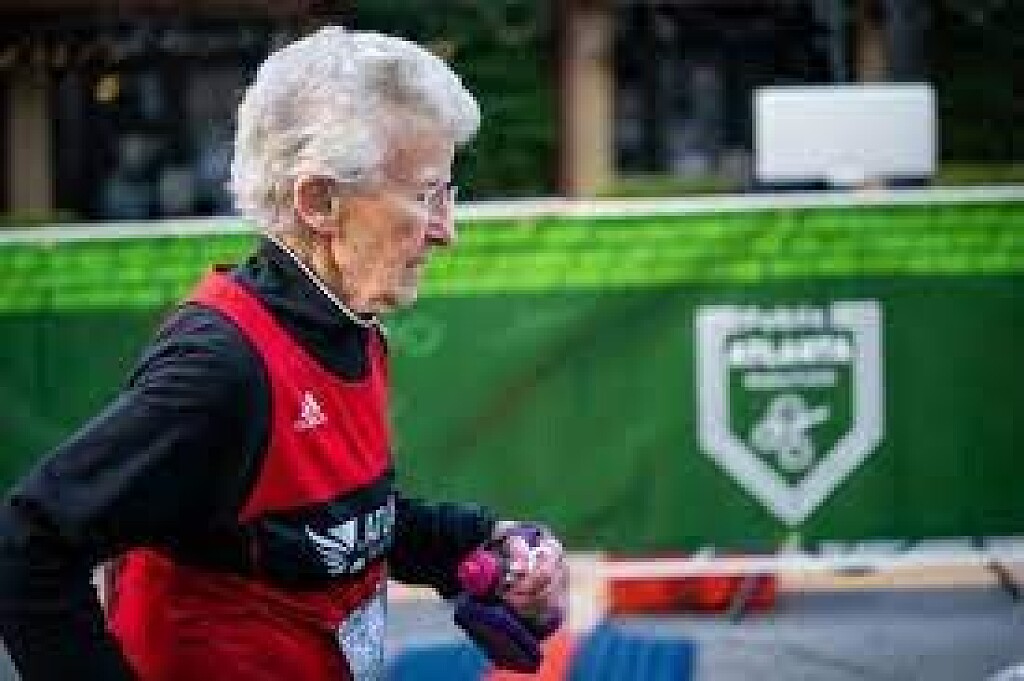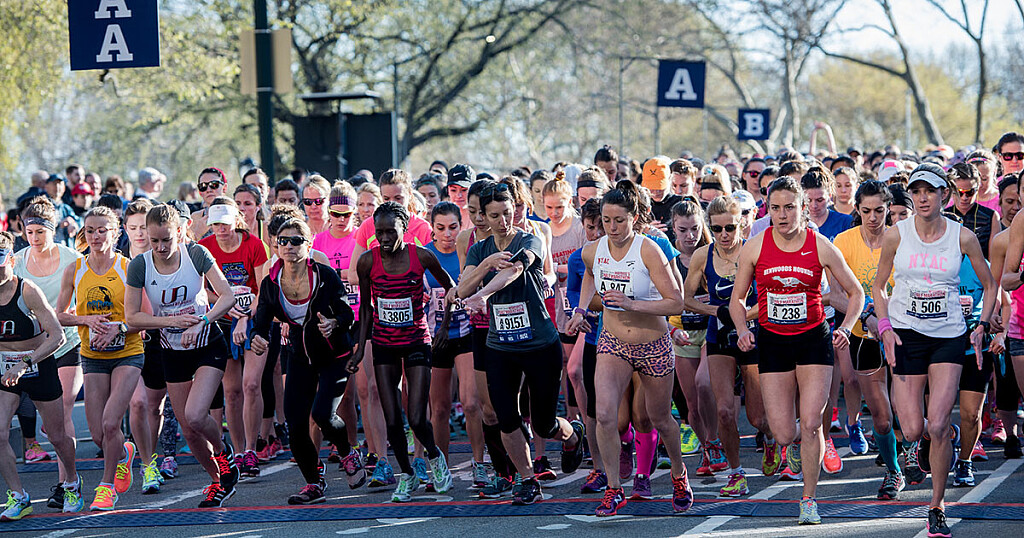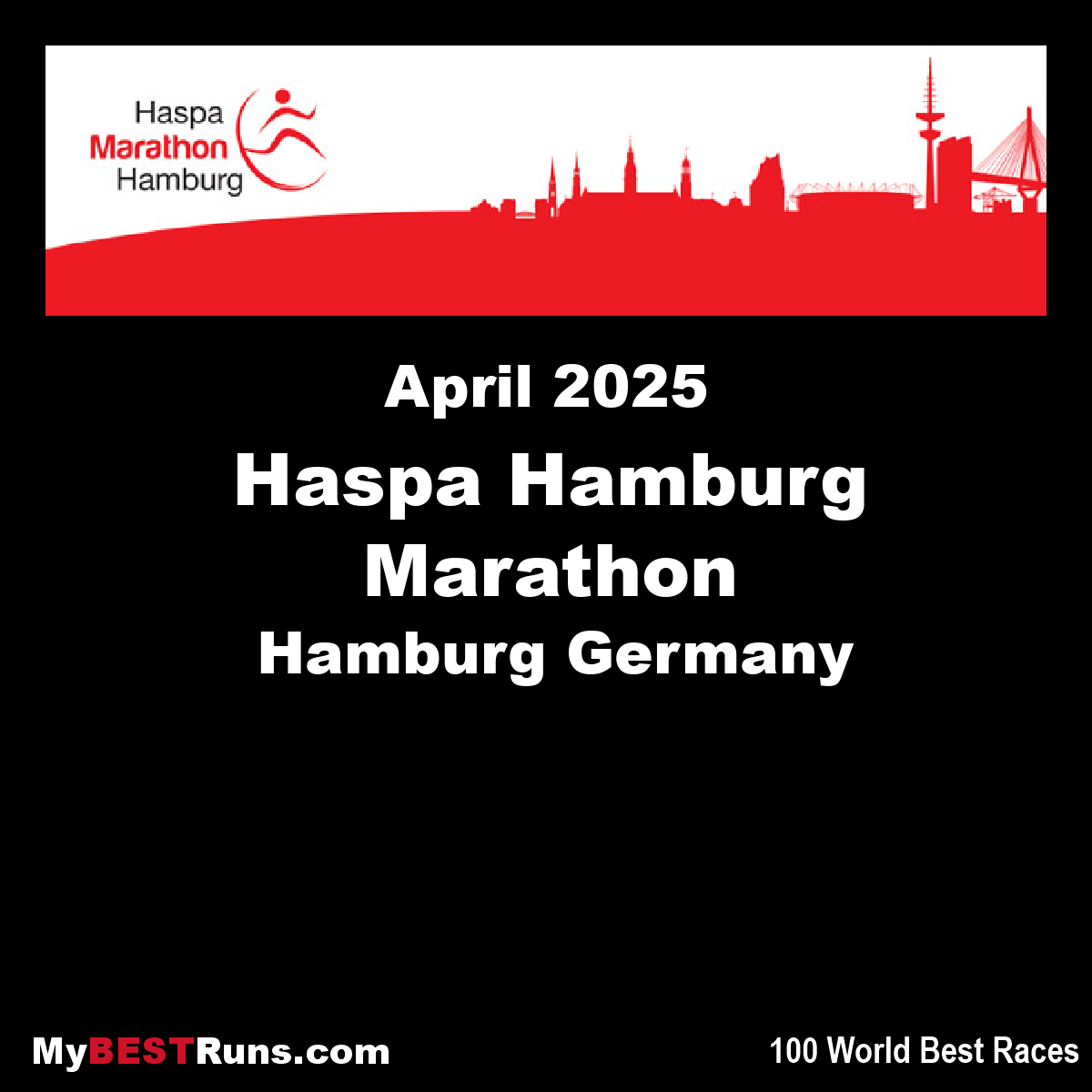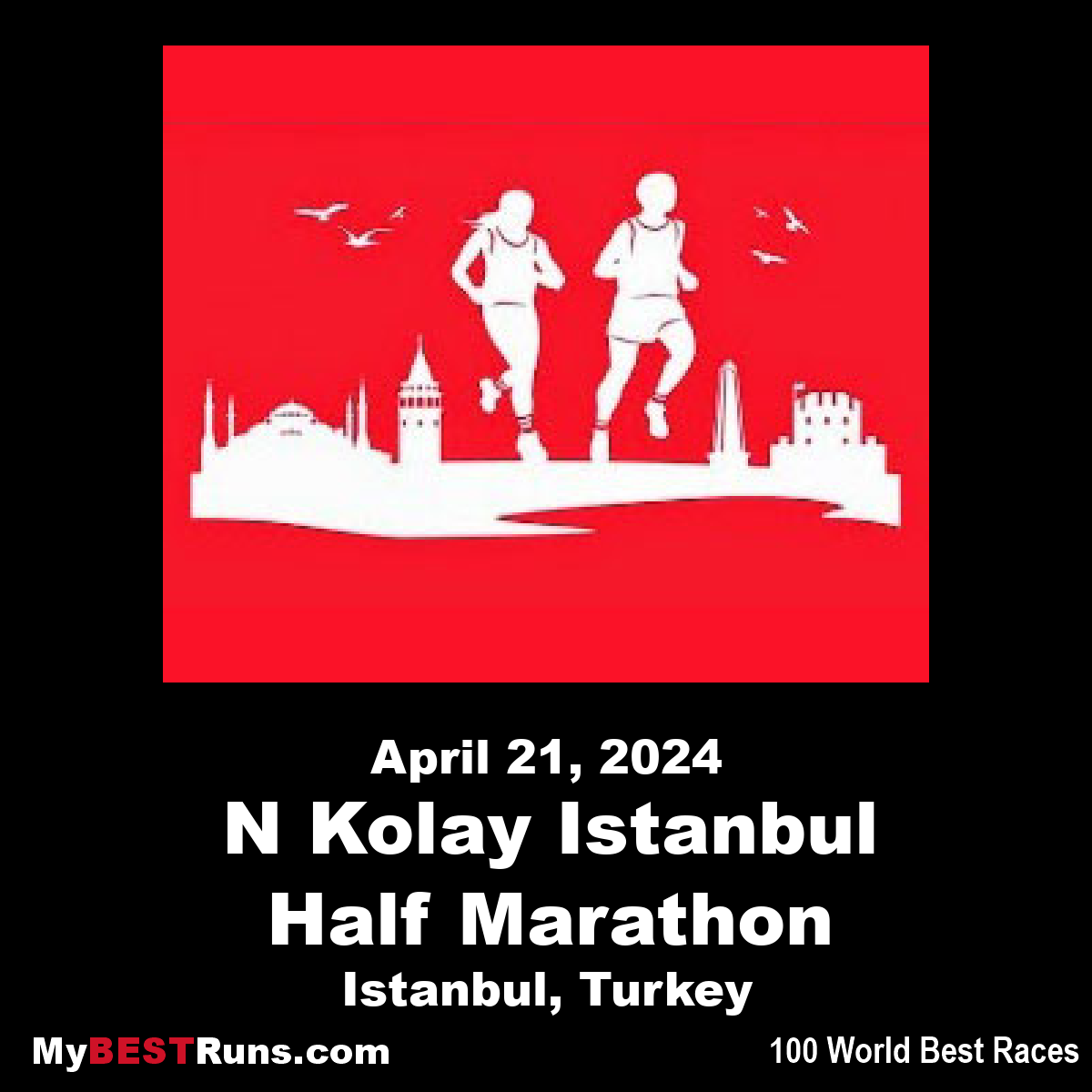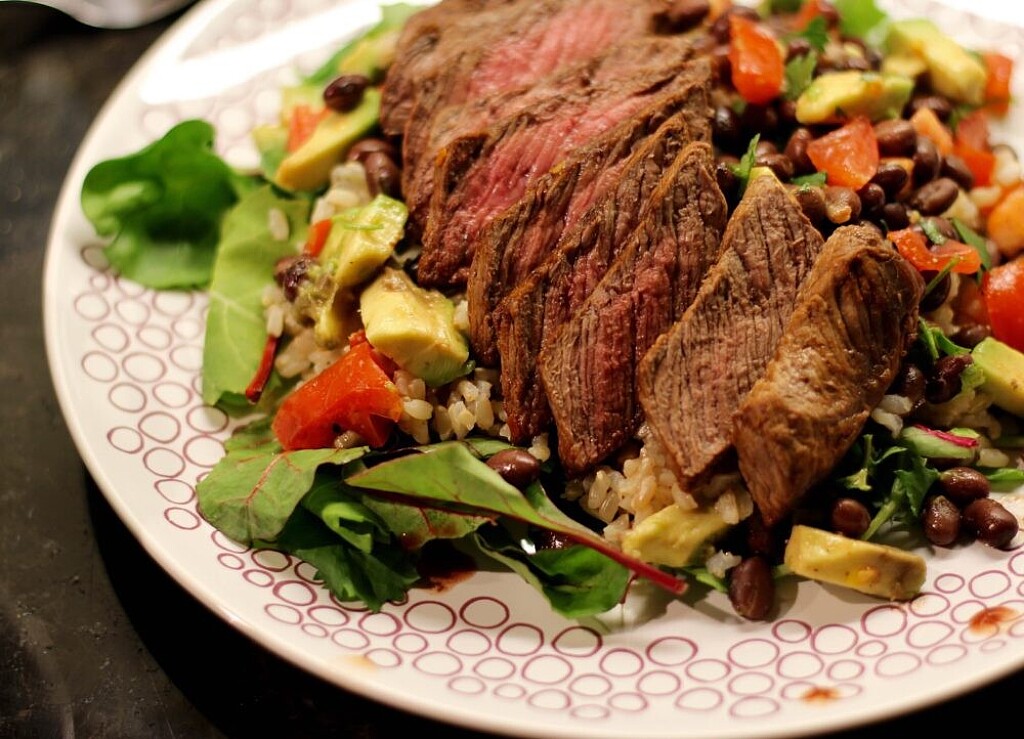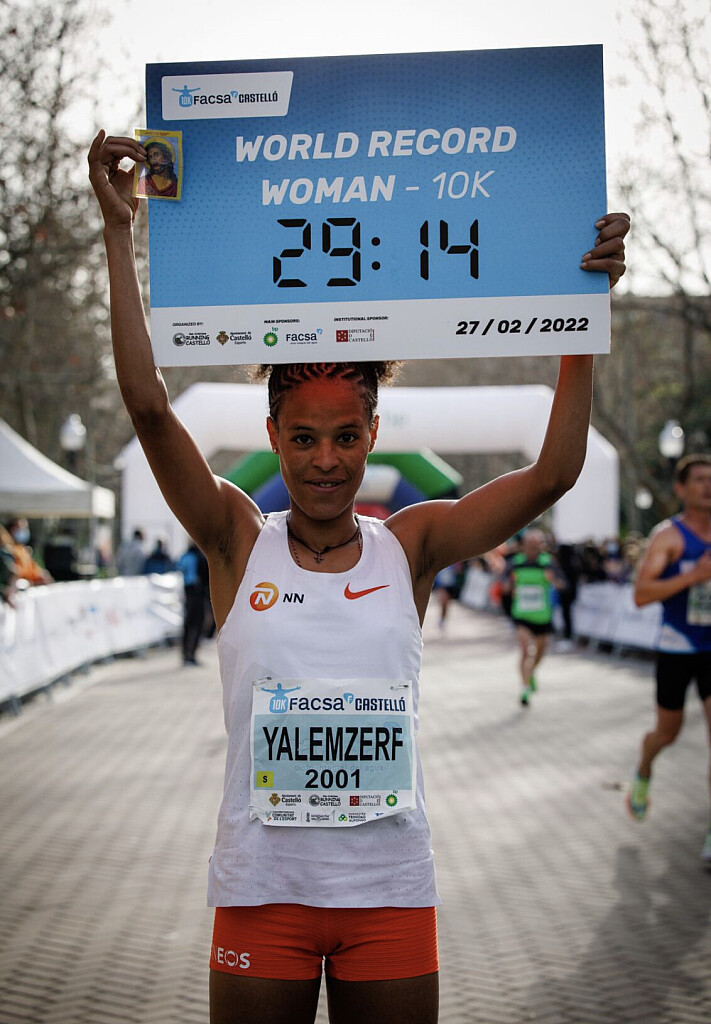Running News Daily
Running News Daily is edited by Bob Anderson in Mountain View, California USA and team in Thika Kenya, La Piedad Mexico, Bend Oregon, Chandler Arizona and Monforte da Beira Portugal. Send your news items to bob@mybestruns.com Advertising opportunities available. Over one million readers and growing. Train the Kenyan Way at KATA Running Retreat Kenya. (Kenyan Athletics Training Academy) in Thika Kenya. Opening in june 2024 KATA Running retreat Portugal. Learn more about Bob Anderson, MBR publisher and KATA director/owner, take a look at A Long Run the movie covering Bob's 50 race challenge.
Index to Daily Posts · Sign Up For Updates · Run The World Feed
Commonwealth Games auto-qualifying standards are ludicrously difficult
The 2022 Commonwealth Games standards released by Athletics Canada have been causing a stir on social media due to the fact that to secure automatic qualification in most events, you would need to run a Canadian record.
The standards were set by Athletics Canada based on the average performances of the top three Commonwealth athletes during the past three track and field seasons; in most events, these “standard” times would have earned Canadian athletes medals in Tokyo.
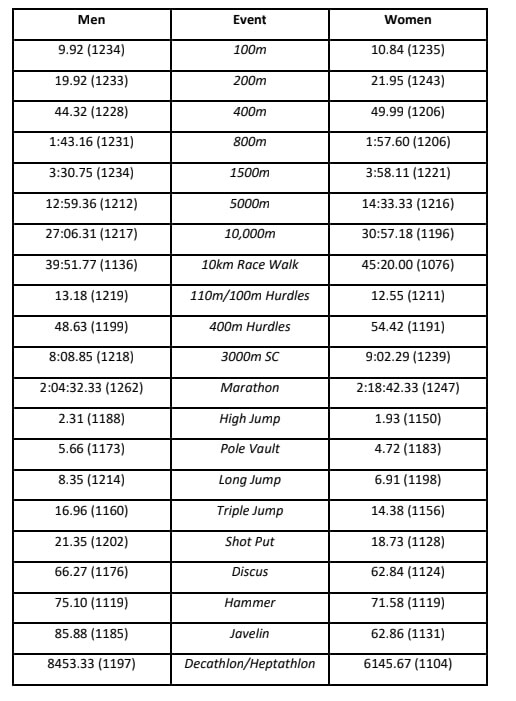
Note that Athletics Canada has been given a maximum team quota: it can send 31 athletes to the Games. Athletes will be eligible to make the team based on their season’s best performances–a similar approach to the Tokyo Olympic team selection this past summer.
According to the document released Wednesday, eligible athletes be ranked based on their proximity to the standard. The top athletes with the highest ranking will be selected.

Athletes who were ranked in the World Athletics top 50 but missed the Olympic standard last year, still made the Tokyo Olympic team. Although the standards for the 2022 Commonwealth Games are higher, the same selection regulations apply. Canada’s top-performing athletes will still be selected for these Games, regardless of the standards.
The 2022 Commonwealth Games start following the 2022 World Championships from July 28 to Aug. 8.
(03/10/2022) ⚡AMPby Marley Dickinson
The Commonwealth Games
The Commonwealth Games are coming to Victoria - bringing an action packed sports program to our regional cities and delivering a long-term legacy for our future. From 17 to 29 March 2026, Geelong, Bendigo, Ballarat, Gippsland and Shepparton will be on the world stage, attracting millions of viewers and creating thousands of jobs. The multi-city model will...
more...Race nutrition for every distance
Race nutrition is tricky, and knowing exactly what type and how much fuel to take in during a race can take some trial and error. Sports nutritionist Anne Guzman addressed this in a recent blog post, and while her guidelines focused on cyclists, they are very applicable to runners. So, whether you have a 5K or a marathon on the schedule, take a look at her advice to perform your best on race day.
30 min — one hour
The first category in Guzman’s infographic can be equated to a 5K-10K race for most runners. For these short races, just drinking water will likely be enough, provided you’ve eaten well the night before and the morning of the race to ensure your glycogen stores have been topped up.

If you’re running a 5K on a temperate day, for example, simply drinking some water before the race and re-hydrating afterward will be adequate — no mid-race drink necessary. On a hot day, you may want to consider grabbing a few sips of water from the aid station, but even then, as long as you’re well-hydrated going into the race, you likely won’t need much while you’re running.
As your race gets longer (up to an hour), Guzman says carbohydrate mouth rinses can help “lower our perception of pain and/or send messages to muscles leading to additional recruitment of muscle fibers,” although, she admits, the mechanism behind how this works is still somewhat unclear.

Similarly, she says consuming a small amount of carbohydrates in the form of a sports drink or a gel with water can help improve performance as your race gets a bit longer. Still, if your race is less than one hour, this extra carbohydrate isn’t crucial to your performance, and runners should be careful to only do what they’re comfortable with/what they have practiced, to prevent stomach issues.
10K — half-marathon
If your race is lasting longer than an hour, taking in carbohydrates during the race becomes more important for delaying fatigue and improving performance. While Guzman makes a few different suggestions for cyclists, runners completing these distances should probably stick to sports drinks and gels, since running can be a bit harder on your stomach than cycling.
Guzman suggests taking in 30-60 grams per hour, from either a single carbohydrate source (like glucose) or a mix (like glucose, sucrose and fructose). Whatever carbohydrate source you choose, make sure you eat it earlier in the race so your body will be able to use it in the latter stages when fatigue is starting to set in.
Marathon and up
As experienced marathon runners know, your mid-race fuel can make or break your performance, since runs of this duration surpass the amount of carbohydrates your body can store. To have success in events lasting longer than two hours, it’s crucial that you go into the race with a fuelling plan, and that you are strict about sticking to that plan.
Most experts recommend taking in about 60 grams of easy-to-digest carbohydrates per hour during a marathon. Again, unlike cyclists, marathoners should stick to drinks, gels and chews to get their carb fix, since those tend to be easier on your digestive system (not to mention they’re easier to carry with you, as well). Of course, once you move up into the world of ultrarunning, you’re going to need even more carbohydrates to get you to the finish line, and runners in these events can start to add denser foods, like potatoes, waffles and energy bars into the mix.
The fuelling strategies for marathoners and ultramarathoners often look quite different, but they have one thing in common: runners must practice them before their race. Stomach issues can ruin your performance on race day, so it’s important to practice ahead of time to know what works and doesn’t work for you.
(03/10/2022) ⚡AMPby Brittany Hambleton
Five reasons why running in the rain isn’t so bad
As the winter season moves on toward April showers, we are here to let you know that you shouldn’t let the rain, rain on your parade. A bit of rain has never hurt anybody, and it is certainly no reason to skip your run. Running in the rain is a great opportunity to boost your mental confidence and physically prepare yourself for harsh conditions on race day.
Here are five reasons why running in the rain isn’t as bad as you think:
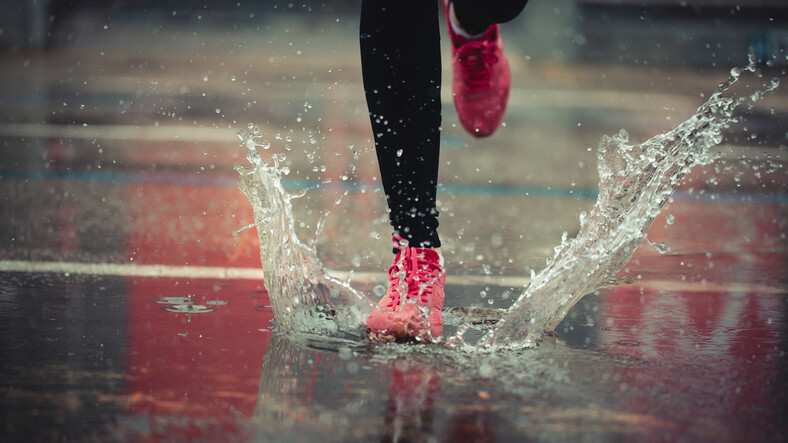
It’s fun and refreshing
We’ve all been out for a run on a hot day, looking for water to cool us down. When you head out on a rainy run, it’ll help your body remain cool. If you can have fun with rain-running and ignore the fact that your shoes are wet, it isn’t as bad as you think.
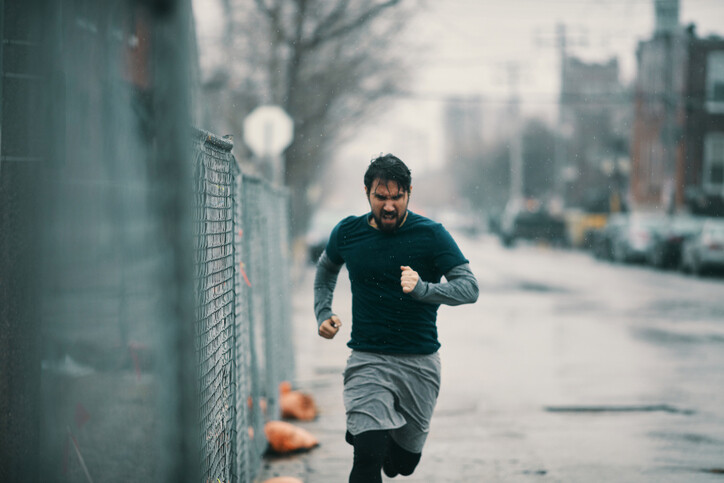
Most runners will avoid going out and head to the treadmill, but those who run in the rain, usually deserve extra kudos.
You are going to shower anyway
You are likely to shower after your run regardless, so what does a little rain hurt? The rain will only feel uncomfortable for the first couple of minutes, then you are wet. Getting into a warm shower or bath after a rainy run can be one of the best feelings.
It can help your immune system
Rainy runs train your immune system to grow, just as it does your muscles and endurance. The combination of movement and the differences between the temperature outside and your body temperature, force it to adapt to rainy conditions. The more you expose your body to train in different weather, the better you’ll be able to perform, no matter the conditions.
Rain helps performance
If it is raining during your speedwork session, the rain might help you more than it’ll slow you down. This is because your body temperature rises as you run, and the rain naturally keeps you cool. The warmer the temperature is, the more you have to sweat to cool off, especially if you throw humidity into the mix. Rain acts as Mother Nature’s air conditioner to keep your body temperature down during a workout, therefore you can keep your effort up.
Mental preparation
The strategy behind running in the rain is all mental. Going for a rainy run can strengthen both your body and mind, which can prepare you to face the fiercest conditions during training and on race day. To gain that mental strength, you first need to convince yourself to get outside. Then, you need to tell yourself that running in the rain isn’t too bad.
(03/10/2022) ⚡AMPby Marley Dickinson
Marathon gold medalist Yuka Suzuki going for collegiate record in debut at Nagoya Women's Marathon
Part of the qualification process for this summer's Oregon World Championships and the 2024 Paris Olympics marathon trials, the Nagoya Women's Marathon takes place this Sunday, Mar. 13. One of the women who will be lining up is star 22-year-old collegiate distance runner Yuka Suzuki.
A 4th-year at Daito Bunka University with a best of 31:37.88 for 10000 m, Suzuki won the gold medal in the World University Games half marathon her 2nd year of college. Ever since then, the Olympics have been a clear target.

"I want to go for the Paris Olympics, and even higher goals," she says. "That's why I want to run my first marathon before I graduate."

Suzuki also has an artistic side. Holding up a picture she drew she says, "This is the scene of entering Nagoya Dome right before the finish. When I was young I wanted to be a manga or anime artist." She has painted since she was a child, and sometimes she gives teammates drawings or paintings for their birthdays.
Suzuki's goal in Nagoya is to break the collegiate women's marathon record of 2:26:46, set 8 years ago by Sairi Maeda. "I'm going after it seriously," she says. "I want to run confidently. If I can run up to my potential then there's nothing to be afraid of."
(03/10/2022) ⚡AMPby Brett Larner
Nagoya Women's Marathon
The Nagoya Women's Marathon named Nagoya International Women's Marathon until the 2010 race, is an annual marathon race for female runners over the classic distance of 42 km and 195 metres, held in Nagoya, Japan in early March every year. It holds IAAF Gold Label road race status. It began in 1980 as an annual 20-kilometre road race held in...
more...Try this race-specific workout in your final phase of marathon training, this workout will get you ready to toe the line of your next marathon in your best shape yet
The spring marathon season is just around the corner, which means many Canadians are in the final four to six weeks of training for their goal races. This last phase of training should focus on race-specific workouts, and this session perfectly fits that description. If you’ve got a marathon on the horizon, add this workout into your schedule to get yourself into PB shape.
What is race-specific training?

Throughout your marathon build, you go through different phases of training. You start with base training (when you’re building up your mileage), then begin adding in harder workouts to improve your fitness ahead of race day. The final four to six weeks, however, is when you need to start preparing your body for the specific demands of your race.
What does that mean, exactly? This usually means running at or close to your race pace with short rest so your body is ready to handle your goal race pace. Ideally, you want to mimic the conditions of your chosen race as closely as possible. Of course, you can’t (and shouldn’t) replicate the demands of a marathon in a single training session, but workouts like the one below will help you practice running at your threshold, which will teach your body to burn fat efficiently for fuel and to run your goal pace, even when you’re tired.
The workout
This workout is meant to be run slightly faster than your goal marathon pace (about 10 seconds per kilometer faster, to be precise). It’s important to pace this correctly because running too hard will actually prevent you from getting the desired training effect.

Warmup: 1-2 kilometers easy running
Workout: 2 x 9-10K, with 10 minutes rest between each 10K section
Cooldown: 1-2 kilometers easy running
(03/09/2022) ⚡AMPby Brittany Hambleton
Defending champion Vibian Chepkirui returns to Vienna City Marathon
Defending champion Vibian Chepkirui will return to the Vienna City Marathon on April 24th.
The Kenyan surprised last year in the Austrian capital when she won her debut at the classic distance. Organizers announced some top contenders of the women’s elite field today and there are currently six athletes on the start list who feature personal bests of sub 2:25:00.

Including shorter distances, around 25,000 runners have so far registered for Austria’s biggest one day sporting event. Online entry for the Vienna City Marathon, which is a World Athletics Marathon Label Road Race, is still possible at: www.vienna-marathon.com
The Vienna City Marathon is among the major spring road races coming back to their original event date. While the race had to be cancelled at short notice in 2020 due to the Corona pandemic it was moved to the autumn season last year and took place in September. The Vienna City Marathon then became the first major marathon worldwide with a strong international elite field and a mass race since the start of the Corona pandemic.

“We are happy that we are now able to return to our traditional spring date. The Vienna City Marathon is a huge motivator for sports and activity in Austria and we recognize great anticipation to our race among the runners,” said Race Director Wolfgang Konrad. With regard to the women’s elite runners he said: “The quality of the women’s elite field looks very promising and the course record may well be challenged by a group of runners.“
It will be little over seven months ago when Vibian Chepkirui returns to the race where she achieved her biggest career victory so far. Last September she came to Vienna as an underdog and had to cope with travel problems: Flying to Austria via Doha with a group of fellow-Kenyan runners they missed their connecting flight and had to sleep on the floor at Doha airport. In very warm weather conditions Vibian Chepkirui then was the only woman to run under 2:25. The Kenyan took the race with 2:24:29. “Without the heat I would have run at least two minutes faster,” she said.
In more favorable conditions Vibian Chepkirui might be able to make a significant improvement in her second marathon and could attack the Vienna course record of 2:22:12. One of the challengers of the 27 year-old is Sheila Jerotich. She also took a major international marathon in the 2021 autumn season. The Kenyan won the Istanbul Marathon, coming from behind and producing a stunning finish in 2:24:15. However there are three runners who have faster personal bests than Chepkirui and Jerotich: Juliet Chekwel of Uganda and Ethiopia’s Bontu Bekele took first and second in the Sevilla Marathon in 2020 with 2:23:13 and 2:23:39 respectively. Kenya’s Ruth Chebitok has a personal best of 2:23:29 from Toronto 2018.
Jessica Augusto is the leading European runner on the current start list. The Portuguese, who was sixth in the London Olympic marathon in 2012, features a personal best of 2:24:25 from 2014. Jessica Augusto then took the Hamburg Marathon in 2017 but could not match her best performances recently.
(03/09/2022) ⚡AMPby AIMS
Vienna City Marathon
More than 41,000 runners from over 110 nations take part in the Vienna City Marathon, cheered on by hundreds of thousands of spectators. From the start at UN City to the magnificent finish on the Heldenplatz, the excitement will never miss a beat. In recent years the Vienna City Marathon has succeeded in creating a unique position as a marathon...
more...Master your 10K with this tempo workout, this tempo workout with minimal rest can be a huge confidence booster for your race day
The 10K distance can be difficult to get a grasp of as you need to properly pace yourself in the early kilometers to deliver a fast finish. The 10K is the second most popular race distance after the half-marathon, and it tests your fitness level, strength, energy and endurance. If you have a 10K race on the horizon, it is best to train for it by doing a mix of high mileage, aerobic-based speedwork and a bit of interval training.
If you are looking to structure a 10K speed workout for yourself, try to aim for around 25 to 35 minutes of elapsed time for your intervals/speed to prepare your body physically for the distance.

The workout
Three reps of 10 minutes, tempo pace with 90 seconds’ jog rest
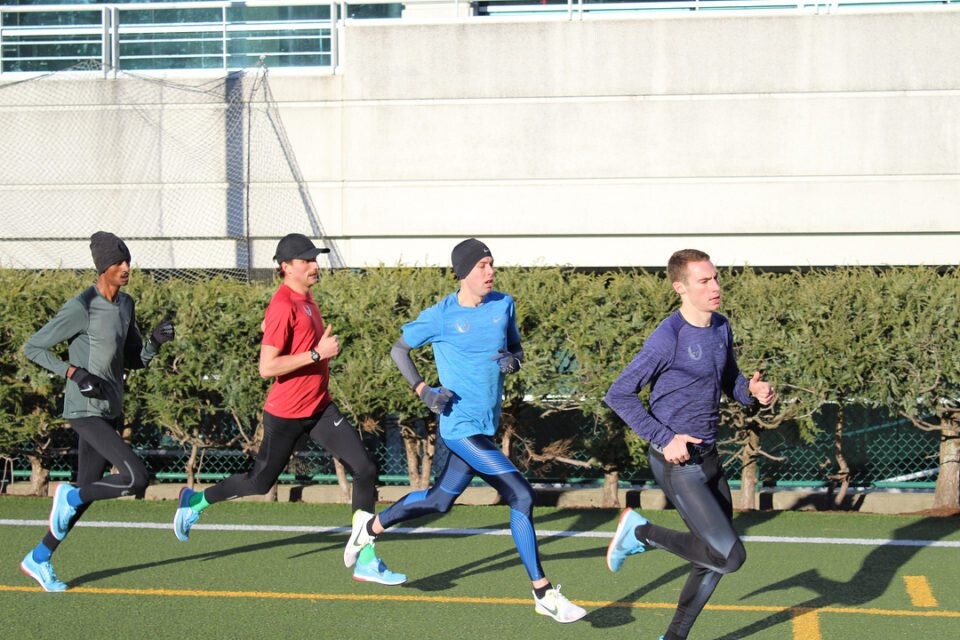
If you don’t know your tempo pace, take the average pace of your last 5K race, then add around 20 to 30 seconds per kilometer.
The purpose of this workout is to improve your aerobic threshold on minimal rest. The entirety of the workout is almost 35 minutes, which upon completion, will give you confidence toward your 10K race. On the first rep, focus on staying relaxed and settling into your tempo pace, finding a rhythm in your stride.
Treat the transition from rest into your second rep as you would to stay calm in the middle of a race. Focus on your breathing and keeping that rhythm. On the third rep, focus on maintaining your form and holding strong for that final 10 minutes. If you want to make the workout a little harder, try speeding up by five to 10 seconds per kilometer on the final rep to push your aerobic capacity, as you would in the late stages of a 10K.
Use each 90-second rest as a slow jog or trot to get your breath back and relax your form into the next rep.
If you can complete this tempo workout, going 10 to 20 seconds faster per kilometer than your tempo pace shouldn’t be an issue on race day.
(03/09/2022) ⚡AMPby Marley Dickinson
A nine-strong French team has been announced for the World Athletics Indoor Championships Belgrade 22
Martinot-Lagarde will lead French team for Belgrade.
Pascal Martinot-Lagarde already has two world indoor silver medals and one bronze to his name and he will look to add to that tally when he returns to Belgrade, scene of his European indoor silver medal win in 2017. He will be joined in the men’s 60m hurdles by 2021 European indoor champion Wilhem Belocian and Cyrena Samba-Mayela contests the women’s event
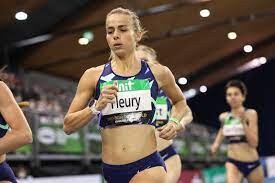
While former world record-holder Renaud will not be competing, there will be a Lavillenie in the pole vault competition, with European indoor silver medallist Valentin Lavillenie selected along with Thibaut Collet. Triple jump places have been secured by Jean-Marc Pontvianne and Melvin Raffin.
Aurore Fleury lines up in the 1500m while Leonie Cambours contests the pentathlon.

French team for Belgrade
Women1500m: Aurore Fleury60m hurdles: Cyrena Samba-MayelaPentathlon: Leonie Cambours
Men60m hurdles: Wilhem Belocian, Pascal Martinot-LagardePole vault: Thibaut Collet, Valentin LavillenieTriple jump: Jean-Marc Pontvianne, Melvin Raffin
(03/09/2022) ⚡AMPby World Athletics
World Athletics Indoor Championships Glagow 24
Welcome or fáilte as the Gaelic speakers in Scotland would say, to the digital home of the 19th edition of the World Athletics Indoor Championships taking place in Glasgow in 2024. With the competition fast approaching it’s nearly time to take your seat for one of the hottest sporting tickets in Scotland this year. Glasgow has a proven track record...
more...B.A.A. Unveils Honorary Women’s Team for 126th Boston Marathon
On the occasion of International Women’s Day, the Boston Athletic Association (B.A.A.) today announced a team of eight women who will participate in April’s 126th Boston Marathon, running in honor of the original eight finishers from the first official women’s field in 1972.
The honorary team is comprised of eight women who have made a powerful impact in areas from athletics to human rights. Among the eight women is Valerie Rogosheske, one of the original eight finishers in 1972, who returns 50 years later to once again cross the finish line on Boylston Street.
“I am so looking forward to returning to Boston this year with my daughters to celebrate 50 years of women being welcomed into the Marathon,” said Rogosheske. “In 1972, the students at Wellesley yelled ‘Right on, sista!’ On the 25th anniversary the students looked like my daughters, and this year they could be my granddaughters! I celebrate the progress through the generations as women claim their places on the start line.”

Joining Valerie on the Honorary Team are Mary Ngugi, Manuela Schär, and Melissa Stockwell, each of whom will be competing at the front of the race as part of the John Hancock Professional Athlete Team. Football and soccer star Sarah Fuller, U.S. national women’s soccer team alum Kristine Lilly, Guinness world record holder Jocelyn Rivas, and running activist Verna Volker round out the Honorary Team set for this year’s race.
Information on each of the Honorary Team members can be found below. The Honorary Team will be celebrated throughout race weekend at various Boston Marathon events and activities.

BOSTON MARATHON HONORARY WOMEN’S TEAM
Valerie Rogosheske is one of the original eight finishers from 1972. Valerie is from Minnesota and placed in the top ten at the Boston Marathon three times, taking sixth in 1972 (4:29:32), ninth in 1973 (3:51:12), and eighth in 1974 (3:09:38). This year, instead of lining up among eight female entrants, she’ll be supported and surrounded by 14,000 other women set to complete the 26.2 mile course, including her daughters Abigail and Allie.
Beyond being a world-class athlete, Mary Ngugi has been a vocal leader in spreading awareness against domestic violence. Following the death of professional athlete Agnes Tirop last year, Mary helped found the Women’s Athletic Alliance and led countless discussions —including with political leaders— to continue the fight against domestic abuse and inequalities. Mary placed third at last year’s Boston Marathon, and is a previous B.A.A. Distance Medley winner.
Manuela Schär is one of the most dominant wheelchair racers in recent history, having won three Boston Marathon titles and the last three Abbott World Marathon Majors series crowns. At the Tokyo Paralympics, Schär earned five medals (including a pair of golds) in distances from the 400 meters to marathon. She’s the current marathon world record and Boston course record holder (1:28:17), and remains the only women’s wheelchair athlete ever to break the 1:30 barrier.
One month after being deployed to Iraq as a Second Lieutenant in the United States Army’s transportation corps, Melissa Stockwell became the first female American soldier to lose a limb in active combat after her vehicle was hit by a roadside bomb. Melissa was later honored with a Purple Heart and a Bronze Star for her service. Four years later, she became the first Iraq War veteran to qualify for the Paralympic Games, competing in swimming at the 2008 Beijing Paralympics. Melissa competed in Paratriathlon at both the Rio de Janeiro and Tokyo Paralympics, and is a Paralympic bronze medalist. She’ll take to the Boston Marathon’s Para Athletics Division (T63) for the first time, looking to add another title to her impressive resume.
Sarah Fuller has been a fierce athlete since the age of five, when she first started playing soccer. She made history in 2020 as the first woman to suit up for a SEC football game as a student-athlete while at Vanderbilt University. Two weeks later, she made history again as the first woman to play in and score in a Power 5 football game, notching a pair of extra points for the Commodores. She studied Medicine, Health, and Society at Vanderbilt, and is currently pursuing her Masters at the University of North Texas where she is also a goalkeeper for the soccer team. This summer she’ll play for Minnesota Aurora FC of the USL W League. This will be Fuller’s first Boston Marathon.
Kristine Lilly played 23 years for the U.S. Women’s National Soccer Team, is a two-time World Cup Champion, two-time Olympic Gold Medalist, and has played more international soccer games than any other player –man or woman—in the world (354). Lilly played professionally in the Boston area for the Boston Breakers from 2001-2003 and 2009-2010. She is one of the most celebrated athletes in women’s soccer history, and was inducted into the U.S. Olympic Hall of Fame in 2012 and U.S. Soccer Hall of Fame in 2014. She is also the co-author of Powerhouse, a book about teamwork. A resident of Massachusetts, Lilly will take on her second Boston Marathon having run ten years ago in 2012.
Jocelyn Rivas is a proud Dreamer (DACA recipient) who came to the United States from El Salvador when she was six years old. In El Salvador, she was told she would most likely not be able to walk, but with physical therapy and a continued focus on recovery, she has proven that prediction wrong. She was inspired to run after watching friends in the 2013 Los Angeles Marathon, and soon made it her goal to finish 100 marathons. In November 2021, she completed her 100th marathon at the age of 24, making her the Guinness World Record holder for the youngest woman to run 100 marathons and the world record holder for youngest Latina to ever do so. Boston will be her 112th marathon.
Verna Volker is the founder of Native Women Running, whose mission is to build and nurture a community that features and encourages Native women runners on and off the reservation. A mother of four, member of the Navajo Nation, and brand ambassador, she balances family, running, and community activism. Verna created Native Women Running to bring more visibility to Native women runners across North America. She is part of the leadership team for the Running Industry Diversity Coalition, which focuses on improving inclusion, visibility, and access for Black, Indigenous, and people of color within the sport. Verna is running on behalf of Wings of America.
(03/08/2022) ⚡AMPBoston Marathon
Among the nation’s oldest athletic clubs, the B.A.A. was established in 1887, and, in 1896, more than half of the U.S. Olympic Team at the first modern games was composed of B.A.A. club members. The Olympic Games provided the inspiration for the first Boston Marathon, which culminated the B.A.A. Games on April 19, 1897. John J. McDermott emerged from a...
more...Five marathon athletes will represent Great Britain this summer’s World Athletics Championships in Eugene, Oregon
UK Athletics has today announced the first British athletes to be selected for this summer’s World Athletics Championships in Eugene, Oregon (15-24 July).
Five marathon athletes will represent Great Britain and Northern Ireland in the men’s and women’s races which are due to take place on the 17th and 18th July respectively.
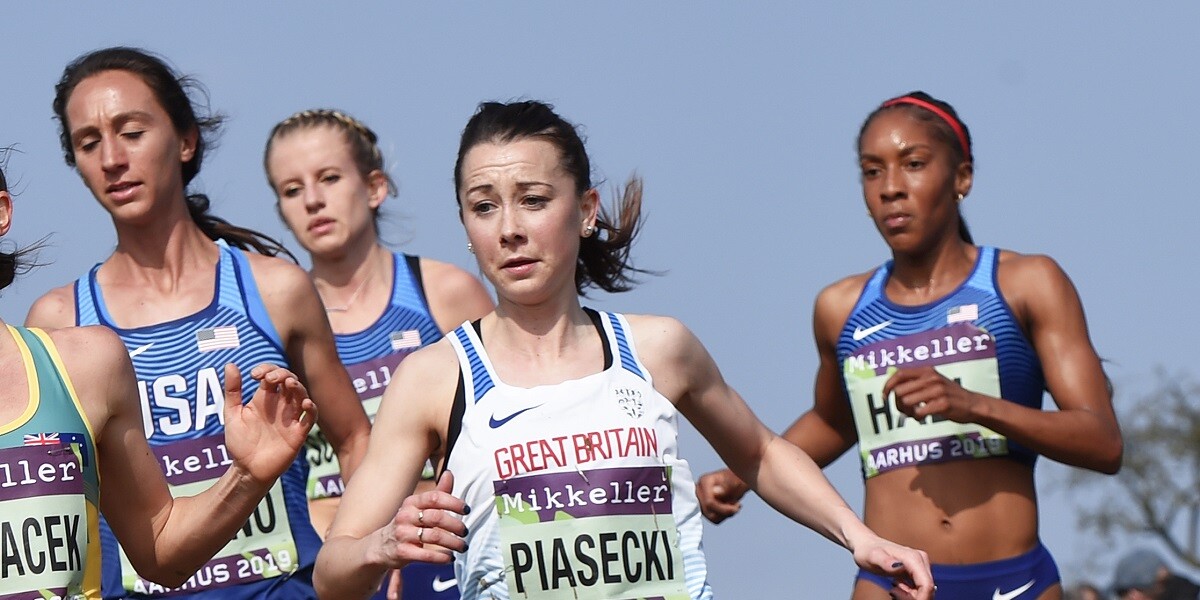
Olympians Jess Piasecki (coach: Robert Hawkins, club: Stockport) and Chris Thompson (Aldershot Farnham and District) are among those included in the team for Oregon 2022.
Piasecki recently moved to second in the UK all-time women’s rankings after running a time of 2:22.25 at the Seville marathon, which leaves her behind only Paula Radcliffe in the standings.

She will be joined in the women’s race by Charlotte Purdue (Nic Bideau, Aldershot Farnham and District) who ran a personal best of 2:23.26 at the London Marathon last October. Also, Rose Harvey (Phillip Kissi, Clapham Chasers) has earned her spot in her first British team following a PB performance of 2:27.17 in Seville last month.
In the men’s race, 40-year-old Chris Thompson (Aldershot Farnham and District) will compete at his first World Championships. He was the top British athlete in the men’s 2020 Olympic marathon and he topped the UK rankings last year with a time of 2:10.52, which was a lifetime best.
Welshman Josh Griffiths (Swansea) is called-up for his second World Athletics Championships having also competed in 2017. He impressed at the Seville marathon last month as he ran a career best of 2:11.28.
Jake Smith did not wish to be considered for selection for the men’s marathon.
Team Leader for the World Athletics Championships 2022, Paula Dunn, said,
“We are really pleased to be announcing our first five athletes for this summer’s World Athletics Championships in Oregon. This is a significant milestone, and I am delighted to be welcoming these athletes onto the British team to represent the country in July.
“We’ve seen some excellent performances from our marathon runners in recent weeks and months, which led to a really competitive selection. It is a great to have experienced marathon runners on the team, and also a new face in Rose who will be making her debut in a British vest. They’ve all earned their place on the squad, so I wish them all the best as they prepare for the championships.”
The British marathon athletes selected for the World Athletics Championships Oregon 2022:
Senior women
Rose Harvey (Phillip Kissi, Clapham Chasers)
Jess Piasecki (Robert Hawkins, Stockport)
Charlotte Purdue (Nic Bideau, Aldershot Farnham and District)
Senior men
Josh Griffiths (Swansea)
Chris Thompson (Aldershot Farnham and District).
(03/08/2022) ⚡AMPWorld Athletics Championships Budapest23
Budapest is a true capital of sports, which is one of the reasons why the World Athletics Championships Budapest 2023 is in the right place here. Here are some of the most important world athletics events and venues where we have witnessed moments of sporting history. Throughout the 125-year history of Hungarian athletics, the country and Budapest have hosted numerous...
more...Paris Marathon champion Paul Lonyangata has been banned for 19 months and Edward Kiprop Kibet has received a 3-year suspension
Two prominent Kenyan marathoners have been suspended from competition on doping charges, according to a report by Capital Sports. The Athletics Integrity Unit (AIU) has banned Paul Lonyangata for 19 months for use of the drug Furosemide, and Edward Kiprop Kibet has been banned for three years for nandrolone.
Lonyangata won the Paris Marathon in 2017 and 2018, and was the third-place finisher in 2019. One week after the 2019 race, he admitted to using the banned substance Furosemide, after it was found in an out-of-competition sample in September.
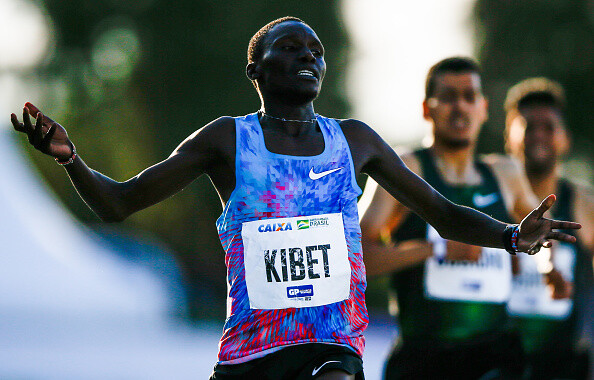
Furosemide is a heart medication, but it is on the World Anti-Doping Agency’s (WADA) list of prohibited substances because it can mask the presence of performance-enhancing drugs.

Lonyangata rose to fame in 2017, not only because he won the Paris Marathon, but because his wife, Purity Rionoripo, won the women’s race on the same day.
Lonyangata will be banned from competition until May 25, 2023. His fellow countryman, Kibet, will be banned from all competition until February 2025, after testing positive for nandrolone, the same substance found in Shelby Houlihan’s sample last year, for which she was given a four-year ban.
(03/08/2022) ⚡AMPby Brittany Hambleton
How to rotate your running shoes, there are a few things to consider before adding a new shoe into your rotation
There are many benefits to rotating your running shoes, but actually making this practice work for you may not be as simple as it sounds. If you’re not sure exactly how to effectively rotate your shoes, read on to learn which factors you should consider.
A note for beginners

If you’re just starting out and thinking “wait — I need more than one pair of running shoes?”, don’t stress. A beginner will do just fine with one pair of good, everyday trainers, especially if you’re taking days off in between runs (which you should, if you’re a true beginner).
On a similar note, you don’t have to rotate your running shoes to be a successful runner, so if financial constraints are preventing you from having more than one pair, you can ignore this advice entirely. Find a shoe that works well for you, and do your best to take care of them so they last.

The classic two-for-one
The simplest way to rotate your shoes is to buy two of the same shoe and wear each pair for every other run. The foam midsole in your shoe often takes at least 24 hours to return to its original state after you’ve run on it, so swapping between two pairs can significantly prolong the life of your shoes by giving them time to reset between runs. Not only can this help decrease your risk for some injuries, but it can actually help you save money in the long run.
Alternating between heel drops
The more complicated way to rotate your shoes is to have multiple pairs of different shoes, with different heel drops. Some shoes have a heel drop of 5 mm or less, some have heel drops that are 10 mm or more. The size of the heel drop will change which of your leg muscles are doing more work, and there is some research to suggest that by alternating between different drops, you can change which muscles are activating, which could help prevent some injuries.
For example, shoes with a low heel-drop will make your feet, Achilles and ankles do more work, while a large heel drop (10-13 mm) will put more pressure on your knees, thighs and hips. If you’re considering adding a shoe with a different heel drop into your rotation, make sure to do it gradually, starting out with only shorter, easier runs in the new shoe. If you go from a 10 mm drop to a 5 mm drop too suddenly, you risk causing lower-leg issues, like Achilles tendinitis.
Different shoes for different purposes
Many more advanced runners choose to rotate their shoes based on the purpose of their run. They may have a daily trainer for easy day mileage, a long run shoe, a speedwork shoe and a racing shoe. For example, they might choose a lighter shoe for their speedier tempo sessions, but a more cushioned shoe for their recovery days or long runs. Some may choose to shell out on a more expensive, carbon-plated shoe for race day, if they’re looking to shave off a few more seconds from their time.
As we said at the beginning, if you’re a beginner runner, you don’t need multiple pairs of shoes. You also likely don’t need multiple pairs if you’re running fewer than four times a week, unless one of those days is a tempo session and you want a lighter shoe for that purpose. Always take time to break in a new pair of shoes (especially if they have a significantly different heel drop from what you’re used to), and when in doubt, pick the same pair (or a similar pair) and alternate between them.
(03/08/2022) ⚡AMPby Brittany Hambleton
A word from Sara Hall who placed 8th at the Tokyo Marathon
You only regret the shots you don’t take.
Let it rip, left it all out there in Tokyo Marathon. Went out faster than I ever have before with a great group, but wheels came off and ended up 8th in 2:22:56. No regrets, and grateful for the opportunity to run in this beautiful city and country that inspires me every time I visit!

So proud to represent asics which embodies so much about what I love in Japanese culture- humble commitment to excellence and serving others. Inspired to keep perfecting my craft just as they do theirs’.

Thank you, Tokyo!
(Sara Hall posted this yesterday on Facebook)
(03/07/2022) ⚡AMP
Track workouts for marathon runners, use these sessions later in your marathon training to build efficiency and economy
While track workouts aren’t the main focus of a marathon training program, they are still beneficial for marathon runners. The following three workouts are taxing, both physically and mentally, so make sure you’re well-recovered and feeling sharp before you begin.
Track workout for speed and efficiency
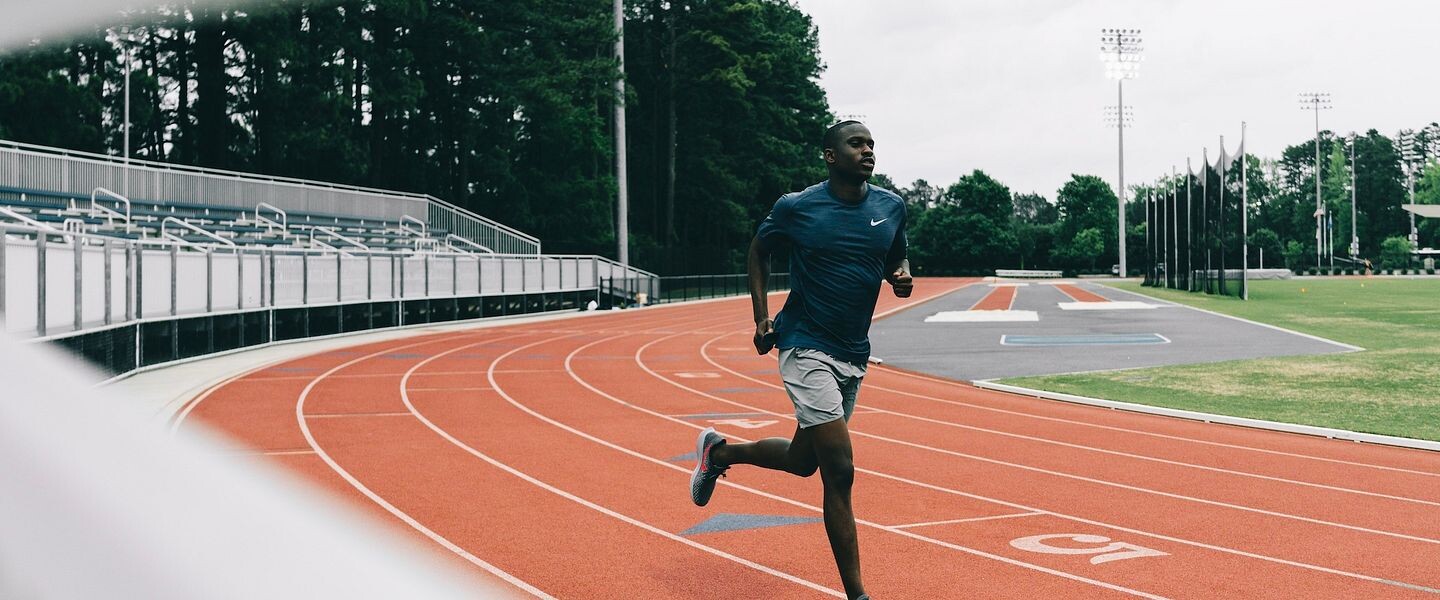
Marathon runners don’t need to focus on increasing their lactate threshold the way 1,500m runners do, but that doesn’t mean they can’t still benefit from having a higher lactate tolerance. Having a higher lactate threshold means you can run more efficiently at your marathon pace, and you’ll be able to maintain a faster pace for the entire marathon.
As we mentioned, these workouts are long and challenging, so they shouldn’t be introduced into your training until later in your marathon build, when you’re physically and mentally capable of tackling them. Pacing is also crucially important in these workouts, and runners should choose their starting speed wisely to ensure they can make it to the end.
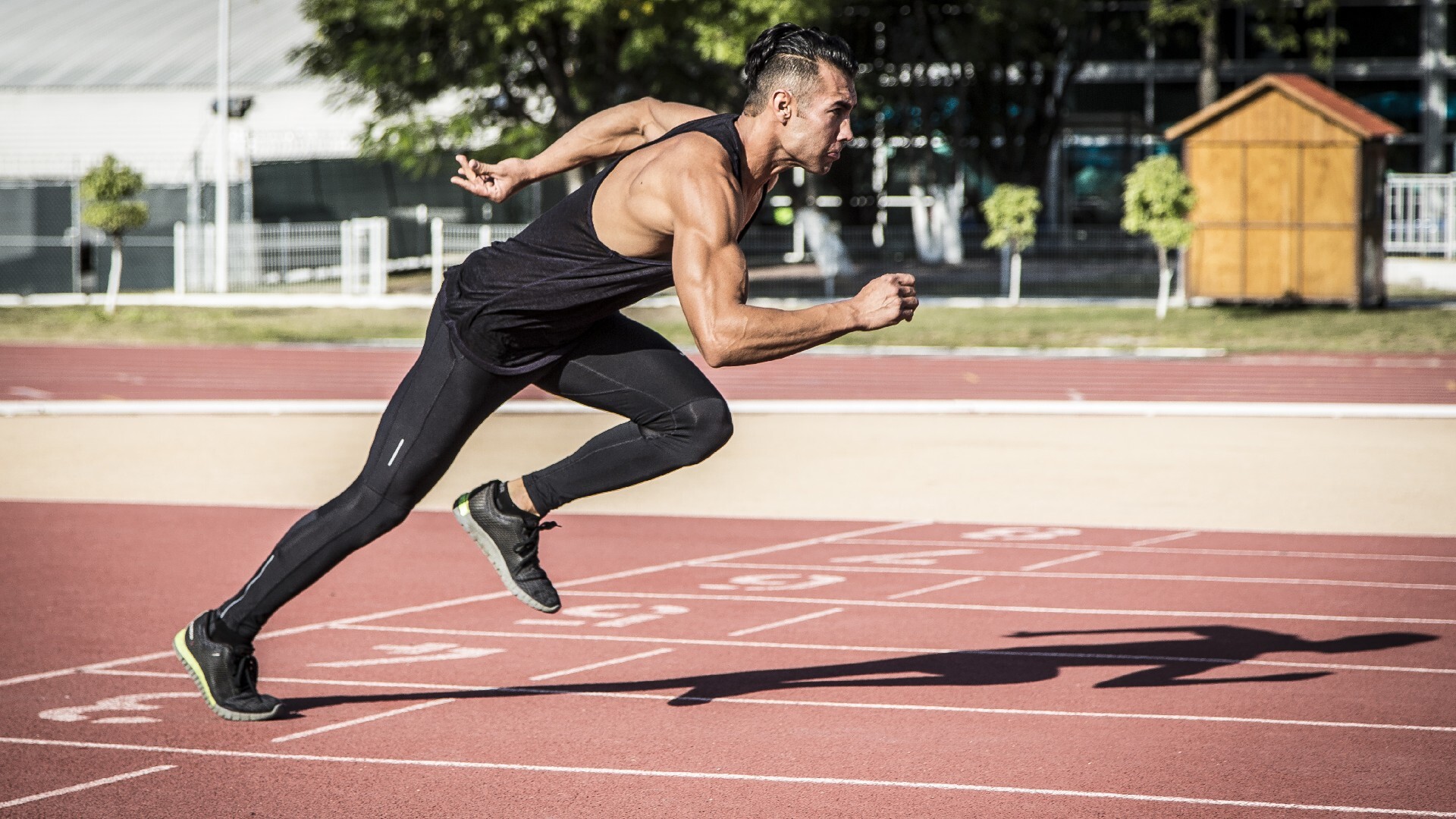
Additionally, it’s important to run these workouts with good form, so make sure you do form drills before beginning to start on the right foot.
The workouts
The three workouts are 16-20 x 400m, 12-16 x 600m and 8 x 800m. This is a lot of volume, and runners should aim to complete them at approximately half-marathon pace. If you can, try to speed up in the final intervals of the workout, but your pace should still be controlled.
Make sure you do a 10-20 minute warm-up and cool-down on either side of the workout, and rest between the intervals should be one or two minutes.
(03/07/2022) ⚡AMPby Brittany Hambleton
Ugandan Joshua Cheptegei starts season with world best time in Cannes
Ugandan star athlete Joshua Cheptegei has today set a 2022 season world-leading time of 26 minutes and 49 seconds over the 10km in Cannes, France.
Cheptegei 25, crossed the finishing line of the 10km road race ahead of Kenya’s Samuel Habtom, a distant 27 minutes and 51 seconds behind, while Uganda’s Abel Sikowo came third, posting 27.58 minutes.

It was the first race for the world 5,000 and 10,000m record holder. He last raced in August last year when he won a 2-mile race in Oregon.
Although Cheptegei ran below his personal best time over the distance which stands at 26 minutes and 38 seconds, the victory will shape him up as he prepares to defend his 10,000m world title in Oregon this year.
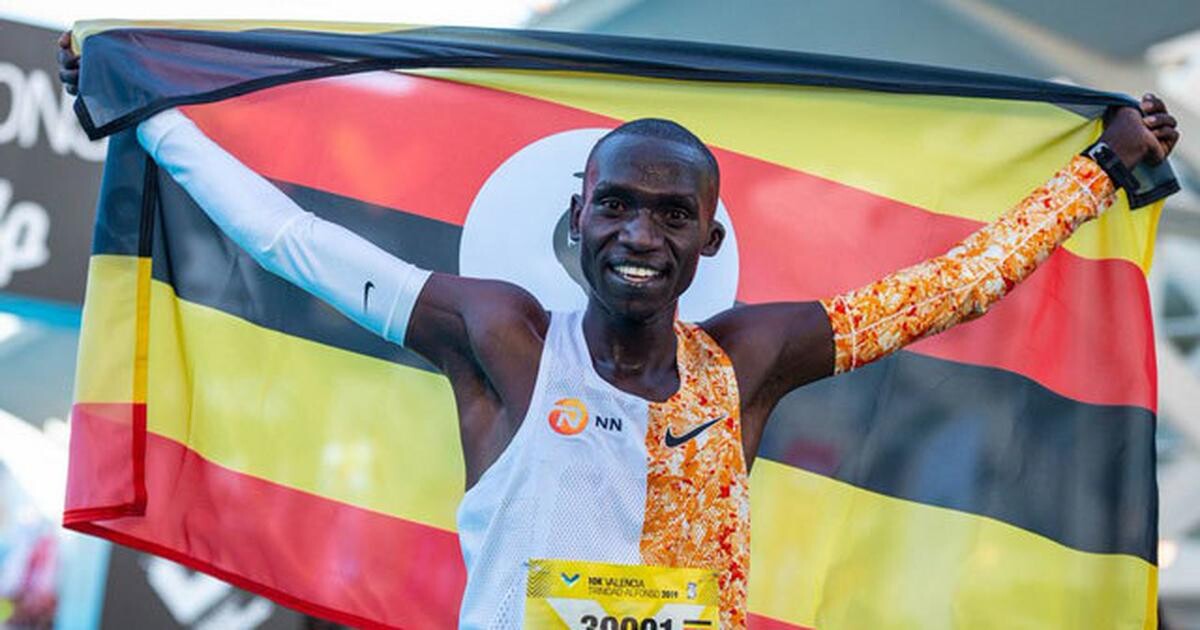
After winning the race, Cheptegei said the victory will give him confidence for the track season. Happy to see where I stand. It’s great to start my season with a World Lead. This gives me confidence for my track season.
Benjamin Njia, Uganda Police Athletics Club coach told Uganda Radio Network- URN that the victory for Cheptegei was important as he gears up for the 2022 season. “For me, it’s a great start for the season after being out of active competition for long, yes, this is a great boost for Oregon,” Njia briefly told URN.
The Olympics gold medalist was also returning to the road after spending almost two and half years without taking part in any road race.
Cheptegei last took part in the 10km road race in 2019 when he smashed the world record in the 10km race after crossing the finishing line in 26 minutes and 38 seconds at the 10K Valencia Trinidad Alfonso, although his world record didn’t last long.
Six weeks later, Kenya’s Rhonex Kipruto smashed the record when he posted 26 minutes, 24 seconds in Valencia. He lowered Cheptegei’s world record by 14 seconds, making Cheptegei the second-fastest man in the world over the 10km road race.
(03/07/2022) ⚡AMPby The Independient
ADIZERO: ROAD TO RECORDS
Adidas HQ in Herzogenaurach, Germany played host to elite adidas athletes competing on a specially designed course around the adidas World of Sport campus across 5km, 10km and 21km distances The course followed a loop of approximately 2.5km on a smooth tarmac surface with a slight elevation on each lap. Conditions were perfect as the first event,...
more...Africa’s 100m record holder Ferdinand Omanyala will lead Kenya's team of 10 athletes and six officials to the World Indoor Championships
Ferdinand Omanyala will lead Kenya's team of 10 athletes and six officials to the World Indoor Championships set for March 18-20 this year in Belgrade, Serbia.
The team, coached by 2017 World 800m champion Janeth Jepkosgei, will leave the country on March 16.
Athletics Kenya Director for Youth and Development, Barnaba Korir disclosed that Omanyala will take the blocks in the 60m event, while 2018 World Under-20 5,000m champion Beatrice Chebet will compete in the women’s 3,000m.

Chebet will team up with fast-rising Edinah Jebitok, who will also double up in the 1,500m.
World Relay 2x2x400m silver medalist Naomi Korir makes the women’s 800m team alongside Eglay Nalianya.
Abel Kipsang, who represented Kenya at the 2020 Tokyo Olympics, is the lone ranger in the men’s 1,500m, while Collins Kipruto, who has won several races at the World Indoor Tour, will fly the country’s flag in the men’s 800m, alongside World Under-20 800m bronze medallist Noah Kibet.

Jacob Kiprop and Daniel Simiu will battle it out in the men's 3,000m.
After a series of breathtaking performances at the World Indoor Tour where he broke the national record in 60m thrice, Omanyala will be hoping to reach the final.
Omanyala, who holds the Africa Record in 100m outdoor of 9.77sec, broke the national record in 60m indoor for the first time on February 4 this year when he won at Meeting Elite de Miramas in France.
He glided to 6.63 to shatter the previous National Record of 6.70 set by Paulvince Obuon in 2005.
Omanyala had won his semi-final heat in Lievin 6.63 before losing to Olympic 100m champion Jacobs Marcell from Italy, who won in 6.50.
He then bettered the National Record for the second time when winning in 6.60m at Meeting Metz Monselle Athlelor in France on February 12, before lowering it further to 6.57 when he finished fourth at the Meeting Hauts-de- France Pas-de-Calais on February 17 in Lievin, France.
Kipruto competed in five races at the World Indoor Tour where he won two of them.
Kipruto’s best showing was when he won the men's 800m race at Müller Indoor Grand Prix in a personal best of 1:45.39 at Utilita Arena Birmingham on February 19.
Kipruto had held off 17-year-old Kibet and Morocco’s Mostafa Smaili to claim victory in the men's 800m at the Meeting de l’Eure in Val-de-Reuil in a meeting record time of 1:47.05 on February 14 in France.
Nalianya has three wins from her indoor outing in European, but her best show came from Meeting Hauts-de- France Pas-de-Calais on February 17 in Lievin, where she finished third in a personal best of 2:00.26.
Her compatriot Korir has taken part in five races this season and managed a second place in three, which includes a personal best of 2:00.66 from Míting Internacional de Catalunya in Spain on February 8.
Team
Men:
Ferdinand Omanyala (60m), Collins Kipruto (800m), Noah Kibet (800), Abel kIpsang (1,500m), Jacob Krop (3,000m), Daniel Simiu (3,000m).
Women
Naomi Korir (800), Egpay Naliaka (800), Edinah Jebitok (1,500m, 3,000m), Beatrice Chebet (3,000m).
Officials
Barnaba Kitilit (team leader), Hassan Ahmed( technical leader), Janeth Jepkosgei (team coach), Francis Philomena (Doctor), Lydia Muraya (official), Irene Wamui (official).
(03/07/2022) ⚡AMPby Ayumba Ayodi
World Athletics Indoor Championships Glagow 24
Welcome or fáilte as the Gaelic speakers in Scotland would say, to the digital home of the 19th edition of the World Athletics Indoor Championships taking place in Glasgow in 2024. With the competition fast approaching it’s nearly time to take your seat for one of the hottest sporting tickets in Scotland this year. Glasgow has a proven track record...
more...Got plantar fasciitis? Try these five exercises, these mobility exercises will help relieve your foot pain
Plantar fasciitis is painful and difficult to get rid of. If you’ve been struck by that nasty twinge in the sole of your foot, the following five exercises will help relieve your discomfort and get you back out running pain-free.
Plantar fascia massage

Rolling the bottom of your feet with a tennis ball or frozen water bottle is a great way to loosen up tight feet and improve flexibility and mobility. To roll your feet properly, follow these steps:
Sit in a chair with a ball or frozen water bottle under one foot.

Gently roll the ball or water bottle under your foot, moving at a pace of about one inch per second, being careful to apply just enough pressure to feel a stretch (it shouldn’t be painful).
If you find a spot that is particularly tight, roll in that area for an extra 30 to 60 seconds.
Roll for about two minutes, then switch and do the other foot. This can be repeated daily.
Banded calf roller
To perform this exercise, you’ll need a foam roller and an exercise band.
Sit on the ground and place the foam roller beneath your right calf, just above the heel bone.
Wrap the exercise band around the top of your foot, and gently pull your foot toward you, while gently pressing into the foam roller.
Continue pressing into the roller, and gently push your foot away from you, using the band as light resistance.
Keep going back and forth, slowly moving the roller up your calf until you reach the meaty part of your calf muscle.
Repeat on the opposite leg.
Tibialis tamer
This exercise will help loosen your posterior tibialis, which will take some of the pressure off of your feet.
Sit on the ground with your right knee bent at approximately 90 degrees, so that your lower leg is laying flat in front of you.
Place a tennis or lacrosse ball on the inside of your right ankle and slowly roll the ball back and forth, working your way up the inside of your leg until you’re just below the knee.
Repeat on the opposite leg.
Seated plantar fascia stretch
Make sure you complete this exercise in a slow and controlled manner, pulling just enough to feel a stretch but not enough to feel pain.
Sit on a chair and place your right ankle on your left knee.
With one hand holding your right ankle and the other holding your toes, gently pull your toes back until you feel a light stretch on the bottom of your foot.
Hold for 15-20 seconds and repeat three times before switching to the other foot.
Wall-facing calf stretch
Loosening up tight calves will help loosen up your feet as well. As with the plantar fascia stretch, complete this exercise in a slow and controlled manner.
Place your hands on a wall so that your arms are straight.
Step your right foot backward, keeping your right leg straight.
Lean forward until you feel a gentle stretch in your calf.
Hold for 15-20 seconds and repeat three times before switching to the other leg.
(03/07/2022) ⚡AMPby Brittany Hambleton
Inside the War: Dispatches From a Ukrainian Race Director
On February 24, after Russian forces invaded Ukraine and ignited one of the largest conflicts Europe has seen since 1945, Trail Runner Magazine reached out to the country's running community in support, to learn more about what's happening on the ground, and provide a platform in solidarity.
(My Best Runs wanted to share this with our readers. What is happening is terrible and we must tell the world what is going on there.)

We quickly connected with Yaroslav Turenko in Lviv, western Ukraine, who is the race director for one of the country's largest trail races, the Lviv Ultra-Trail series. Turenko is a passionate trail runner, volunteer, and photographer. Here's what he had to say:
Nicholas Triolo for Trail Runner: Can you tell us what it's like on the ground where you are? What is the general sentiment of the Ukrainian people right now?
As you've likely heard, the worst-case scenario in Ukraine is unfolding. We are facing horrible acts of Russian aggression. They have invaded our country and have started to kill innocent people, bombing our cities, military, and civilian infrastructure. Their military is using the most inhumane methods: local populations used as human shields, women and children dropped off when attacking armored vehicles. The occupiers have killed children, shooting them at point blank.
These are war crimes. Crimes against humanity using tactical weapons of mass destruction, prohibited weapons, and ammunition. Many people in the world think this war is far from Central Europe, but a Russian missile was just dropped on a Ukrainian military base, located 24 miles (40 km) from the European Union border.
We've lost unique Ukrainian works of art in fires, along with the largest plane in the world - Ukraine's Antonov-225 cargo plane - destroyed by Russian strikes outside Kyiv.

But Ukraine is united like never before; all of our internal political disagreements are in the past. All the Ukrainians inside the country and abroad are doing everything possible to stand up and give a proper fight to Russian forces. We ask the international community to stand with Ukraine. But we need international support. We need shelter for our families. We need to close off air traffic from Russia. We need equipment for our defenders and sanctions for Russia.
Andrii Tkachuk, the world record holder in the 48-hour treadmill race and the national record holder in 24- and 48-hour ultramarathons, is currently defending the country in the Ukrainian Armed Forces.
TR: The city of Lviv, where you are, is located in the western part of Ukraine, far from the Russian border. Are you in any immediate threat? Are you in touch with people in Kyiv and other places currently under fire?
We are supporting each other, yes. Everyone in Ukraine can find shelter here in Lviv (pronounced "Luh-VEEV"). However, there is no guarantee that Lviv is a safe place, but right now we see a significant difference between Lviv and other cities in central and eastern Ukraine.
Lviv is a hidden gem of Europe. It's a charming, bohemian city, a UNESCO World Heritage site. It's the city of cafes and pubs, and some surprisingly awesome trail running. There will be no more Lviv Ultra-Trail until the enemy is defeated. Lviv is amazing, remarkably inexpensive by European and international standards, and I sure hope that the Lviv Ultra-Trail will take place again.
TR: Are you turning to your local trail running community for support right now? What can trail and mountain running do to help promote peace and understanding in the world?
We sent all the money from the Lviv Trail Running Club bank account to raise funds for the Ukrainian Armed Forces. Other organizers and trail communities have done the same. All volunteers involved in initiatives related to this development are working with refugees, blood donation, first aid, and cooking food for large groups of people.
Andrii Tkachuk, the world record holder in the 48-hour treadmill race and the national record holder in 24- and 48-hour ultramarathons, is currently defending the country in the Ukrainian Armed Forces.
We are kindly asking the International Skyrunning Federation (ISF) and International Trail Running Association (ITRA) to ban all Russian race evaluation and certification. As far as we know, the Lviv Ultra-Trail banned Russian runners after the annexation of Crimea, and the war in Donbas and Luhansk regions. We are calling for the ban of all Russians from international events like the UTMB World Series, the Golden Trail series, and others sponsored by ISF and ITRA.
TR: Pivoting away from the invasion for a moment: How would you describe trail running in Ukraine to someone who doesn't know much about your country?
Trail running in Ukraine has been developing extremely fast. Every year, the number of events and participants has grown. Among the most popular trail running events are the Tvoya Prygoda Series, Fun Carpaty, Lviv Ultra-Trail, and Ukrainian Trail League series.
Ukraine is a beautiful country with extraordinary nature and breathtaking landscapes, which makes it possible to run trails in nearly every part of our land, year round. The best place for trails, in my opinion, are the Carpathian Mountains, with some peaks above 6,500 feet (2000m) above sea level, with high humidity in every season. (Mount Hoverla is Ukraine's highest peak at 6,762 feet).
Serhii Popov is considered one of the fastest trail runners in Ukraine. He has won national trail and long distance mountain running championships almost every year since 2015, and took part in nine world championships. He is also an ultrarunner with the best national performance time in the Men's 40+ age group for 50K and 100-mile road races.
On February 24, Popov planned to fly to Spain, to take part in a six-hour ultrarunning event in Barcelona, with the goal to set another national record. But in the morning, he woke to bombing sounds from the Boryspil airport, where he was planning to depart a few hours later.
"The first night we spent in the basement of our friends in Irpin, near Kyiv," said Serhii. "It is right next to the Hostomel airport where fighting with the Russians just started. Explosions were so loud that the walls shook. This continued in the morning and we decided to reach the city of Zhytomyr, where my wife's parents were, and our car. As soon as we got to the city, we realized the return trip was not possible, so we decided to stay there and do what we could.
"I could not join the local defense forces. They are only taking people with appropriate combat experience, which I don't have. So we went to shops and carried food and water to block posts," Serhii said.
"The city of Zhytomyr is preparing to meet the enemy. Everybody in the city is trying to help - building fortifications, collecting all the army needs. We often will hear sirens and sometimes the sounds of explosions. But mostly people are calm and ready to stand up for their land."
(03/06/2022) ⚡AMPby Trail Runner Magazine
HARMONIE MUTUELLE SEMI DE PARIS: BONIFACE KIBIWOTT AND NIGSTI HAFTU WIN THE 30TH EDITION
The first runners started the 30th edition of the Harmonie Mutuelle Semi de Paris from the Pont de Sully (Île Saint Louis) at 8 o'clock this morning. The first major event of the 2022 running season brought athletes together for a shared experience and a 21.1 km challenge. Kenyan Boniface Kibiwott claimed the men's race, while Ethiopian Nigsti Haftu emerged victorious from the women's one.
The 30thHarmonie Mutuelle Semi de Paris kicked off the 2022 running season.

Boniface Kibiwott (KEN) took the men's race in 1:00:52.
Nigsti Haftu (ETH) won the women's race in 1:07:37.
Damien Appere and Mangeiarasi Murugan were crowned French disabled sports champions.
Margaux Sieracki (sixth) and Benjamin Choquert (seventh) flew the flag for France in the top 10.
A mixed urban and natural course with a spectacular finish on Place de la Bastille.
WINNERS OF THE DAY
The men ran a tactical race as the favourites stuck together in the first part of the race. 8 kilometres into the course, Kenyan Boniface Kibiwott upped the pace before going solo in the final 5 kilometres and crossing the finish line in first place with a time of 1:00:52. Vincent Yegon, second in 1:01:18, and Benard Kimelli, third in 1:01:23, locked up the podium for Kenya. Benjamin Choquert, seventh with 1:03:38, was the top-ranked French runner.
In contrast, the women's race came down to a sprint. Ethiopian Nigsti Haftu took the spoils in 1:07:37, beating Kenyan Joyce Tele, in the same time. Another Kenyan, Brillian Kipkoech, posted a time of 1:09:18 to claim the bottom step of the podium.
Frenchwoman Margaux Sieracki came in sixth in 1:11:01 in her half marathon debut.
Thanks to Harmonie Mutuelle, the last runners were feted just like the winners of the race, with a special celebration, for the first time in the history of the Semi de Paris.
(03/06/2022) ⚡AMPSemi de Paris
Paris Half Marathon (French: Semi de Paris) is an annual half marathon held normally every March in Paris, France since 1993. It currently holds IAAF Bronze Label status. Kenya's Stanley Biwott is the men's course record holder, with his winning time of 59:44 from the 2012 race. The women's course record is held by Nigsti Haftu (ETH), who ran a...
more...Emily Sisson, Nico Montanez Take 2022 USATF 15-K Titles in Jacksonville
Emily Sisson and Nico Montanez scored convincing wins today at the 45th Gate River Run in Jacksonville, Fla., the traditional home of the USATF 15-K Championships. Sisson, who represents New Balance, successfully defended her 2021 title in 47:28, collecting her fifth national title across all distances and surfaces. Montanez, who trains with the Mammoth Track Club and represents Asics, clocked 43:10 to collect his first national title in any discipline.
While both athletes earned $10,000 in prize money, Sisson won an additional $5,000 for winning the race’s gender challenge. The women were given a six-minute head start and Sisson crossed the finish line one minute and 42 seconds ahead of Montanez.
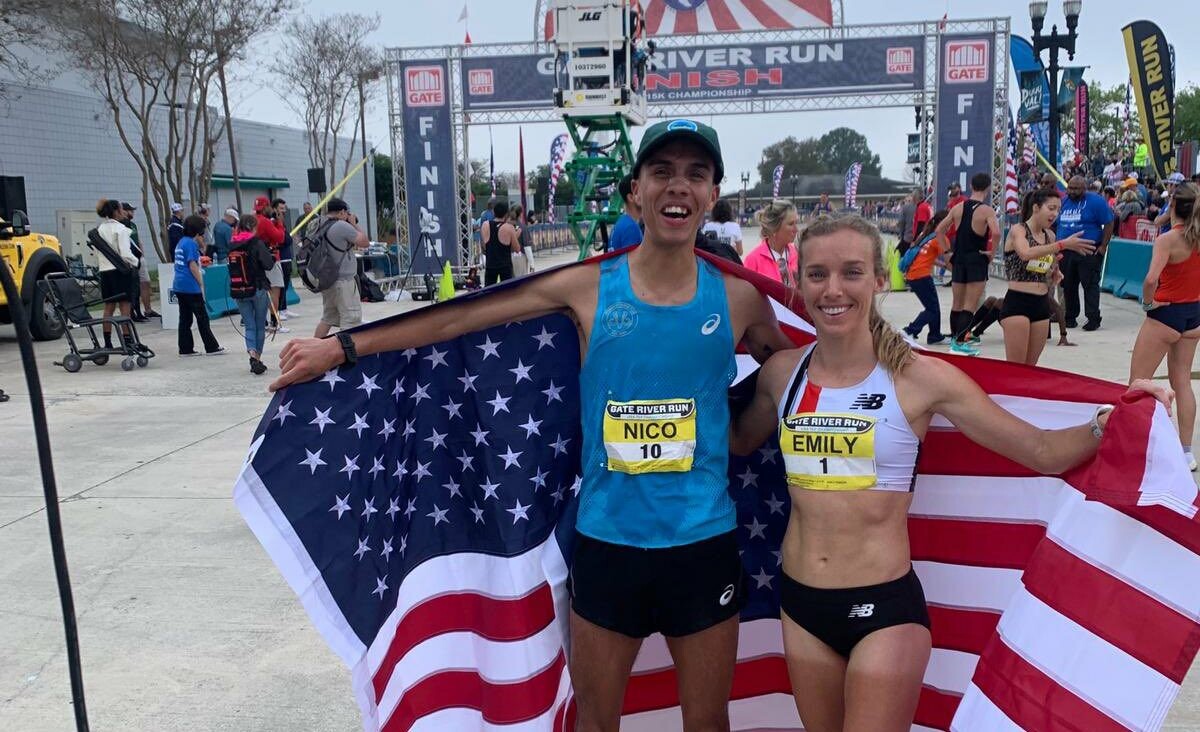
In typically humid Florida conditions, Sisson led the elite women’s race right from the gun. In the early kilometers she had company from both Emily Infeld (Nike) and Emily Durgin (adidas), but by the 5-kilometer mark (15:38) she already had a six-second lead. Running her first race since placing tenth in the 10,000m at the Tokyo Olympics last August, Sisson found herself in the same position as last year: running alone and against the clock.
“It’s my first race back from Tokyo, so it’s just good to push my body that hard,” Sisson told Chris Nickinson of USATF.tv in her post-race broadcast interview. “I haven’t done that in so long now.”
Sisson, 30, who lives in the Phoenix area but has been training recently at high altitude in Flagstaff, Ariz., checked her watch a few times as she clicked off her kilometers in the 3:10 range. Her splits were showing that she had a chance at Shalane Flanagan’s American record of 47:00 set at the same race in 2014. But ascending the 141 foot (43m) high Hart Bridge which begins at about 13 km, Sisson lost too much time and had to settle for the #4 USA performance ever, behind only Flanagan and Olympic bronze medalist Deena Kastor who ran 47:15 in 2003 and 47:20 in 2007.
“It felt good to get out there and hoping this is a good springboard for the rest of the year,” Sisson added.
Emily Durgin was a clear second in 49:17 and Emily Infeld got third in 49:46.
Nico Monatanez Gets 1st National Title
Montanez, 28, who is coached by Andrew and Deena Kastor, stayed tucked-in to the men’s lead pack for nearly the entire race. Two-time Olympic medalist Galen Rupp (Nike) led for more than two thirds of the race, splitting 5-K in 14:27 and 10-K in 28:52 with steeplechaser Hilary Bor (Hoke One One) on his heels. Montanez waited for the incline on Hart Bridge before attacking the field. He quickly opened a big lead. Montanez said that his move wasn’t spontaneous.
“It wasn’t a moment like that where I’m like, oh, I had the lead and time to go,” Montanez said in his post-race broadcast interview. “This thing was planned, it was maneuvered, it was thought out, it was prayed for. This is something that has been on my mind. This is Andrew and Deena Kastor, both of my coaches. This is their recipe.”
Montanez crested the bridge with none of the other men still within striking distance and was able to enjoy the final kilometer to the finish. Behind him, Leonard Korir, a 2016 Olympian, out-sprinted Bor for second place, although both men were given the same time: 43:14. Rupp, who is also running the United Airlines NYC Half on March 20, faded in the last two kilometers and finished seventh in 43:31.
Todd Williams’s championships, race and national record of 42:22, which was set in 1995, stood up yet another year.
The Gate River Run was never cancelled due to the pandemic. It was held on March 7, 2020, just before the initial pandemic shutdown, and race director Doug Alred was able to stage the race in 2021 early in the USA mass-vaccination process by cutting the field size in half to about 6700 finishers and employing social distancing. The event has hosted the USATF Championships since 1994.
The Gate River Run is part of the USATF Running Circuit. The next event is the USATF 1 Mile Road Championships to be held in Des Moines, Iowa, on April 26
(03/06/2022) ⚡AMPGate River Run
The Gate River Run (GRR) was first held in 1978, formerly known as the Jacksonville River Run, is an annual 15-kilometer road running event in Jacksonville, Fla., that attracts both competitive and recreational runners -- in huge numbers! One of the great running events in America, it has been the US National 15K Championship since 1994, and in 2007...
more...Mokoka breaks world 50km record with 2:40:13 in Gqeberha
South Africa’s Stephen Mokoka stepped up to 50km in style on Sunday (6), running 2:40:13* to break the men’s world record for the distance at the Nedbank #Runified 50km – a World Athletics Elite Label road race – in Gqeberha.
The three-time Olympian has been running marathons for more than a decade but made history in his very first 50km race, following the pacemaker through half way in 1:21:03 and then breaking away after 35km (1:52:53) with a 2:56 kilometre to put himself on world record schedule.

The 2019 world marathon fifth-placer finisher held that pace on the 10km loop course, running a negative split (1:19:10 for the second half) after a solo run to victory. He won by almost four minutes and improved the inaugural world 50km record of 2:42:07 that had been set by Ethiopia’s Ketema Negasa at the same event last year.
"I’m tired," Mokoka said with a smile in his post-race interview. "It’s a long way and I don’t know how I’m going to feel later, but I enjoyed it."
The performance further demonstrates Mokoka's impressive range. The 37-year-old has claimed numerous national titles in his career so far, from 1500m up to the marathon. His marathon best is 2:07:40 from Shanghai in 2015, while he set the South African half marathon record when running 59:36 to place seventh at the 2020 World Half Marathon Championships in Gdynia.
Tete Dijana was runner-up to Mokoka in Gqeberha, clocking 2:44:08, with their compatriot Edward Mothibi – the 2019 Comrades Marathon winner – third in 2:45:27.
Given the increasing popularity of 50km road races, the decision to add the distance to the list of events for which world records are recognised was made at the World Athletics Council meeting in Tokyo in July. Negasa’s 2:42:07 was then ratified as the inaugural men’s world 50km record at the start of this year, while the 3:04:24 run by South Africa’s Irvette van Zyl in the same 2021 event was ratified as the world 50km record for a women-only race.
That time had been the target for athletes in Sunday’s Nedbank #Runified 50km and the women's field went off with intent, the leaders passing 10km in 35:51 and half way in 1:31:34.Ethiopia’s Amelework Fikadu Bosho later dropped her rivals and although she was not able to maintain that world record pace, she hung on for a dominant women’s race win in 3:04:58.
Kenya’s Shelmith Muriuki was second in 3:08:30, while Van Zyl was third in 3:13:23.
(03/06/2022) ⚡AMPby World Athletics
Kipchoge and Kosgei race to Japanese all-comers' records in Tokyo
World record-holders Eliud Kipchoge and Brigid Kosgei recorded another two of the fastest marathons of all time in Tokyo on Sunday (6), running 2:02:40 and 2:16:02 respectively on their return to Japan.
Back in the country where they claimed their respective Olympic gold and silver medals seven months ago, they both used their great experience to leave their rivals behind in the closing kilometres and break the Japanese all-comers' records in the Tokyo Marathon, the first World Athletics Elite Platinum Label road race of the 2022 calendar.
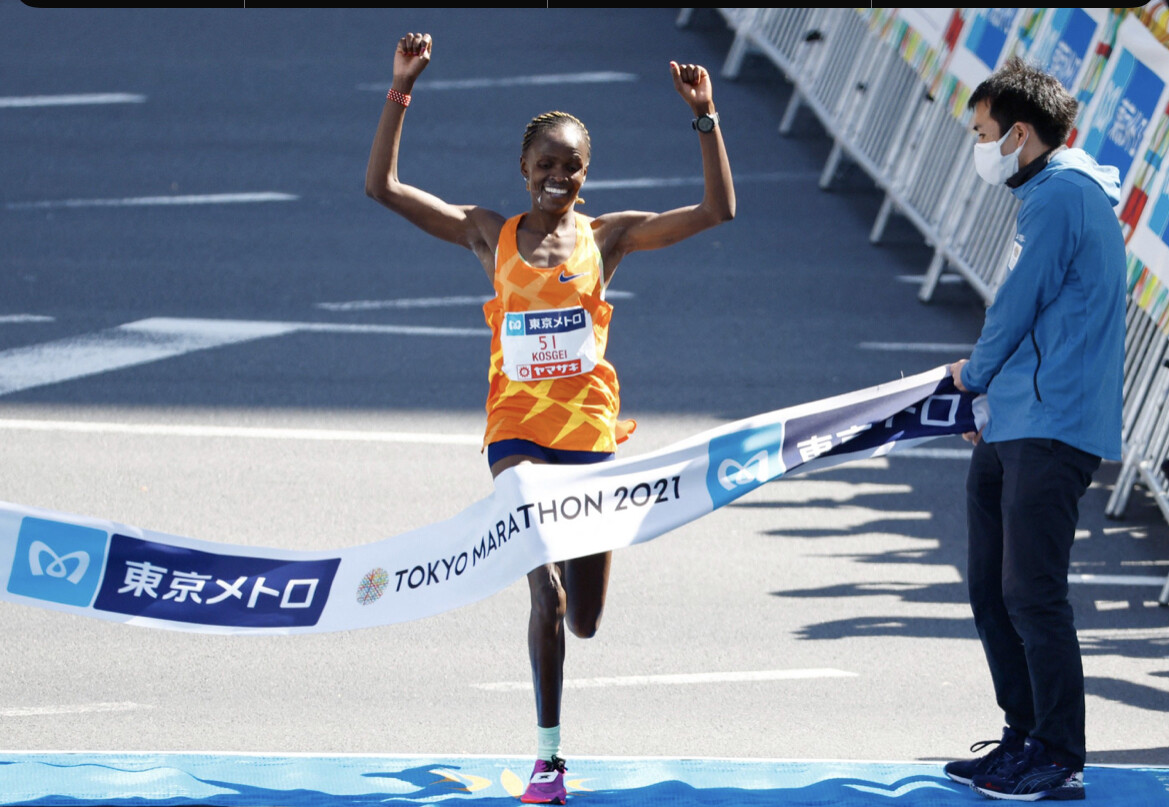
Kipchoge’s performance is the fourth-best ever behind his own world record of 2:01:39 set in Berlin in 2018, while Kosgei’s is a time that only she with her world record of 2:14:04 from Chicago in 2019 and Paula Radcliffe with her 2:15:25 from London in 2003 have ever beaten.
Kenya’s world bronze medallist Amos Kipruto had remained with Kipchoge until 36km and continued running solo to a PB of 2:03:13 in second, while Ethiopia’s Olympic and world medallist Tamirat Tola was third in the men's race in 2:04:14.
In the women’s race, Ethiopia’s 2019 Berlin Marathon winner Ashete Bekere was runner-up this time in a PB of 2:17:58, while another winner in Berlin – 2021 champion Gotytom Gebreslase – was third, 20 seconds behind her compatriot, in a PB of 2:18:18.

Although missing his targeted own Japanese record, Kengo Suzuki had another strong performance, running 2:05:28 to finish fourth as 22 athletes went sub-2:09. A total of 50 runners, including 43 Japanese athletes, dipped under 2:15, while in the women’s race the top five went sub-2:20, 13 went under 2:30 and Mao Ichiyama with 2:21:02 in sixth led the list of 13 Japanese athletes to go sub-2:40 on a sunny and cool morning.
Despite all he has achieved in the sport so far, marathon great Kipchoge has set himself another aim of winning each of the six Abbott World Marathon Majors. After four London wins, three Berlin victories and one Chicago triumph, he added Tokyo to the list on Sunday and will now aim for Boston and New York City at some point in the future to compete the set.
With his winning time in Tokyo, Kipchoge also extended his list of all-comers’ records, having now run the fastest ever marathons on German, British and Japanese soil with some of those majors wins. Only he with his world record and 2:02:37 run in London in 2019, plus Ethiopia’s Kenenisa Bekele with 2:01:41 in Berlin in 2019, have ever gone faster than the Kenyan’s winning time in Japan’s capital.
The race had been fast from the start and the leaders – with Kipchoge in control at the front of the pack behind the pacemakers – were well under world record pace as they passed 5km in 14:17. That pointed to a predicted 2:00:13 finishing time, but one based on a first 5km featuring a substantial downhill. At 10km the clock showed 28:37, with Ethiopia’s Shura Kitata dropped by that point, the 2020 London Marathon winner having struggled to keep in touch from 8km. A course mishap that saw runners go slightly off track just after 10km gave Kitata the chance to close the gap but he was soon dropped again from a lead group that featured Kipchoge, Kipruto and Tola, together with Ethiopia’s world silver medallist Mosinet Geremew and Kenya’s Jonathan Korir.
That five-strong pack remained together through 15km in 43:16, 20km in 57:53 and half way in 1:01:03, with the world record looking less of a target.
Geremew had been right on Kipchoge’s shoulder up to that point but he dropped back slightly at around 23km and one kilometre later the world silver medallist – who sits fourth on the world marathon all-time list with the 2:02:55 he ran in London in 2019 – pulled up and started to walk, with his hands on his head.
When the final pacemaker stopped at 27km, Kipchoge continued to push ahead and the race was down to three: Kipchoge, Kipruto and Tola, who started to lose touch 2km later. Kipchoge led through 30km in 2:02:09 and at this point a determined Suzuki had caught Kitata and was a couple of minutes behind the leaders.
Kipchoge and Kipruto were side-by-side through 35km in 1:41:30 and then Kipchoge began to make his move. He was a stride ahead at 36km and that increased to around five seconds over the next kilometre as the athletes made a turn and began running into a headwind. But he hung on to record the fastest marathon ever run in Japan by over a minute and claim a 33-second victory.
“I am really happy,” said two-time Olympic marathon winner Kipchoge. “I am excited to be here in Japan, especially after winning the Olympic Games in Sapporo. I really appreciated the crowd.”
Before the race Kipchoge had written 'ST:RO:NG' instead of numbers on his finish time prediction card and the 37-year-old felt he had achieved his aim.
“I said I wanted to run strong in Japan and I did, I ran a course record,” he said. “I am really happy I won another major marathon.”
Kosgei, too, has multiple major marathon wins to her name, having triumphed twice in London and twice in Chicago. After securing silver at the Olympics behind her compatriot Peres Jepchirchir, she finished fourth in London just two months later but was back on top in Tokyo.
The women's race record had been held by Lonah Chemtai Salpeter with the 2:17:45 she set on a slightly different course in 2020 and that time always looked under threat. The leaders were on 2:15:44 pace for the first downhill 5km and then passed 10km in 32:14.
By that point, Kosgei was running as part of a larger mixed group along with fellow women’s race leaders Gebreslase and Bekere, plus Kenya’s Angela Tanui and Ethiopia’s Hiwot Gebrekidan. A chase group featuring Ichiyama and her compatriot Hitomi Niiya, who won the first Tokyo Marathon in 2007, plus Ethiopia’s Helen Bekele and the USA’s 2020 London Marathon runner-up Sara Hall was 30 seconds back.
The same group of five led through 15km in 48:21 and reached half way in 1:08:06. At 25km, passed by the leaders in 1:20:48, chase group athletes Ichiyama and Hall remained on national record pace but those aims began to move out of reach a short while later.
Kosgei was still in control with Gebreslase tracking her, and the pair had broken away by 35km, with 1:53:08 on the clock. Kosgei missed her drink at that point but she didn’t seem to mind as she forged ahead while Gebreslase dropped off the pace. Kosgei had broken away by 37km and went on unchallenged to record another magnificent mark.
Bekere – who ran 2:18:18 when finishing third at last year’s London Marathon – came through to claim the runner’s up spot and improve her PB by 20 seconds while Gebreslase also had the run of her life to match her compatriot’s former PB of 2:18:18, building on her 2:20:09 debut performance in Berlin.
Tanui was fourth in 2:18:42 and Gebrekidan fifth in 2:19:10, while Ichiyama secured sixth in 2:21:02, Niiya seventh in 2:21:17 and Hall eighth in 2:22:56.
With their respective 2:05:28 and 2:21:02 performances, Suzuki and Ichiyama achieved a combined time of 4:26:30 – the fastest recorded combined result for a married couple running in the same race.
Before the race, Kosgei had said her target time was “a secret” and although she went on to record the third-fastest ever women's marathon, she later explained how she felt the wind in the latter stages of the race had prevented her from again attacking 2:14.
(03/05/2022) ⚡AMPby World Athletics
Tokyo Marathon
The Tokyo Marathon is an annual marathon sporting event in Tokyo, the capital of Japan. It is an IAAF Gold Label marathon and one of the six World Marathon Majors. Sponsored by Tokyo Metro, the Tokyo Marathon is an annual event in Tokyo, the capital of Japan. It is an IAAF Gold Label marathon and one of the six World...
more...Athletics Canada names 18 athletes to World Indoor Championships team
On March 3, Athletics Canada announced the 18-member team that will represent Canada at the World Athletics Indoor Championships in Belgrade, Serbia from March 18-20. This team is made up of six men and 12 women who have successfully achieved the World Athletics Indoor standard in their event. Athletics Canada has chosen to send an experienced team, with 16 out of the 18 athletes selected having represented Canada on the world stage previously.
Toronto native and Bowerman Track Club member Gabriela DeBues-Stafford headlines the team, sitting at fifth in the World Athletics rankings over the 3,000m and first in the 5,000m. DeBues-Stafford has had a remarkable indoor season, breaking the Canadian indoor 3,000m and 5,000m records in back-to-back weekends. In Serbia, DeBues-Stafford will be among those contending for a medal in the women’s 3,000m.

Canada’s 2021 Lou Marsh Award winner, Damian Warner, who won gold in the decathlon at the Tokyo Olympics, was also named to Team Canada, competing in the indoor heptathlon. Warner won silver at the 2018 World Indoor Championships in this event and he’ll be looking to upgrade that to gold in Serbia.
That was the only medal a Canadian brought home from in 2018. Team Canada’s head coach Glenroy Gilbert expects this year’s team to contend for high placings across all disciplines in Birmingham.

There are high expectations on what could be Canada’s best 4x400m women’s team ever, comprised of Natassha MacDonald, Lauren Gale, Kyra Constantine, Micha Powell and Sage Watson. The women’s 4x400m team finished fourth at the Tokyo Olympics and will be looking for redemption this time around in Serbia.
Indoor Worlds Team (information via Athletics Canada)
Athletes
Bolade Ajomale (Richmond Hill, Ont.) – Men’s 60 metres
Cameron Proceviat (Burnaby, B.C.) – Men’s 400 metres
Damian Warner (London, Ont.) – Men’s Heptathlon
Ehab El-Sandali (Toronto, Ont.) – Men’s 3,000 metres
Gabriela DeBues-Stafford (Toronto, Ont.) – Women’s 3,000 metres
John Gay (Kelowna, B.C.) – Men’s 3,000 metres
Julie-Anne Staehli (Lucknow, Ont.) – Women’s 3,000 metres
Kyra Constantine (Brampton, Ont.) – Women’s 4×400 metres
Lauren Gale (Ottawa, Ont.) – Women’s 4×400 metres
Lindsey Butterworth (North Vancouver, B.C.) – Women’s 800 metres
Lucia Stafford (Toronto, Ont.) – Women’s 1,500 metres
Madeleine Kelly (Pembroke, Ont.) – Women’s 800 metres
Marco Arop (Edmonton, Alta.) – Men’s 800 metres
Micha Powell (Toronto, Ont.) – Women’s 4×400 metres
Michelle Harrison (Saskatoon, Sask.) – 60 metres hurdles
Sage Watson (Medicine Hat, Alta.) – Women’s 4×400 metres
Sarah Mitton (North York, Ont.) – Shot put
According to Athletics Canada:
a second list of athletes who met the Athletics Canada indoor qualification standard in their respective events will be added to the team if they appear as “Qualified by Entry Standard” or “In World Rankings quota” on the March 9 World Athletics rankings list and the quota places remain open in their event.
The 2022 World Indoor Championships will kick off on March 18 and run until March 20.
(03/05/2022) ⚡AMPby Marley Dickinson
World Athletics Indoor Championships Glagow 24
Welcome or fáilte as the Gaelic speakers in Scotland would say, to the digital home of the 19th edition of the World Athletics Indoor Championships taking place in Glasgow in 2024. With the competition fast approaching it’s nearly time to take your seat for one of the hottest sporting tickets in Scotland this year. Glasgow has a proven track record...
more...The five phases of training for a spring marathon
We are back to in-person racing, and spring marathons are on the horizon. If you’ve been training all winter, then every single hypothetical or thought about the race has crossed your mind. If you are currently dealing with a lull in your training, don’t worry, because every runner goes through it.
Here are the five phases of marathon training that every runner goes through:
Motivation phase (16-20 weeks until your race)

After contemplating signing up for that race you’ve been eyeing for the last three months, you’ve finally grown the courage to hit ‘register’. Now 16 weeks out, your motivation is at an all-time high. You even just brought a new pair of runners in honour of your achievement (clicking ‘register’). This is the phase where you tell everyone you know that you are going to run a marathon.
Strenuous phase (8-12 weeks until your race)

You are a month into your marathon training and this isn’t what you signed up for. Your long runs are getting longer, you seem to be falling asleep at work every day, and the “I am training for a marathon” excuse is no longer cutting it. There is still motivation left at this point, but you keep thinking about how you’ve only been training for four weeks and there’s still eight weeks left on your schedule. This is the phase where many break down.
The exertion phase (4-8 weeks until your race)
You’re scraping the bottom of the barrel for motivation, but now you can finally see a shard of light at the end of the training tunnel. Your mileage has reached an all-time high, and you have no idea how you’re doing it. Your life in this phase is run, eat, run and sleep, but nothing is stopping you now. All eyes are on the prize.
The carb-load phase (1-2 weeks until your race)
The marathon is closer than ever, and now you have started your taper. Your energy level is through the roof, and you are counting down the hours and minutes until the race. Your training diet has gone out the window, and you’ve eaten pasta four of the last five nights. At this phase, you are antsy, but you keep dreaming of the glory phase.
The glory phase (the finish line)
You can’t believe it–you did it! There are no words to describe your emotion when is time to celebrate. Congratulations, you’ve earned it. You now deserve to wear your medal for eternity.
(03/05/2022) ⚡AMPby Marley Dickinson
Olympian Ryan Hall Shared His Best Advice for Working Out Before a Big Race
The record-breaking marathoner offered his tips for optimizing your pre-race routine, as well as some common mistakes to avoid.
Former Olympic athlete Ryan Hall might have packed on the muscle and set his sights on mastering feats of strength since retiring as a professional long distance runner, but he still holds the American record for fastest marathon and the world record for fastest half-marathon. All of which is to say, if you're preparing for a race yourself, there are worse people to turn to for advice.

In the lengthy caption to a new Instagram post, which sees him coaching his wife and fellow ultrarunner Sara through her last training session prior to the Tokyo Marathon this coming Sunday, Hall shared his top tips on what to do—and what is best avoided—while working out before a big race day.

Hall notes that it can be tempting to go hard in order to try and and "prove" your fitness to yourself as you approach the big day, but that you need to resist this urge, as it can have a detrimental effect on your performance when it really matters. "This is where I see the most mistakes made," he says. "Whether it’s easy running or light workouts, the point is to show up to the starting line fresh and hungry rather than depleted and having left your best stuff in training."
If you're unsure of how intensely you should be running in the days leading up to a race, Hall suggests threshold running with long strides. In other words, running at a constant pace that does not cause lactic build-up in the muscles. "Most athletes come out of threshold workouts feeling much better compared to MVO2 max/interval workout," he says.
"Stick to what works for you," he also writes. "The only way to find out what that is is through experimentation. Play with the workout timing and components."
Preparation for a race is not just physical, though: Hall speaks about the psychological aspect as well, saying: "It’s most important that you believe in what you’re doing. Confidence is of utmost importance prior to a race."
(03/05/2022) ⚡AMP
by Mens Health
You Love Avocados, But Are They Actually Good for You?
Here’s how adding this fruit to your grocery list can help you maintain a well-balanced diet.
People go crazy for avocados. Blame the creaminess they add to dishes, how they serve up healthy fats, or just a good marketing campaign, but demand continues to climb for these small green fruits. In fact, consumption of avocados tripled from 2001 to 2018, according to the USDA Economic Research Service.
That’s not a bad thing, considering avocados are the real deal when it comes to packing essential nutrients for runners like potassium, magnesium, vitamin C, and more
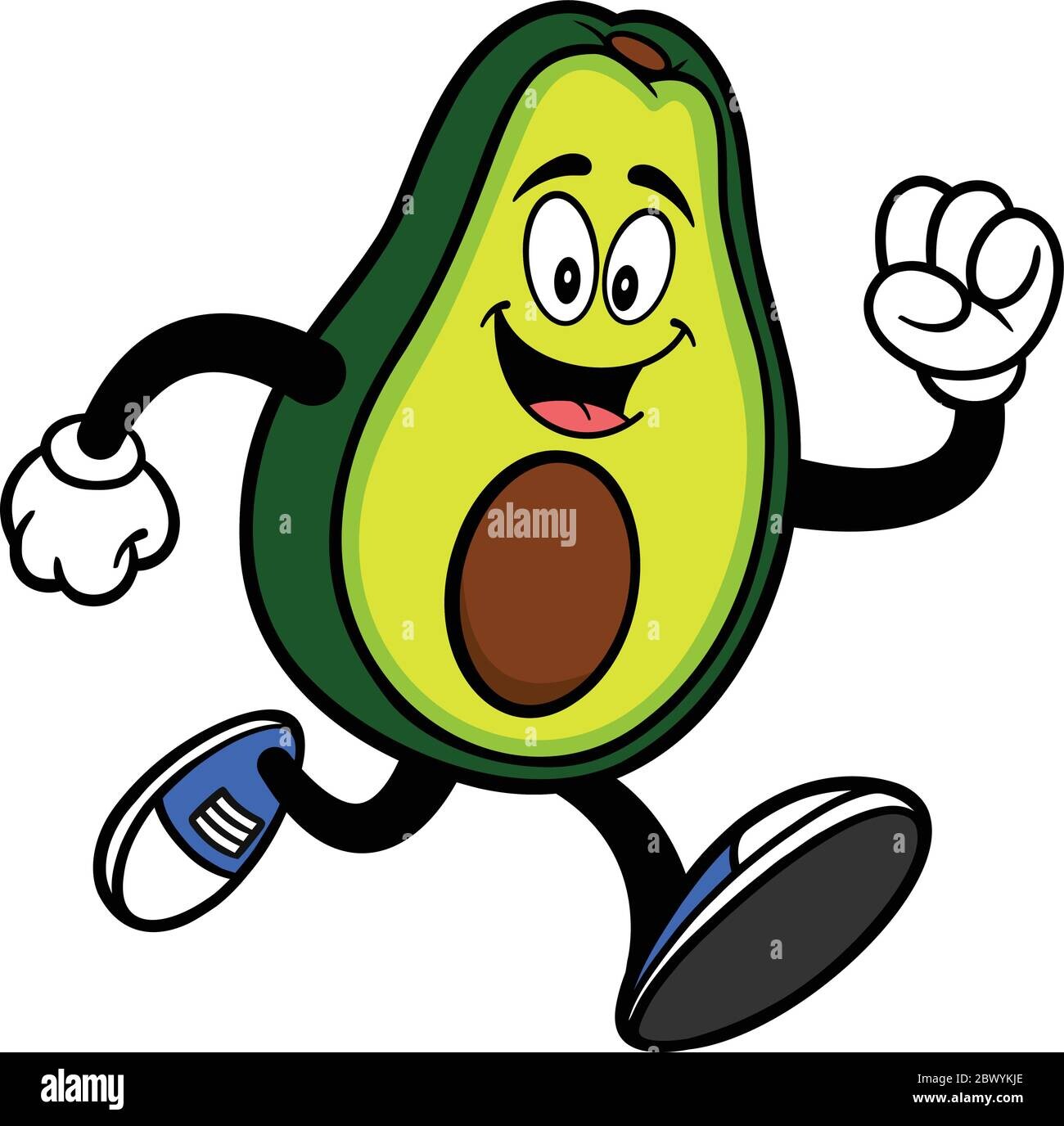
But if you’re not sure what the hype is all about—or you eat ‘em but you’re unsure about avocado’s nutrition—we spoke with a dietitian and sorted through the research to bring you all the health benefits. Plus, how you can add this fruit to your diet.
What nutrients will you get from avocados?
The nutritional value of avocados will differ slightly depending on the variation and size. Here are the nutrition facts for one full avocado grown in the United States, according to the USDA.
322 calories
4g protein
30g total fat

17g carbohydrates
14g fiber
24mg calcium
58mg magnesium
105mg phosphorous
975mg of potassium
14mg sodium
20mg vitamin C
Plus, traces of other nutrients your body will need to replenish after a workout like iron, sodium, and zinc.
What are the health benefits of eating avocados?
Here’s how runners can benefit from eating avocados, according to Yasi Ansari, M.S., R.D.N., C.S.S.D., national media spokesperson for the Academy of Nutrition and Dietetics, as well as recent research.
1. You get a great source of energy
Ansari says avocados are great for runners because they can help you fuel your workouts. “Foods that contain fats like avocado, offer an excellent source of energy. Fats can also help to fuel long-duration, low-to-moderate intensity exercise. It is key to incorporate foods like avocado into a runner’s diet to help them meet their increased energy needs and support good health and recovery,” she says.
2. They can help you maintain a healthy gut
Ansari says avocados can help improve your gut health because they contain nearly 14 grams of fiber, a nutrient that helps with GI regularity, as well as keeping you full post-meal. “Foods that increase satiety can help to keep athletes feeling full and more satisfied for longer periods of time,” she says. Plus adding avocados to you diet can help you meet your daily fiber requirement of 25 grams for women and 38 grams for men.
But remember too much fiber can lead to discomfort for some people, especially when consumed too close to a run. Try eating avocados on training days to gauge how your body responds, since everyone will respond differently. And if you eat avocados before a race, Ansari suggests allowing enough time for digestion. Depending on how your body responds that might mean having them the night before you hit the starting line, eating them a few hours beforehand, or waiting to enjoy them as a postrace meal or snack.
3. They offer up must-have magnesium
Avocados are rich in magnesium, which is an important mineral for runners because it helps regulate muscle and nerve function. “Not getting enough magnesium can impair exercise performance and can increase the effects of oxidative stress from strenuous training,” Ansari says.
4. Avocados are a great source of potassium
Surprisingly, there’s more potassium in an avocado than a banana. Potassium is a key nutrient your body needs to complete important bodily functions, like regulating heart rate and blood pressure and keeping you hydrated, Ansari says. “Potassium, sodium, and chloride also work together to help regulate fluid balance. An athlete with a higher sweat rate may require more potassium and sodium from foods,” she says. Avocado offers some sodium too, so you get both electrolytes.
5. They pack antioxidants and anti-inflammatory properties
Avocados contain nutrients like phytosterols, vitamin C, and vitamin E , which offer antioxidants that fight off free radicals, helping you stave off sickness and battle inflammation. “Vitamins C and E from foods can help to reduce cell damage, inflammation, and increase overall antioxidant activity that provides health-protective properties,” Ansari says.
6. They can help your body absorb vitamins
When mixed with other ingredients, like a kale salad with carrots, mushrooms, tomatoes and seeds, avocados can also help your body increase the absorption of fat-soluble vitamins such as vitamins A, D, E, K, Ansari says.
7. You get heart-healthy fats that help regulate cholesterol
Avocados are a heart-healthy fat—primarily rich in monounsaturated fatty acids—that can add flavor to any meal and snack, Ansari says. According to the American Heart Association, monounsaturated fats can help reduce bad cholesterol levels in your blood which can help lower your risk of heart disease and stroke.
Are there any downsides to eating avocados?
As with any food, it’s possible to overdo it on avocados. You probably don’t want to eat multiple every day. They are also higher in calories and fat, so consider your goals when determining how much of each you need and how much you want to get from avocados alone. And make sure you’re switching up your sources of healthy fats and fiber, too, incorporating other ingredients like olive oil and a mix of fruits and veggies in your diet.
Also, keep in mind that avocados are higher in FODMAPs, according to the Cleveland Clinic. These types of carbohydrates can cause digestive discomfort in some people, so it’s worth keeping intake low if you’re aiming to follow a low-FODMAP diet.
What’s the healthiest way to add avocados to your diet?
Bottom line, anyone can gain from adding this fruit to their diet, especially runners. And adding more avocados to your diet is pretty simple. Try these tips from Ansari for a place to start getting more of the creamy fruits into your meals:
Add it to a smoothie to make it thicker in texture
Mix chopped avocados into a salad to get those fats that help you absorb vitamins
Add avocado spread to a sandwich of your choice in place of mayo
Make avocado toast with eggs and tomatoes for a balance of carbs, protein, and fat
Add avocados to your taco, burrito, or burrito bowl for a Mexican-inspired dish
Make ice cream by freezing avocado pulp and adding honey for a tasty frozen treat
(03/05/2022) ⚡AMPby Runner’s World
Here's Why You Should Watch the 2022 Tokyo Marathon
World record-holders Eliud Kipchoge and Brigid Kosgei headline the return of this World Major Marathon.
On Sunday, March 6, the Tokyo Marathon will finally take place after not having been run since March 2020. Nearly 25,000 athletes will storm the streets of Japan’s biggest city to chase the finish line and personal bests.

The 2021 Tokyo Marathon was set for October last year, until the COVID-19 Delta variant forced postponement. Race officials decided to move the 2021 edition to March 6 this year and formally cancel the 2022 race.
How to Watch the 2022 Tokyo Marathon
WHAT: 2022 Tokyo Marathon
WHERE: Tokyo, Japan
WHEN: Sunday, March 6 in Tokyo. Saturday, March 5 in the United States. Professional wheelchair racers begin at 7:05 p.m. ET. The professional racers start at 7:10 p.m. EST.
HOW TO WATCH: Flotrack will stream the event on Saturday, March 5, starting at 6:30 p.m. EST.
What to Watch For
Eliud Kipchoge Attempts Ninth World Major Marathon Win
World record-holder and two-time Olympic champion Eliud Kipchoge has already cemented his legacy. But he’s now chasing the goal of winning all six World Marathon Majors. He already owns gold medals from Berlin, Chicago, and London—leaving Boston, New York City, and Tokyo as the remaining stops.
An abundance of talent joins Kipchoge on the start line. 2020 Tokyo Marathon winner Legese Birhanu of Ethiopia hopes to repeat as champion. Mosinet Geremew of Ethiopia has run 2:02:55, making him the fourth-fastest man in history, and will also challenge for the victory. Behind them are two others with sub-2:04 PRs: Amos Kipruto of Kenya and Tamirat Tola of Ethiopia. Japan’s chance for gold lies on the shoulders of Kengo Suzuki, who finished fourth at the Chicago Marathon last fall and owns a personal best of 2:04:56, which is the Japanese record.
Brigid Kosgei Headlines Women’s Field, Sara Hall Chases American Record
World record-holder Brigid Kosgei is the favorite thanks to her 2:14:04 personal best and Olympic silver medal from last summer. Three other women competing have broken 2:20 for the marathon: Angela Tanui of Kenya and Ashete Bekere and Hiwot Gebrekidan of Ethiopia.
Coming off a half marathon American record in Houston, Sara Hall attempts to run under the 2:20 barrier for the first time. Doing so could scare Keira D’Amato’s U.S. record of 2:19:12, also set in Houston in January.
Japan’s Mao Ichiyama boasts a top-10 finish at the Olympic marathon. With a 2:20:29 personal best, she’s the home country’s ringer for a podium spot—and potentially a national record.
(03/05/2022) ⚡AMP
by Runner’s World
A Training Plan To Run A 200 Mile Race
Think about what it means to sign up for a 200 mile race. You saw all of the other options out there, from shorter distances to going to Cancun. And you thought Let's see where the limits truly are. That is courageous as hell, the tribulations of being human summarized in what motivates many of the greatest adventurers: because it's there. Heck yes! I am so damn proud of you, and a bit in awe too.
(If you make the saying past tense by changing it to because it was there, you have the epitaph on many tombstones, so be smart too.)

Almost a year ago, I wrote a training checklist for a 200-mile race. I threatened writing a 16-week training plan for these monstrous events if enough athletes were interested. Many athletes were interested. It was officially a deadline.Oh crap.
Weeks passed, and nothing. Then months. Now, almost a year. I'm sure there are a number of doomsday cults that have been watching their inboxes, sipping Kool Aid while they await the plan that was promised.
Well, it's officially here-it's 200-mile training plan day. Call me the Baby Coach because I met the deadline in a bit over 9 months.
I joke because I have actually procrastinated this article topic for SO MANY MONTHS. And I think it's because I'm scared. My fear is that 200 milers rely on uncertain training principles, existing in the liminal space between body and mind. There are no good studies on training for the distance, just a compilation of anecdotes from successful athletes. Maybe those athletes would be successful with a number of different approaches.
Maybe the true secret has something to do with genetic variations in fatigue resistance (podcast here). Maybe these distances are just a mix of random chance and logistics. We don't know for sure.So what I describe today is based on application of general physiological principles for long-distance events over 24 hours, along with how my co-coach Megan and I have applied them for athletes we coach. That includes John Kelly, who won 2021 FKT of the Year for his performance on the 268-mile Pennine Way.
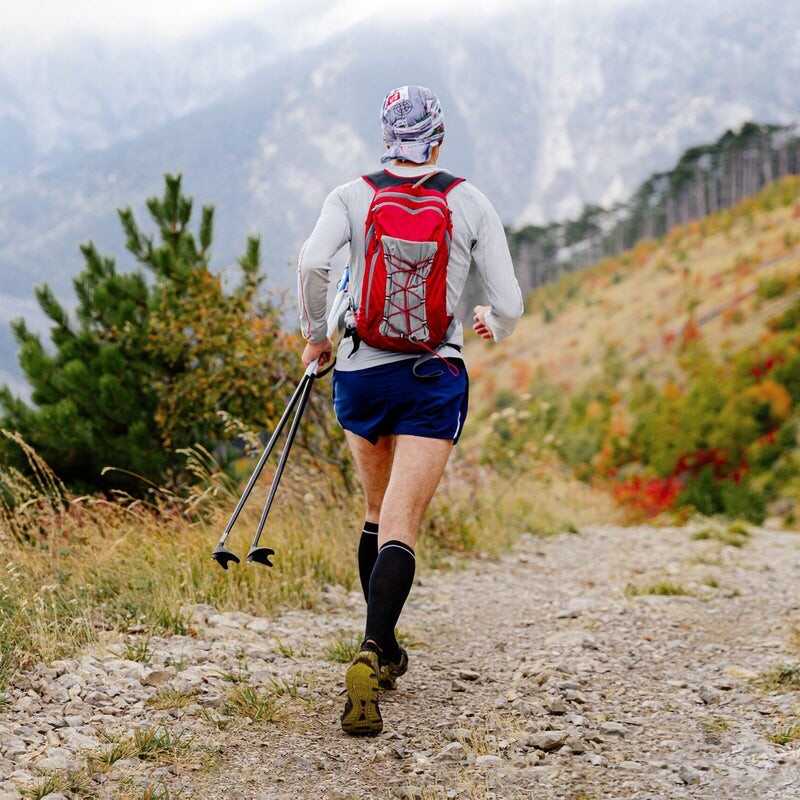
But, for full disclosure-I think John's secret is that he's extremely hard working, talented, and driven, as an athlete and person, destined for success at whatever he pursues in life. Also, perhaps he's a witch.
Before getting to the plan, I'll list the 7 training principles from the previous article, along with how the plan puts them into practice.Training Tip 1: Aerobic volume matters via running, hiking, and cross-training. Maximize consistency with activities five to six days a week.
The plan focuses on lots of easy running and hiking, including optional doubles. In particular, treadmill hiking and running can allow for higher training volume with lower impact.
Training Tip 2: Raise aerobic threshold with enough speed work to develop neuromuscular and biomechanical systems. Some strides plus one workout a week is plenty.
The workouts are deemphasized relative to one of my other training plans, focusing on building musculoskeletal and mechanical strength and power to let all efforts correlate with faster paces, but without overloading stress on non-specific intense days. Strides still play a big role, since maximal output has a strong relation to output below aerobic threshold.
While it's not the primary goal, the hope is that an athlete finishes this plan with improved running economy to use in future training cycles, even if that speed is not as relevant to race performance as it would be for less diabolical distances.Training Tip 3: Dial in sleep/recovery and stress balancing.
Rest days are a key part of the plan. We don't want to elevate fatigue as a virtue.
Training Tip 4: Do some specific efforts where you are out there for many hours, moving on a fatigued body.
Back-to-back runs and hikes are a key part of training, often every other week to allow for recovery (and to avoid occupying every waking hour with training). The long run-long hike/run weekend structure allows for higher volume with reduced risk of injury or overstress.
While the plan includes a training race option 5 weeks out from race day, a 100k or 50 miler anytime in the 4 to 8 weeks before the race would work wonderfully, just make sure you have 4-6 days of recovery afterward before gradually working back into the plan. And make the big Sunday hikes focused efforts if possible, incorporating some downhill running if things feel good.
Training Tip 5: Strong downhill training and tempo running during long runs can prepare the muscles for later in races.
While the race itself will be relatively slow, the running in the plan is rarely as slow as the average pace on race day. Resilience to muscular damage and fatigue is helped by introducing threshold tempos in long runs, requiring glycogen recovery and improving fat oxidation, plus an emphasis on strong downhills.Training Tip 6: Do strength work.
Strength work is a non-optional part of the plan, unlike some of the plans I have written for shorter distances. In peak weeks, that means 2 short "Mountain Legs" sessions and 2 medium "Speed Legs" sessions. Add weight to the Speed Legs for additional resilience. To level up, do the Strength Work Cheat Sheet.
Training Tip 7: Practice fueling in long runs.
On most Saturday long runs, practice fueling with an array of foods like you will on race day. And throughout the training cycle, make sure you're eating plenty to fuel the work.The 200-mile plan is designed for athletes who already have a base. Each day is given as a range of miles, with the design being to stay at the low, middle, or high end without going back and forth too much week to week. Start at the lower end of the range unless you have healthily run higher mileage in the past.
You can think of it as 3 different plans in one!
Other Things To Know!
Within the plan, there are goals and descriptions for most key days, along with links to articles that explain terminology. Most fun of all: complete this plan, and even if the 200 miler doesn't go perfectly, you'll be ready to rock future events too.What's beyond the horizon?
And what's beyond the next horizon after that? I don't know the answers to those questions. I'm not sure that 200-mile racers have the answers either. But I love the humanity of stubbornly chasing the horizon. Again and again and again.
Because it's there.
(03/05/2022) ⚡AMPby David Roche Trail Runner Magazine
Race day hydration:No matter what the weather does, here's how to hydrate properly during your race
Experts have not always agreed on guidelines for fluid intake during runs and races. Some say you should make a hydration plan to avoid dehydration, others say you should simply listen to your body’s thirst cues to know when to drink and others argue you shouldn’t drink to satisfy your thirst to prevent drinking too much. Thankfully, sports nutrition researcher Louise Burke recently cleared the air a bit for us.
Dehydration, overhydration and performance
Studies have shown that dehydration negatively affects performance. This has prompted sports scientists and nutritionists to encourage runners to drink a mixture of water and electrolyte beverages during long runs and races to try to keep up with the fluid they’re losing through sweat.

Others, however, have refuted that strategy, arguing that it encourages runners to drink too much and puts them at risk for hyponatremia, which occurs when the sodium levels in your blood are too low as a result of drinking too much water. Instead, they suggest intentionally drinking slightly less than you would otherwise.
Then there are those who argue runners should do away with hydration plans, and simply listen to their thirst cues to direct them to drink. So what’s the right answer?
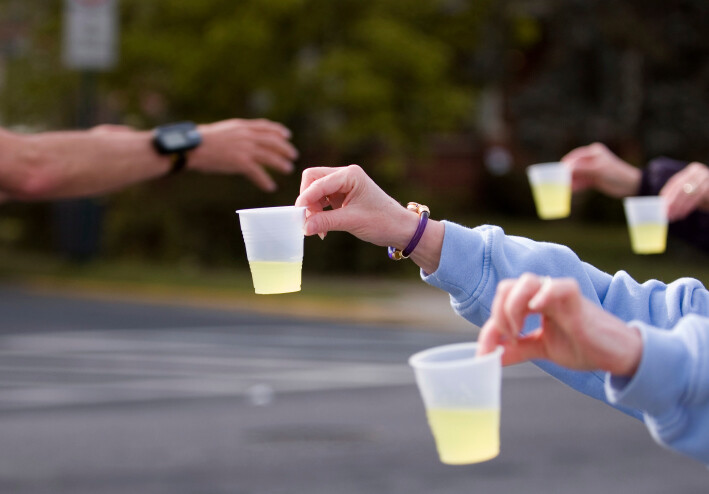
Hydrate for the weather
For example, if you’re racing in the heat and you tend to be a reluctant drinker, you should come up with a hydration plan pre-race and figure out a way to remind yourself to drink throughout the competition. On a more temperate day, by contrast, you may be able to use your natural thirst cues as a more reliable source of when to drink.
In contrast, if it’s a cool day and you’re running a race with a lot of aid stations, you may actually need to come up with a plan to avoid drinking to thirst. This is especially true for beginner runners, who are more likely to be “eager drinkers” during a run or race.
The bottom line
There are a lot of factors that influence how much you should drink during a run or race, and which strategy you should use. The best thing runners can do is understand themselves and their drinking tendancies to figure out which strategy will work better for them in different conditions.
(03/04/2022) ⚡AMPby Brittany Hambleton
2022 Tokyo Marathon Women's Preview
The women’s race at the 2022 Tokyo Marathon has a little something for everyone. There’s Brigid Kosgei, the Kenyan world record holder attempting to reassert herself as the world’s best marathoner after Peres Jepchirchir claimed that title in 2021.
There’s Angela Tanui, the breakout star who won three marathons last year, capped by a 2:17:57 course record in Amsterdam. And for American fans, there’s Sara Hall, fresh off setting a US half marathon record in Houston in January and ready to mix it up with the best in the world on a flat, fast course.
Women Elite Entries:

Brigid Kosgei (Kenya) – 2:14:04 (Chicago 2019)
Angela Tanui (Kenya) – 2:17:57 (Amsterdam 2021)

Ashete Bekere (Ethiopia) – 2:18:18 (London 2021)
Hiwot Gebrekidan (Ethiopia) – 2:19:35 (Milan 2021)
Gotytom Gebreslase (Ethiopia) – 2:20:09 (Berlin 2021)
Mao Ichiyama (Wacoal) – 2:20:29 (Nagoya 2020)
Sara Hall (U.S.A.) – 2:20:32 (Marathon Project 2020)
Helen Bekele (Ethiopia) – 2:21:01 (Tokyo 2019)
Natsuki Omori (Daihatsu) – 2:28:38 (Nagoya 2021)
Shiho Kaneshige (GRlab Kanto) – 2:28:51 (Osaka Int’l 2020)
Hitomi Niiya (Sekisui Kagaku) – 2:30:58 (Nagoya 2009)
Miharu Shimokado (SID Group) – 2:32:48 (Osaka Int’l 2020)
Yui Okada (Otsuka Seiyaku) – 2:32:00 (Nagoya 2020)
Hitomi Mizuguchi (Uniqlo) – 2:32:33 (Osaka Int’l 2020)
Mai Fujisawa (Hokkaido Excel AC) – 2:35:52 (Kanazawa 2021)
Tomomi Sawahata (Sawahatters) – 2:36:45 (Osaka Int’l 2022)
Debut / Do-Over
Kaori Morita (Panasonic) – 1:10:28 (Nat’l Corp. Half 2021)
Rika Kaseda (Daihatsu) – 31:39.86 (Nat’l Championships 2020).
Can Brigid Kosgei Return to the Top?
From the fall of 2018 through the fall of 2020 — four marathon cycles — Brigid Kosgei was the best marathoner in the world. By the end of that stretch, the gap between Kosgei and everyone else was not close. Her 2:14:04 in Chicago in 2019 was 81 seconds faster than Paula Radcliffe‘s previous world record and almost three minutes faster than any active marathoner had ever run. In her next race, 2020 London, she ran 2:18:58 in miserable conditions on a day when none of the rest of the world’s best marathoners could crack 2:22. She was in her own marathon galaxy.
Last year, however, Kosgei came back to Earth. That’s usually what happens when someone becomes World #1 in the fickle event that is the marathon (well, unless your name is Eliud Kipchoge). Kosgei was far from ordinary in 2021 — she still claimed second at the Olympics and fourth in London (in 2:18:40) just eight weeks later — but she was not the all-conquering giant of the previous three years. By the end of last year, the discussion about the world’s greatest female marathoner featured two women, and Kosgei wasn’t among them (right now it’s Olympic/NYC champ Peres Jepchirchir or London champ Joyciline Jepkosgei, who will race each other next month in Boston).
A win in Tokyo would nudge Kosgei back into that conversation, and she will start as the favorite on Sunday. Remember, after that dominant stretch from 2018-20, talk was starting to heat up that Kosgei could be the best marathoner the world has ever seen. That’s the trajectory she was on, and she only just turned 28 years old. If she can return to that sort of form, she’ll be your champion in Tokyo.
The Other Women Who Could Win
The top challenger to Kosgei in Tokyo is Angel Tanui, who emerged from relative obscurity to become one of the world’s top marathoners in 2021. Tanui, now 29, began last year as a serviceable road runner with pbs of 31:51/67:16/2:25:18 but wound up winning marathons in Dhaka (Bangladesh), Tuscany, and Amsterdam and finish as LetsRun’s third-ranked marathoner in the world. Tanui was only in Amsterdam because visa issues had prevented her from running Boston the previous week, but it certainly didn’t affect her race as she ran 2:17:57 to smash the course record. 2:17 doesn’t mean what it used to — these days, it’s barely fast enough to rank in the top 10 all-time — but it’s still plenty quick and signals Tanui as a major player.
Another woman to watch on Sunday is Ethiopia’s Ashete Bekere. She was only 7th in her last visit to Tokyo in 2016, but since then she’s won big-time races in Valencia (2018), Rotterdam (2019), and Berlin (2019). In her last marathon, she ran a pb of 2:18:18 to finish third in London, defeating Kosgei in the process (though Kosgei was just eight weeks removed from the Olympics). Clearly, Bekere has what it takes to win a major.
The other two notables in the field outside of Sara Hall — we’ll get to her in a minute — are the women who went 1-2 in Berlin last fall. Berlin was one of the weaker majors in 2021, but it was hard not to be impressed by Ethiopia’s Gotytom Gebreslase, who won the race convincingly in her debut in 2:20:09. Gebreslase is coached by the famed Haji Adilo, and he told Women’s Running he’s been impressed by what he’s seen recently:
“[Gebreslase] has even made big advancements in her training since Berlin,” Adilo says. “She set a personal best in the half marathon in December [1:05:36 in Bahrain], and if the weather and conditions are good in Tokyo, she could do something very special there.”
The runner-up behind Gebreslase in Berlin, Hiwot Gebrekidan, also had a good year in 2021 as she ran a pb of 2:19:35 to win Milan in May. But against this Tokyo field, 2:19 may not be good enough to challenge for the win.
Sara Hall Chases a Fast Time
Sara Hall running Tokyo is something we don’t get often: one of America’s top marathoners racing against the best in the world in a fast international marathon. Last month, Molly Seidel told Track & Field News that American pros “are gonna get our asses handed to us nine times outta ten, if the course is fast.”
(03/04/2022) ⚡AMPby Jonathan Gault
Tokyo Marathon
The Tokyo Marathon is an annual marathon sporting event in Tokyo, the capital of Japan. It is an IAAF Gold Label marathon and one of the six World Marathon Majors. Sponsored by Tokyo Metro, the Tokyo Marathon is an annual event in Tokyo, the capital of Japan. It is an IAAF Gold Label marathon and one of the six World...
more...Should your warmup and cooldown count as mileage?
Warmups and cooldowns before a race or speedwork are a tale as old as time, but does slow mileage “count”? A tweet by an American running coach elicited much debate, asserting that warmup, cooldown and recovery miles should not count toward your weekly mileage.
As a coach and runner, I would suggest you absolutely count all of your weekly mileage, as every step you take while running is beneficial in some way. There is no such thing as trash miles.
There are miles that are more efficient at building your aerobic engine (such as tempo runs), and there are miles that are more efficient at building an endurance base (long runs). But even slow miles can actively stimulate your heart rate and get your muscles ready for a higher intensity activity.

Most runners will use a warmup or cooldown to prepare their body physically and mentally for exercise. But in a 2007 study, researchers from the University of Sydney found that a warmup jog performed immediately before a run produced a small delay in muscle soreness, but a cool-down after does not.
Besides delaying onset muscle soreness, warming up also increases your heart rate, which enables more oxygen to reach your muscles through anaerobic exercise. The point of a cooldown is the opposite, bringing your heart rate down to a lower level to enhance recovery and build an endurance base.

Although some studies have proven that recovery runs do not speed up the recovery process, they are still beneficial in flushing the buildup of lactic acid in your muscles. Once the lactic acid is gone, the soreness will also decrease, allowing your muscles to heal.
If you are running a race under a mile, previous research notes that a light warmup can slightly increase oxygen consumption during a short anaerobic exercise.
(03/04/2022) ⚡AMPby Marley Dickinson
Tips on easing the pain in muscles and bones all runners should follow
Often, the pain we experience in our muscles and bones is simply a part of the running process. However, there are steps we can take to help ease this pain, making running more comfortable and less likely to cause long-term issues. Here are six tips all runners should follow to help ease the pain in their muscles and bones.
1. Ice And Heat Therapy
Applying ice or heat can help reduce the inflammation in your muscles and bones. Ice therapy is best used in the early stages of an injury, while heat therapy is more beneficial after the initial inflammation has subsided. To ice, wrap an ice pack in a towel and apply it to the area for fifteen minutes. Repeat this process every few hours as needed.

2. Stretching And Foam Rolling
Stretching and foam rolling are both excellent ways to loosen up tight muscles and prevent injuries. Foam rolling can also help to improve your range of motion. To foam roll, place the roller on the ground and use your body weight to press down on it, rolling it over the target area. Hold each position for thirty seconds. For stretching, hold each stretch for fifteen seconds and repeat three times.

3. Massage Therapy
Massage therapy can help to improve blood circulation and reduce inflammation. It can also help to break up scar tissue. You can ask a trained chiropractor or physiotherapist to give you a massage, or you can also do it yourself by using a foam roller or tennis ball. The best time to massage your muscles is right after a run when they are still warm. It’s also a good idea to massage any recurring painful regions.
4. Eating A Balanced Diet
A balanced diet is essential for keeping your muscles and bones healthy. Make sure to include plenty of protein, calcium, and vitamin D in your diet. You can also supplement your diet with fish oils and glucosamine to help improve joint health. It is also important to drink plenty of water to keep your muscles hydrated.
5. Taking Breaks
It is important to take breaks during long runs and races to allow your muscles and bones to rest. This will help prevent pain and fatigue. Take a break every thirty minutes and walk for five to ten minutes. After a long run, make sure to take a few days off to allow your body to recover.
6. Listening To Your Body
Above all, it is important to listen to your body and respond accordingly. If you are feeling pain in any muscles or bones, take a break and allow them to rest. Don’t push yourself too hard, especially if you are experiencing an injury. Follow these tips to help ease the pain in your muscles and bones, and you’ll be able to run more comfortably and injury-free.
These are six tips all runners should follow to help ease the pain in their muscles and bones. Ice therapy, stretching and foam rolling, massage therapy, a balanced diet, taking breaks, and listening to your body are all important ways to keep your muscles and bones healthy and pain-free. If you still experience pain after following these tips, be sure to consult a trained professional.
(03/04/2022) ⚡AMPby Colorado Runner
Five healthy habits to keep you running long term
Forty has become the new 30 in distance running, as we’ve seen many athletes achieve personal best performances beyond their glory years. Just because you are getting older, it doesn’t mean you have to give up on your running goals or stop being competitive. Many masters athletes have had some of the most rewarding years of their life by staying consistent with their training and sticking to healthy habits.
If you are a runner hoping to continue in the sport long-term, it is essential to remember these five healthy habits:

1) Fuel with healthy foods
Eating healthy has always been important, but it becomes crucial when you choose to pursue an active lifestyle as you age. Your university diet of pizza and beer three or four nights a week isn’t going to give you the nutrients you need to fuel your running. Foods high in protein like eggs, chicken and beef are essential in helping repair muscle tissue and maintaining muscle mass. It’s also important to fuel your body with fruits and vegetables, which contain vitamins and minerals like folate, potassium and vitamin C. A diet rich in vitamins and minerals will keep your gut and body 100 per cent and able to perform at its best as you age.

2) Listen to your body
Your muscles need time to recover from any damage they’ve sustained during a run. If your body is sore, do not force more pain on yourself by running. As we get older, our bodies naturally take longer to recover from strenuous activities.
3) Spend time on recovery
When you perform a high-intensity exercise like running, it will take time for your heart rate to recover and go back to a resting rate after the workout. As you age, the recovery process becomes slower. After a run, your body will need time to adapt to the exercise you performed by building up muscle and replenishing energy supplies. As you age, your muscle density decreases, which means more recovery time, because you have less muscle.
At least a quarter or half of the time that you spend running should be spent on recovery. Stretching or yoga are good ways to keep your muscles relaxed and strong after a run. Many runners also use recovery devices like a foam roller, lacrosse ball or muscle scraper. The point is to stimulate recovery by increasing blood flow by various means, though which devices you use are largely a matter of personal preference.
4) Mix it up with other exercises
As you age, your body will naturally begin to lose muscle mass. Therefore, adding one or two strength-training routines into your weekly schedule can help you build long-term success. Exercises like yoga, cycling and weight training can all help keep you strong and help prevent you from getting injured.
The secret to running into your 60s, according to several masters record-holders, is to not run every day and to complement your running with other exercises.
5) Stay motivated
When you’ve been running for a few years, it can be tough to find motivation at times. There are a few ways you can challenge yourself as an experienced or masters runner, which can keep you motivated to reach new heights. Try something you’ve never done before in the sport, like trail running or track racing (if you’ve always been a road runner). Embarking on a new challenge is bound to keep your motivation high.
(03/03/2022) ⚡AMPby Running Magazine
Things to avoid when running a marathon
Running a marathon is a celebration of the human body’s ability to endure. While marathons are far from what you would call a dangerous activity, there are still inherent risks involved. It’s important that you never underestimate the scope of your task, especially when an injury could set your fitness progress back several months. You might even sustain life-altering injuries from serious accidents. Here are some things you should never do when running a marathon.
Skipping Your Warm-Up

Marathons are long-distance routes that will put strain on your muscles and joints. Warm ups help prime your muscles for rigorous activity and they minimize the risk of an injury by increasing muscle elasticity. Warms ups also increase blood flow, which helps improve the ability of your muscles to exert effort.
Skipping Breakfast

While it’s difficult to run on a full stomach, it’s much worse to run on an empty stomach. This is because you’re very likely to experience premature fatigue or even a high blood sugar count. These will drastically hinder your ability to run, which will not only mean a weaker performance, but also a more agonizing time on the track because you’d be forced to run the distance in poor conditions.
You’d have to consume about 300 calories an hour before your run. This ensures that your body has calories to burn and that the food you eat has been fully digested by the time you start your run.
Starting a Race Too Fast
A marathon is more than just about running a long distance. It also requires strategy. Knowing how to pace yourself in a marathon is one of the most important things runners should master, as this outlines how you’re going to perform throughout the run. Runners who run too fast too early risk running out of strength over the later portions of the course. It’s important to stick to the pace that you’re capable of sustaining over a long period so you have reserved strength that you can use to power through the final stages of the course.
Obsessing Over Your Personal Record
While tracking your numbers is the best way to quantify your performance, this shouldn’t become the onus of your activities. While we all want to improve, obsessing over these numbers kills the fun in running. You don’t want to be tracking your heart rate, pace-per-mile, or your average speed while there’s a beautiful world out there to witness and enjoy.Never forget your passion for the sport, and the reason you run in the first place. Sports are as much a matter of passion as they are a celebration of the capabilities of the human body.
Marathons are more difficult and more serious than they seem. Whether you’re a competitive runner, or you’re taking on a personal challenge to live a healthier life, it’s important to understand what you’re committing to, and to plan ahead. Knowing what mistakes to avoid is just as important as the things you should be doing as you prepare for a marathon.
(03/03/2022) ⚡AMPby Colorado Runner
Heart rate and pace: how to compare these metrics to improve performance
Heart rate and pace are two of the most common metrics runners use to determine how hard they’re working, but often, they’ll use one or the other. By using the two together, you can get a good idea of how your fitness is progressing and use that information to guide your training. Intimidated by numbers? Don’t worry — comparing the two is easier than you think.
Aerobic decoupling

Decoupling simply means two things separating from each other. In the case of aerobic decoupling, these two things are your heart rate and pace. When you’re running at a pace that is manageable for you, your heart rate should remain relatively steady. If you’re very fit (perhaps you’re in the latter stages of a training block), your heart rate should remain steady as your pace increases — at least, to a point.
When one of those two variables begins to deviate from the other, they are decoupling. This means either your heart rate is increasing significantly as your pace increases, or your heart rate is staying the same as your pace declines. Let’s unpack what those changes mean:

Increased heart rate with increased speed
When your heart rate increases dramatically relative to your increase in pace, it means there is a higher cost for you to maintain that pace. In other words, it is much harder for you to run at that pace for that length of time, and you need more training in order to maintain that pace.
The good news is, that’s what training is for. When you look at your data after your run, you can see where your heart rate and pace decoupled (your heart rate increased or your pace declined), which is the point at which you became inefficient. The goal of your training should be to run longer at that pace before you reach that point.
For example, if you’re training for a 10K with a goal time of 50 minutes, you need to be able to run 5:00/km for 50 minutes. If you can only maintain that pace for 30 minutes before you reach the point of inefficiency, that’s your starting point for your workouts.
Heart rate stays high as pace declines
If your heart rate remains high even after you’ve decreased the pace, that’s an indicator that you’re not yet efficient at that pace. That being said, there are a few other factors that could affect how quickly your heart rate comes down after a hard effort:
Heat and/or humidity can make it difficult to cool your body down, which will make your heart work harder even at a slower pace.
Dehydration causes you to have a lower volume of blood circulating through your body, which means your heart has to beat faster to compensate.
Running up a hill will increase your heart rate, even though your pace is slower than running on flat ground.
Heart rate and pace stay consistent
If you don’t see any significant changes (less than five per cent deviance) in your heart rate or pace, that is an indicator that you are running efficiently at that pace. This is ideal when you’re doing an easy run, but won’t help you see any big performance gains in workouts. If you see this happen in a workout, take it as permission to increase the pace.
For example, let’s say you do a 30-minute tempo run at the beginning of your training cycle, and you notice your heart rate beginning to jump after about 20 minutes. You continue training, and a few weeks later, you do the same 30-minute tempo again at the same pace but this time, your heart rate stays consistent. When you do that workout again in another couple of weeks, you can increase your pace and challenge yourself a bit more. Eventually, your heart rate and pace will decouple again, so that’s your new goal.
Heart rate, pace and performance
Knowing your pace is crucial for determining what your goal time should be in a race, and your heart rate is an excellent way to gauge effort. By putting the two together, you can get a good picture of how fit you are, and what you need to work on so you can improve performance and smash your running goals.
(03/03/2022) ⚡AMPby Brittany Hambleton
Betty Lindberg 97-year-old surprised after breaking age-group 5K world record
On Feb. 26. a 97-year old athlete was astounded as she reached the finish line at the Atlanta Peachtree Marathon Weekend 5K, to find out she set an age-group world record. Atlanta-resident Betty Lindberg broke the previous 95+ 5K world record by 30 minutes, clocking a time of 55:48.
The record will be passed on from one Betty to another as Lindberg broke Betty Ashley‘s 95-99 5K age group record of 1:28:36, which she set in 2017 as a 96-year-old.

Although Lindberg walked the entire race, she averaged 11 minutes per kilometer. According to local media, she believed the record was attainable going into the race but was shocked at how quick her time was. “I simply stroll, as quick as I can,” Lindberg said to the media.

Lindberg, who didn’t start running until she was 63, used to run with the Atlanta Track Club but now goes for quick strolls around her hilly neighbourhood.
Leading up to the race, Lindberg would train by getting out for an hour’s walk around her neighbourhood. She would also supplement her walks with yoga classes at the local fitness center.
(03/03/2022) ⚡AMPby Marley Dickinson
How long should your marathon workouts be?, Adding the right amount of volume to your marathon training can result in tremendous aerobic gains
Running a marathon can be intimidating, especially if it’s your first. Your success in the marathon depends on a fairly significant chunk of time devoted to training. If you plan a 16- to 20-week build, your marathon will most likely go well (barring unforeseeable’s like extreme weather, illness or injury). But if you want to get closer to reaching your goal, paying attention to running the right volume in speed workouts can help you get the most out of your training plan.
When planning your marathon workouts, it’s important to understand that the race itself is entirely aerobic. The marathon requires next to no anaerobic work; your heart rate will stay well below your maximum HR for the entire race unless you somehow find yourself in a sprint to the finish line.

Considering that, you’ll want to curate your workouts around improving your aerobic capacity. This means that workouts consisting of 15 reps of 400m at 10K or half-marathon pace will not be beneficial to your preparation.
Your mileage and time on your feet are the most important elements when training for a marathon, therefore you want your workouts to be a particular length to simulate a race setting.

Your marathon workouts should be at least 12 to 25 kilometers of volume. Here are a few examples.
10 to 12 reps 800m at goal marathon pace (or faster) with 400m float (faster-jog) rest. (12-16 km)
Three to four reps of 5K with five minutes’ rest at goal marathon pace or faster. (17-22 km)
3K, 5K, 3K, 5K alternating from half-marathon pace on 3K reps to marathon pace on 5K reps with four minutes’ jog rest between reps. (16-19 km)
Two reps of 3K, 2K, 1K at goal marathon pace with two minutes jog between reps, and three minutes jog between sets. (12-15 km)
Unfortunately, speed development for the marathon is not done with your classic short interval workouts, especially for new and intermediate runners. There is no need to run fast track workouts for the marathon unless you are experienced and looking to improve your previous marathon time. This can be done by doing short intervals with short rest at your goal marathon pace.
(03/02/2022) ⚡AMPby Marley Dickinson
World record holder Yalemzerf Yehualaw will run debut marathon in Hamburg
Yalemzerf Yehualaw, who has smashed the world 10 k record just a few days ago, now sets her sights on her marathon debut. The 22 year-old Ethiopian has chosen the Haspa Marathon Hamburg on 24th April for her first race at the classic distance.
This was announced by organizers during a press conference in Hamburg today. Germany’s biggest spring marathon returns to its traditional date for the first time since 2019 and looks likely to come back with a bang. Yalemzerf Yehualaw clearly has the potential to run a very good first marathon. Organizers of the Haspa Marathon Hamburg expect a total of 20,000 runners including races at shorter distances on 24th April. Online entry is still possible at: www.haspa-marathon-hamburg.de

“We are thrilled to have Yalemzerf Yehualaw, one of the most exciting marathon talents of the world, on the start line of the Haspa Marathon Hamburg,“ said chief organizer Frank Thaleiser.
Yalemzerf Yehualaw, who improved the world 10 k record by a huge margin of 24 seconds to 29:14 last Sunday in Castello, Spain, is also the world’s second fastest half marathon runner. She clocked 63:51 in Valencia last October. Additionally at the World Half Marathon Championships in 2020 she won the bronze medal. Her half marathon PB suggests that she has the potential to run spectacular marathon times as well in the future.

“I am really happy to be able to run my marathon debut in Hamburg. My coach Tessema suggested to me to go to Hamburg for my debut since he ran here himself,“ said Yalemzerf Yehualaw. Tessema Abshero ran his lifetime best in Hamburg back in 2008 when he was fourth with 2:08:26. It was the only time he clocked a sub 2:10 time during his career.
Organizers showed Yalemzerf Yehualaw the Hamburg course and she then said during the press conference: „I am looking forward to this race and want to break the course record.“ Fellow-Ethiopian Meselech Melkamu holds the current Hamburg course best with a time of 2:21:54 from 2016.
The fastest woman runner on Hamburg’s start list is Priscah Jeptoo. The Olympic silver medalist from London 2012 has a PB of 2:20:14. While this personal record is ten years old more recently the Kenyan ran 2:24:16 in Valencia in 2019.
Two former winners of the Haspa Marathon Hamburg are returning to the race. Gadise Mulu will start as the defending champion. The Ethiopian took first place last September when the race was held in a much smaller format and with only a few elite runners due to the pandemic. Gadise Mulu improved significantly in Hamburg when she broke 2:30 for the first time and clocked 2:26:20.
Dibabe Kuma is the other Hamburg winner who comes back to the race. The Ethiopian was the winner in 2019, when she ran 2:24:41. She has a PB of 2:23:24.
Deborah Schöneborn heads the national elite entries of the Haspa Marathon Hamburg. The 27 year-old ran surprisingly well in the Olympic marathon in Sapporo last summer, where she finished 18th. She was the fifth fastest European athlete in this race. Deborah Schöneborn has a personal best of 2:26:55 and aims to qualify for the European Championships this summer.
(03/02/2022) ⚡AMPby Runners Web
Haspa Marathon Hamburg
The HASPA MARATHON HAMBURG is Germany’s biggest spring marathon and since 1986 the first one to paint the blue line on the roads. Hamburcourse record is fast (2:05:30), the metropolitan city (1.8 million residents) lets the euphoric atmosphere spill over and carry you to the finish. Make this experience first hand and follow the Blue Line....
more...Roll your feet before your run to prevent injuries, four minutes is all it takes to loosen up tight feet and make your run more comfortable
Most runners think about foam rolling as a post-run recovery strategy, but if you struggle with impact-related injuries like runner’s knee, Achilles tendonitis, IT band syndrome or shin splints, rolling your feet before your run may help you stay healthy.
Running on stiff feet
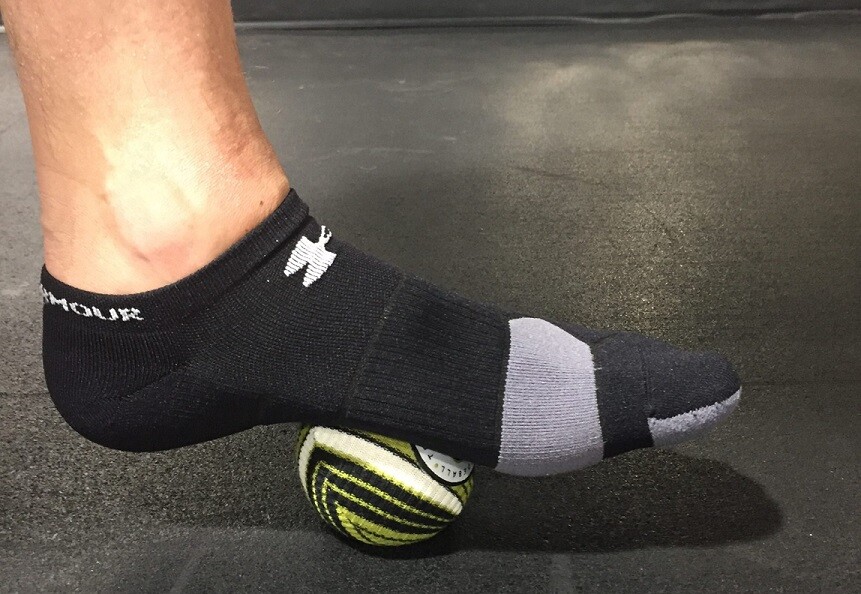
When your feet are stiff, you’re not able to access their full range of motion. This can make your heel strike more intense, which increases your risk for impact-related injuries. Rolling your feet before your run helps to loosen the tissues in your feet and increase blood flow and range of motion to that area. As a bonus, it will help improve mobility in your calves, thighs and even your back, which will help you run more efficiently.
You can use a foam roller to loosen up your feet, but a small ball, like a tennis ball, lacrosse ball or even a golf ball will be more effective. These tools, with their smaller surface area, will be better at reaching the small muscles that your foam roller might miss.
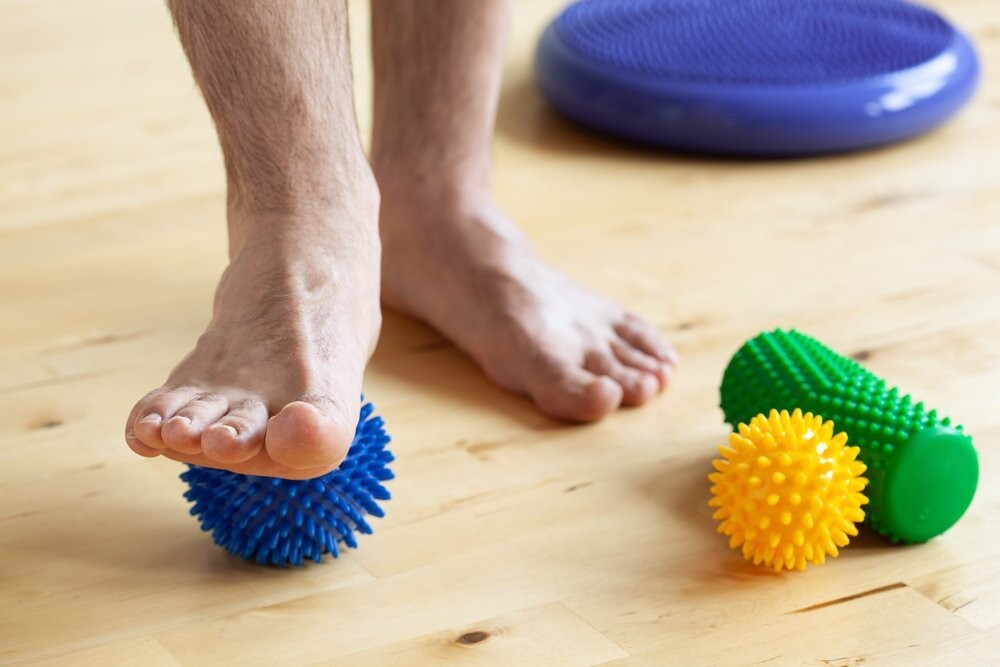
How to roll your feet the right way
The best way to roll your feet is seated in a chair. This position will allow you to better control the amount of pressure you’re putting on your feet. You should also always do one foot at a time.
Putting moderate pressure on top of the ball (you should feel the pressure but it shouldn’t be painful), slowly roll your foot around on the ball or roller, moving at approximately one inch per second. When you find a spot that’s particularly tight or tender, spend an extra 30-60 seconds rolling in that area. You should spend about two minutes in total per foot.
This quick, four-minute practice will increase flexibility and blood flow in your feet to improve your run. You may want to spend four minutes after your run rolling your feet as well, especially if you struggle with chronic impact-related injuries.
(03/02/2022) ⚡AMPby Brittany Hambleton
The link between RED-S and carbohydrate consumption
Relative Energy Deficiency in Sport (RED-S) has become a common nutrition concern among athletes and sports dietitians over the last few years, and nutrition experts and sports physiologists have been working to learn more about the condition and its causes. Recently, sports nutrition researcher Louise Burke revealed that RED-S is not simply caused by a lack of overall energy, but specifically by a lack of carbohydrates in athletes’ diets.
RED-S and energy availability

Until now, most nutrition experts agreed that RED-S was caused exclusively by low energy availability (i.e. a lack of calories). In other words, if an athlete’s overall calorie intake does not match their calorie output, they’ll be at risk for developing RED-S, and their performance and health will suffer.
While this isn’t entirely wrong, Burke’s research reveals that it isn’t entirely right, either. According to her findings, athletes who consume enough calories but don’t consume enough carbohydrates are still at risk for the condition.

The study
The goal of Burke’s study, published in the journal Medicine and Science in Sports and Exercise, was to understand how a short-term, low carbohydrate/high fat (LCHF) diet and a low-energy-availability diet affected endurance athletes’ immune, inflammatory and iron-regulatory responses to exercise.
To do this, she recruited 28 elite male race walkers and had them complete two, six-day diet and training phases. The first phase was a baseline phase, in which all athletes consumed a high-carbohydrate, high-energy-availability diet. In other words, they ate adequate calories and carbohydrates to fuel their training.
In the second phase, athletes were split into three groups. One group continued to follow a high-carb, high-calorie diet, the other followed an LCHF diet, and the other followed a low-energy-availability diet. During both phases, athletes completed a 25K race walk, walking at about 75 per cent of their VO2 max. Burke and her team collected blood samples before and after exercise during both phases to measure immune, inflammatory and iron markers.
The results
Although the phases were very short, Burke and her team could already see the negative effects of an LCHF diet on athletes’ iron levels, immune and stress responses to exercise. In contrast, they didn’t see any notable changes to the athletes health who followed the other two protocols, even those who followed a low-energy-availability diet.
This led Burke to the conclusion that “short-term restriction of CHO (carbohydrates), rather than energy, may have greater negative impacts on athlete health.” In other words, if you consume enough total calories but that number comes predominantly from another source (like fat), you’re still at risk for developing RED-S.
This is yet another addition to the ever-growing list of reasons why runners should not restrict carbohydrate intake. If you’re concerned about both your health and performance, make sure you’re eating enough carbohydrates to fuel your training. If you’re not sure what an adequate amount of carbohydrates looks like, talk to a sports dietitian, who can help you understand what a healthy diet looks like for you.
(03/02/2022) ⚡AMPby Brittany Hambleton
World Athletics bans athletes from Russia and Belarus
World Athletics will impose sanctions against the member federations of Russia and Belarus as a consequence of Putin’s invasion of Ukraine. Russian and Belarusian athletes will be excluded from all World Athletics events for the foreseeable future, effective immediately.
This sanction means that all Russian or Belarusian athletes who have received ANA (Authorized Neutral Athlete) status will have their accreditation withdrawn and entries denied, as will any coaches, personnel and officials.

The suspension will include the 2022 World Athletics Championships in Oregon, the 2022 World Athletics Indoor Championships in Belgrade, Serbia, and the 2022 World Athletics Race Walking Championships in Muscat, Oman, which are set to begin on March 4.
World Athletics has also agreed to consider the suspension of the Belarus Federation, which will be a topic of discussion at the scheduled WA Council meeting on March 10.
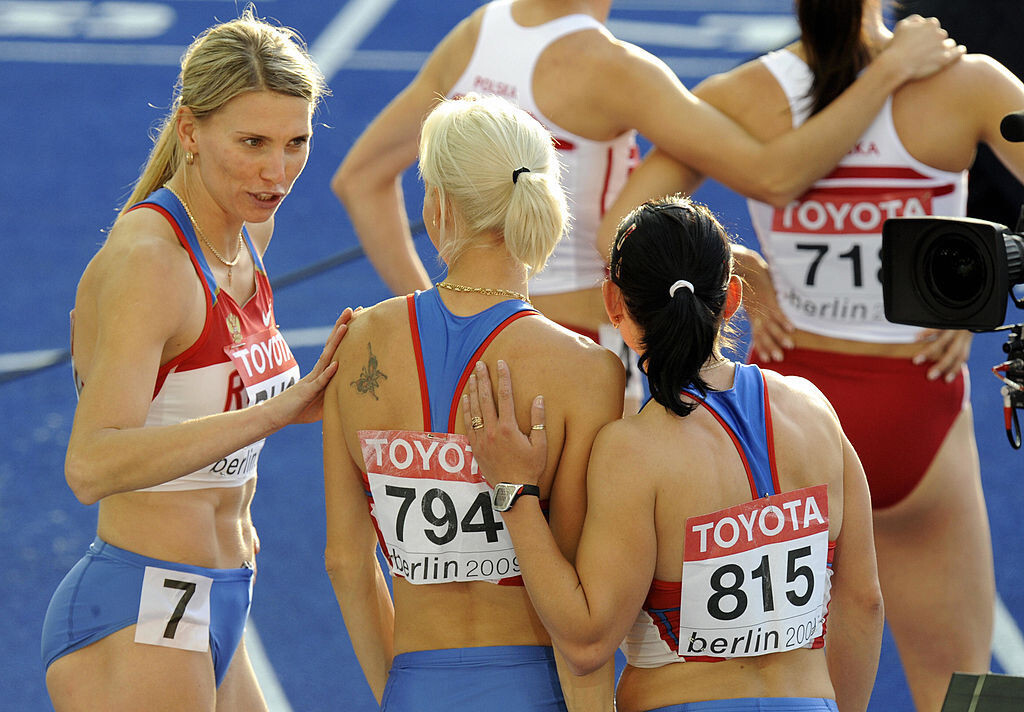
World Athletics President Sebastian Coe said:
“The world is horrified by what Russia has done, aided and abetted by Belarus. World leaders sought to avoid this invasion through diplomatic means but to no avail given Russia’s unswerving intention to invade Ukraine. The unprecedented sanctions that are being imposed on Russia and Belarus by countries and industries all over the world appear to be the only peaceful way to disrupt and disable Russia’s current intentions and restore peace.”
The Russian Athletics Federation (RusAF) has been suspended from competing in World Athletics events since 2015 due to multiple doping violations. They are currently not eligible to host World Athletics events or send teams to international championships until 2023.
Two weeks ago, on Feb. 17, World Athletics and its Doping Control Review Board (DRB) announced it had approved the applications of 33 Russian athletes to compete in international competition as neutral athletes (ANA) this year. Now, the 33 Russian athletes who received ANA status for 2022 are excluded from World Athletics Series events.
(03/01/2022) ⚡AMPby Marley Dickinson
Olympic Silver medalist Keely Hodgkinson will compete in the 800m and 4x400m relay for Great Britain at the World Athletics Indoor Championships
The 19-year-old, who broke Kelly Holmes' British 800m record at last summer's Tokyo Olympics, was part of a 33-strong squad announced on Tuesday.
British 400m champion Jessie Knight and Ama Pipi join Hodgkinson in the relay squad.

The World Indoors take place in Belgrade, Serbia, from 18-20 March.
Several athletes confirmed their places in the GB team at the UK Athletics Indoor Championships in Birmingham last weekend.

They included Andrew Pozzi, the 2018 world indoor champion, in the 60m hurdles, in-form Elliot Giles in the 800m and 2016 world indoor medalist Lorraine Ugen in the long jump.
Ed Faulds and Marc Scott, who have broken European indoor records this season, are also included in the team.
Olympic head coach Christian Malcolm said: "Those called up have earned their vest and I know they'll all represent their country with pride in Belgrade.
"We have a number of athletes who have really stepped up during this indoor season, setting a number of personal and season best, so it'll be exciting to see how they translate that into the Championship environment."
(03/01/2022) ⚡AMPby Athletics
World Athletics Indoor Championships Glagow 24
Welcome or fáilte as the Gaelic speakers in Scotland would say, to the digital home of the 19th edition of the World Athletics Indoor Championships taking place in Glasgow in 2024. With the competition fast approaching it’s nearly time to take your seat for one of the hottest sporting tickets in Scotland this year. Glasgow has a proven track record...
more...Double 5,000m world champion Helen Obiri turns attention to Istanbul Half Marathon
Hellen Obiri has no time to rest as she gears up for her next assignment at the Istanbul Half Marathon on March 27 in Turkey.
The 31 year-old made her half marathon debut here in 2020 where she ran an exceptional time of 1:04.51 that made her the fourth-fastest Kenyan of all-time over the distance.

Obiri has gained experience in half marathon running since her debut. She has put her focus on road races, she won the Great North Run in last September with a time of 1:07.42 and recently she displayed her great form when she finished second at the Ras Al Khaimah half marathon that was held last month, where she also improved on her personal best to 1:04.22.
The World Cross Country Champion is now ranked the fifth fastest half marathon runner of all time. “I am so happy to be returning to Istanbul. I ran my half marathon debut in this race last year and I hope I can improve both my position and my time on this occasion,” Obiri said.
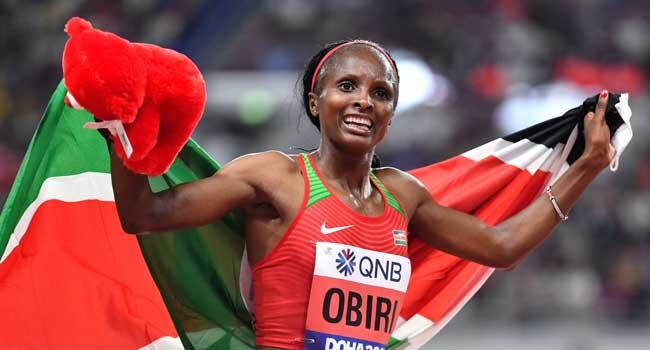
The race organizers have lined up for Ethiopians who have personal best of sub 1:07.00 that will also face Obiri in the coming three weeks time.
The 2021 Copenhagen half marathon champion, Tsehay Gemechu leads the four athletes as she comes to this race with the second fastest time on paper of 1:05.08.
The 23 year-old has an impressive half marathon record with four wins out of five races. Hawi Feysa was second behind Gemechu in Copenhagen in September, when she ran a personal best of 1:05.41 in her debut.
Nigsti Haftu and Bekelech Gudeta are the other title contenders and they come to this race with their personal best of 1:06.17 and 1:06.54. Haftu got her all time best at last year’s Valencia Half Marathon where she finished in sixth place while Gudeta got her lifetime best at this race in last year’s edition where she finished in position seven.
The two times Olympic 5000m silver medallist is ready to battle the four and she is looking forward to the challenge on the flat course.
“My training has been going on well but I know it will be a tough challenge as the field is very strong. I look forward to an exciting race in a beautiful city, “said Obiri.
The four athletes have been put together by the race organizer to chase the race course record of 1:04.02 that was set last year by Ruth Chepngetich from Kenya. This time still stands as the world record because it has been ratified by the World Athletics.
The current world half marathon record holder is Letesenbet Gidey from Ethiopia who broke the previous mark by more than a minute in 2021 in Valencia.
(03/01/2022) ⚡AMP
by John Vaselyne
N Kolay Istanbul Half Marathon
The Istanbul Half Marathon is an annual road running event over the half marathon distance (21.1 km) that takes place usually in the spring on the streets of Istanbul, Turkey. It is a IAAF Gold Label event. The Istanbul Half Marathon was first organized in 1987. After several breaks it was finally brought back to life in 2015 when the...
more...Simulate a race with “The Michigan” workout, this challenging session will help you handle the pace changes you'll experience during a race
The Michigan was developed in the 1970s by University of Michigan head cross-country coach, Ron Warhurst. A challenging combination of a fartlek run and tempo intervals, the workout simulates the pace changes you’re likely to experience during a race and has become a staple workout for many athletes.
Beginners, beware

Due to its high volume and the importance it places on pacing, this workout is far too much for a beginner runner. More advanced athletes, however, should give it a whirl, but be warned: it may take a few tries before you nail the pacing. As elite American middle-distance runner Will Leer said in this interview, “The Michigan is one of those workouts that grows on you over time…Early on it puts you at this level of discomfort that you’re sure is too much to endure for the 10km of running ahead of you. But when you finish a really good one, when you just nail it, there is hardly a better feeling in the world.”
To perform The Michigan properly, you need a track and a one-mile (1,600m) route on grass or roads. Ideally, one that contains a few rolling hills. The workout involves alternating between harder running efforts on the track and more even, tempo-paced intervals on the hilly one-mile loop. While the pacing for the off-track tempos will stay consistent throughout the workout, the track intervals will get progressively faster as the intervals get shorter.
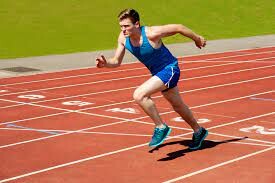
The workout:
The tempo miles throughout the workout should all be about a minute slower than your first mile on the track. Runners should also take a three-minute jog recovery between every interval (tempo runs included).
Warmup: 15-20 minutes easy jog, followed by form drills and strides
Workout: 1,600m @ 10km pace – 1 mile tempo – 1,200m @ 5km pace – 1 mile tempo – 800m @ 3k pace – 1 mile tempo – 400m all-out
Cooldown: 15-20 minute easy jog, followed by light stretching
(03/01/2022) ⚡AMPby Brittany Hambleton
Slow-twitch vs. fast-twitch muscle fibres: how your muscle type affects running performance
Each one of us has both slow-twitch and fast-twitch muscle fibres, but the ratio between them is different for every individual. While you can’t do much to change the distribution of your own muscle fibre types, new research shows you can adapt your training to your specific muscle make-up to prevent injuries and maximize your performance.
Slow-twitch vs. fast-twitch

Study author Eline Lievens explains that both fast-twitch and slow-twitch fibres are present in all of your muscles, but the proportions of each differ from person to person. This distribution determines your myotype. Slow-twitch fibres are meant for slow, long-lasting exercise, while fast-twitch are for fast and powerful actions.
Lievens says that although humans evolved to have a slower myotype, there is a large spread in muscle fibre type between humans, from 20 per cent to 90 per cent slow-twitch fibres. This distribution has led researchers to classify humans into three myotype categories: slow, intermediate or fast (or, as she describes them, albatross, ape or cheetah).

Slow-twitch fibres, as their name suggests, are meant for slow, long-lasting exercise, while fast-twitch are for fast and powerful actions. Slow-twitch fibres are also much more energy-efficient and require three times less energy than fast-twitch fibres to produce the same contraction. They are also much more resistant to fatigue and injuries, which is why they are so important for endurance athletes.
Every muscle in your body will have a mixture of slow and fast-twitch fibres, but the distribution won’t be the same everywhere. For example, your soleus (one of the muscles that make up your calves) is predominantly slow-twitch, while your triceps are predominantly fast-twitch. If you have a slow (albatross) myotype, however, you will have more slow-twitch fibres in all of your muscles than the average population.
For endurance runners (which Lievens defines as anyone running longer than 1,500m), having more slow-twitch fibres will improve your running economy, which will allow you to run longer without fatiguing. Athletes with the slow myotype also recover faster, which means they can take less rest between intervals during a workout and can train with more frequency day-to-day and week-to-week.
Due to the lower energy efficiency of fast-twitch muscle fibres, athletes with a fast myotype are at a greater risk for over-training or over-reaching because they are more likely to accumulate fatigue over time without adequate rest between sessions. These athletes also require a longer taper period ahead of their goal race than slow-myotype athletes.
Are you an albatross, ape or cheetah?
Unfortunately, finding out your exact muscle fibre type distribution isn’t very easy. For many years, the only way to learn your myotype was to have a muscle biopsy, which is an invasive and painful procedure. Lievens and her colleagues have developed a new, non-invasive scan technique using MRI imaging to determine your myotype, however, there are only two facilities offering these scans in Belgium or The Netherlands.
Of course, most of us won’t be traveling to Europe to have a muscle scan, but by listening to your body you can apply these principles to your training. Do you tend to recover quickly between intervals and workouts? Or do you need a day off between sessions or more recovery time between intervals in order to produce the same effort? It may take some trial and error, but understanding how your body responds to different types, intensities and volumes of running can help you tailor your training to your body so that you perform at your best and stay injury-free.
(02/28/2022) ⚡AMPby Running Magazine
Canadian Sasha Gollish breaks 40+ indoor mile world record
On Feb. 27, at the Ontario Masters Championships in Toronto, the city’s own Sasha Gollish smashed the previous women’s 40+ mile world record of 4:44.81 by six seconds, taking it down to 4:38.73. (The record has yet to be ratified.)
Gollish, who turned 40 in December, ran a personal best indoor mile time to break the previous record held by U.S. distance runner Sonja Friend-Uhl, which was set in 2012.
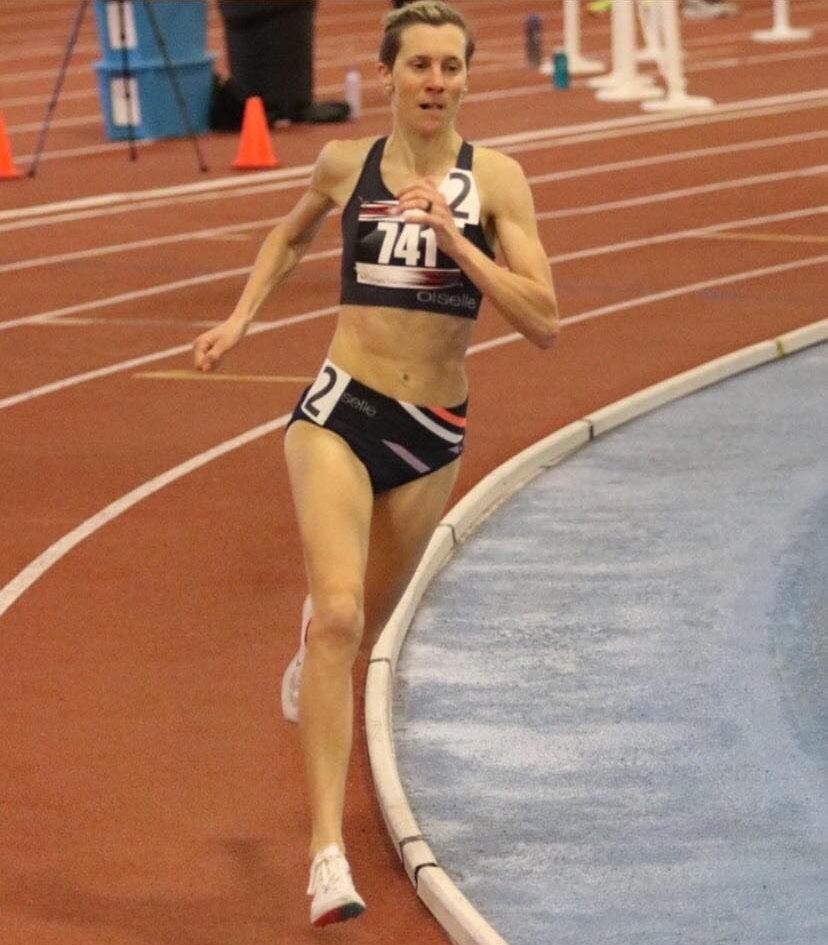
When Gollish was asked if being a world record holder has set in, she said, “not yet. “I am super satisfied with my result and ecstatic to be able to be competitive again on the track.”
Gollish, who has competed in events from the 800m to the marathon, represented Canada in the marathon at the 2019 World Championships in Doha. “I have switched my training up over the last two years and began focusing more on middle-distance running,” she says. “Sometimes you get can get so wrapped up in training, I’ve been focused on having fun.”

Something Gollish has added to her winter training in recent years is Nordic skiing. This activity is a popular cross-training exercise for many runners as it strengthens the core, quads and hamstrings without putting too much pressure on your joints.
Gollish returned to running eight years ago, when she was 32, after taking a 12-year hiatus from the sport. But her love for running dates back to her childhood, running alongside her mom and sister annually at the Run For the Cure event. Two years into Gollish’s return, she won a bronze medal in the 1,500m at the 2015 Toronto Pan-AM Games.
When asked about her ambitions for 2022, Gollish mentioned she just wants to continue having fun and pushing herself.
(02/28/2022) ⚡AMPby Marley Dickinson
Six foods you thought were unhealthy, but aren’t, runners, don't leave these items out of your cart
Nutrition can be confusing. Foods we’re told are good for us one day get black-listed the next. The truth is, all foods can be a part of a healthy diet, but there are a few, in particular, you may be avoiding for no reason. The following items often get left of runners’ grocery lists, but it’s time to start tossing them into your cart.
1.- White potatoes
White potatoes are often viewed as the less-healthy cousins of sweet potatoes, but that’s doing them a disservice. White potatoes actually contain twice as much potassium as the orange variety and are a great source of carbohydrates, which makes them an excellent source of post-run nutrition.

2.- Popcorn
Popcorn is a great high-carbohydrate snack for runners. While the movie theatre variety should probably be left for an occasional treat, popping some at home with your own toppings is a great healthy snack for runners.

3.- Salt
It’s important to replace the electrolytes (sodium and potassium) you lose through sweat. Runners sweat a lot when they run, even in the winter, which means topping up their sodium levels is an important part of proper recovery. While you still should be mindful of the amount of sodium in some processed foods, runners don’t need to fear the salt shaker.
4.- Red meat
Red meat has gotten a bad rep over the last several years, and many people believed eating it increased your risk for several health problems, including cancer. Recent studies have dismantled that myth, and research has shown that as long as it’s eaten in moderation (less than 70 g. Per day), it poses no risk to your health.
For runners, red meat is an excellent source of iron, which is crucial to running performance because it plays an important role in transmitting oxygen in your blood. Many runners struggle with iron deficiency, so those who are omnivores shouldn’t be afraid to have some steak once in a while.
5.- Full-fat dairy
For many years, whole-milk dairy was thought to be too high in fat to be healthy and everyone switched to skim milk and fat-free products. A 2015 study debunked that myth and found that the low or no-fat varieties weren’t any healthier, and people who consumed high-fat dairy weren’t at any greater risk for health problems.
Of course, you probably shouldn’t eat a cup of full-fat yogurt before a run, but when consumed in moderation, whole milk dairy can be much more satiating and help runners meet their daily calorie needs.
6.- White rice and pasta
We’re often encouraged to go for the whole grain varieties when purchasing items like rice and pasta, but for runners, this isn’t always your best option. Runners need to eat a lot of carbohydrates to fuel their activity, but consuming exclusively whole wheat varieties can sometimes result in eating too much fibre, which could lead to tummy troubles on their runs. This is especially true for runners who are carb-loading in the days before a goal race, when they’re eating an even greater amount of carbohydrates than usual.
It’s still important for runners to consume whole grain products, but if you’re struggling with gas, bloating, and other forms of GI distress when you’re running (or any other time), it’s possible that you’re getting too much fibre. Try substituting some of your whole grain products for the white variety to ease your stomach woes.
(02/28/2022) ⚡AMPby Brittany Hambleton
Try kilometer countdowns for your next speed workout
If you’re training for a 5K or 10K and are getting bored of doing the same four or five workouts over and over again, try this one on for size: kilometre countdowns. It’s fun, it’s got some off-distance intervals to change things up, and it can be done at pretty much any point during your training block.
The workout

The idea behind this workout is to gradually get faster as the intervals get shorter, so make sure you choose your starting point wisely. Ideally, you do the first interval at 5K pace and speed up from there, but if you’re not quite there yet, you can start closer to 10K pace.
This workout is a great way to practice running faster on tired legs. It also gives you a bit of a mental break, because it gets the longest intervals over with right at the beginning, so you can fly home to the finish. Ideally, you should start each interval at either the 400m startline, or the 200m startline to make it easier to keep track of laps. With that in mind, your recovery should be an easy jog or walk to your starting point, never taking more than 400m or less than 200m of recovery.

Warmup: 10-15 minutes easy jog, followed by form drills and strides
Workout: 1,000m (400m jog recovery), 900m (300m jog recovery), 800m (400m jog recovery), 700m (300m jog recovery), 600m (400m recovery), 500 (300m recovery), 400m (400m recovery), 300m (300m recovery), 200m
Cooldown: 10-15 minutes easy jog, followed by light stretching
(02/28/2022) ⚡AMPby Brittany Hambleton
Ethiopian runner Yalemzerf Yehualaw has clocked 29:14 for a women’s world 10km record in a mixed race
Yalemzerf Yehualaw has broken the women’s 10km road record in Castellon, Spain, with a time of 29:14.
The 22-year-old sliced 24 seconds from Kalkidan Gezahegne’s world record of 29:38 on Sunday (Feb 27) in Spain.

It comes after a couple of record-breaking near misses. In the Antrim Coast Half-Marathon last September she set what appeared to be a world record of 63:43 before it transpired the course was 54 metres short. Then, in the Great Ethiopian Run last month, she seemingly clocked an African all-comers’ record of 30:14 at high altitude in Addis Ababa, only to see the time adjusted to 31:17 due to a timing error.
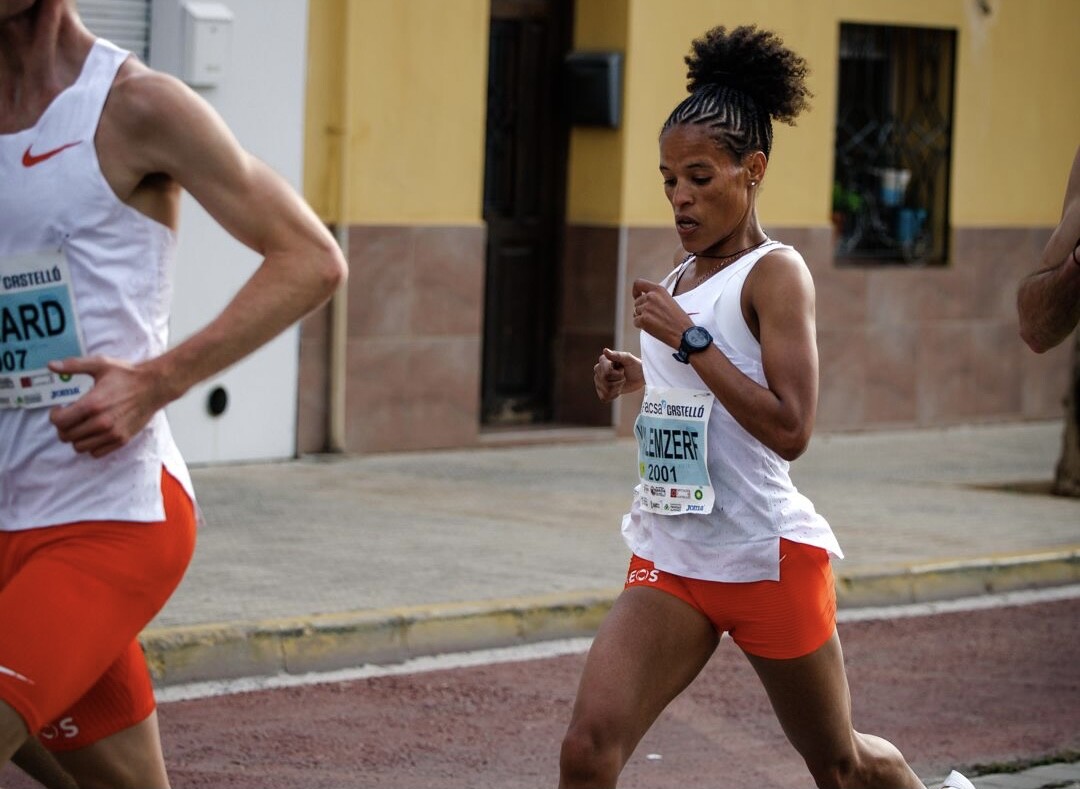
Yalemzerf said: “Today a dream came true. I felt really great in the race. The first 5km was very fast. I was struggling a little bit in the second 5km but I was still able to maintain a high pace.
“I’m so happy with this record! I want to thank the race organisers for this fantastic opportunity,” added Yehualaw, who ran splits of 14:28 and 14:46.
Yehualaw won a bronze medal at the World Half Marathon Championships whereas last year she became the second fastest women’s half-marathon runner in history, clocking 63:51 in Valencia to finish behind the world record run of her NN Running Team team-mate Letesenbet Gidey.
(02/27/2022) ⚡AMPby Athletics Weekly
10k Facsa Castello
The 10k Facsa Castello is a sporting event that has grown exponentially to become one of the most revelant of the regional calendar. Every year, more participants! The 10K FACSA Castelló has maintained an exponential increase year after year in the number of registered participants, also accompanied by excellent evaluations by our runners. The test has established itself as one...
more...Josh Kerr smashes Peter Elliott’s UK indoor mile record
Olympic 1500m bronze medallist clocks 3:48.87 in Boston to go No.3 on the world all-time rankings
After finishing third in the Olympic 1500m final last year behind Jakob Ingebrigtsen and Timothy Cheruiyot, Josh Kerr boldly stated this month that he is going for gold at the World Championships in Eugene in July.
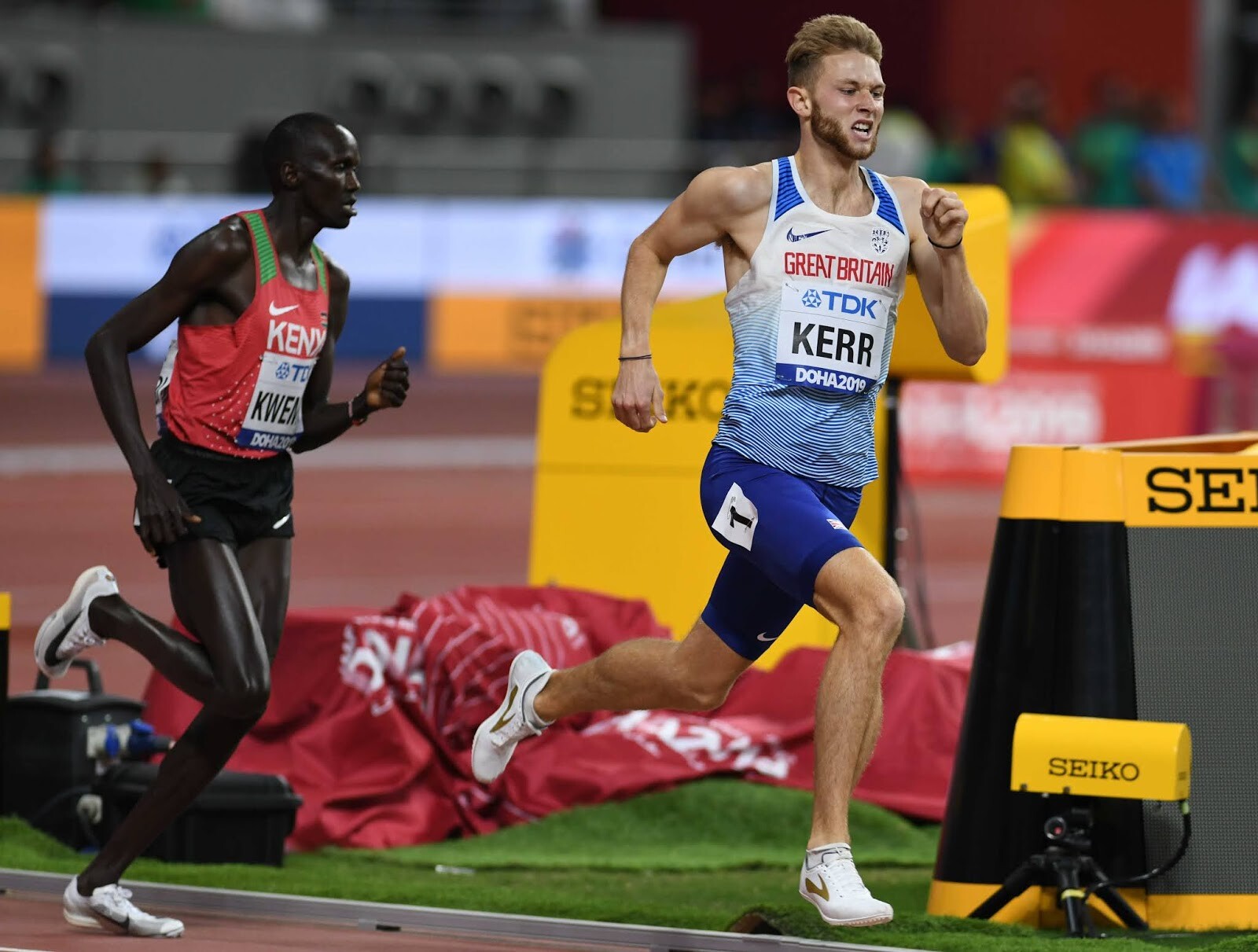
On Sunday (Feb 27) in Boston he showed why he carries such confidence when he ran 3:48.87 for the mile at the Boston University Last Chance Meet.

The time puts him No.3 on the world all-time rankings behind Yomif Kejelcha’s world record of 3:47.01 and Hicham El Guerrouj’s 3:48.45.
It also smashes the long-standing British record of 3:52.02 held by Peter Elliott – a mark which was set at East Rutherford in 1990.
Elliott incidentally also holds the British 1500m indoor record with 3:34.20 but it is thought Kerr may have run quicker en route during his mile.
In addition, Kerr’s time is a European record, as it breaks Eamonn Coghlan’s 3:49.78, which was also set in East Rutherford back in 1983. At the time Coghlan was the first man to run a sub-3:50 mile indoors and even now, 39 years later, Kerr has become only the seventh athlete to achieve the feat.
Kerr’s splits saw him pass the first lap in 58.15 and halfway in 1:56.75 before he ran a trademark strong second half of the race to go through three laps in 2:52.04 (55.3) before finishing with a 56.8 final lap.
(02/27/2022) ⚡AMPby Athletics Weekly


